





Academic Authors: Sneha Sharma, Anuj Gupta, Sayani Sarkar, Chandni Bhargava
Creative Director: Bhavna Tripathi
Book Production: Vishesh Agarwal, Amisha Gupta
VP, Learning: Abhishek Bhatnagar
All products and brand names used in this book are trademarks, registered trademarks or trade names of their respective owners.
© Uolo EdTech Private Limited
First impression 2025
This book is sold subject to the condition that it shall not by way of trade or otherwise, be lent, resold, hired out, or otherwise circulated without the publisher’s prior written consent in any form of binding or cover other than that in which it is published and without a similar condition including this condition being imposed on the subsequent purchaser and without limiting the rights under copyright reserved above, no part of this publication may be reproduced, stored in or introduced into a retrieval system, or transmitted in any form or by any means, electronic, mechanical, photocopying, recording or otherwise, without the prior written permission of both the copyright owner and the above-mentioned publisher of this book.
Book Title: Dawn Teacher Manual Level B Part-II
ISBN: 978-81-985187-0-5
Published by Uolo EdTech Private Limited
Corporate Office Address:
85, Sector 44, Gurugram, Haryana 122003
CIN: U74999DL2017PTC322986
Illustrations and images: www.shutterstock.com, www.stock.adobe.com and www.freepik.com
All suggested use of the internet should be under adult supervision.
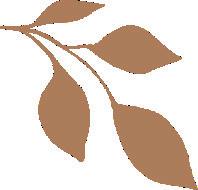
he early years of education serve as the cornerstone for a child’s cognitive, social, and emotional development. This crucial stage is not solely about literacy and numeracy but about enabling holistic growth, ensuring that children develop into confident, inquisitive, and well-rounded individuals. The DAWN curriculum has been meticulously designed to be in alignment with the National Education Policy (NEP) 2020 and the National Curriculum Framework for Foundational Stage (NCF-FS) 2022, thereby integrating the Panchakosha framework—a five-dimensional approach that nurtures physical, emotional, intellectual, social, and moral development in young learners—within the scope of this curriculum.
The curriculum follows a structured 180-day teaching plan, ensuring a well-paced and progressive learning journey. The 4+1 Teaching Model offers a balanced approach, with four days dedicated to new learning and the fifth day—the Catch-up Carnival—focused on revision and personalised support. This model ensures that every child consolidates learning effectively while receiving additional reinforcement where needed.
A Curriculum Rooted in the Panchakosha Framework
The DAWN curriculum is not merely a sequence of lessons; it is an experiential and thoughtfully designed learning journey that strengthens all five dimensions of the Panchakosha framework:
1. Physical Development – Through movement-based activities, action rhymes, gross and fine motor skill exercises, yoga, and simple meditation practices, children enhance coordination, balance, and self-regulation.
2. Social and Emotional Growth – Circle Time discussions, role-play, games, storytelling, and collaborative activities encourage empathy, cooperation, self-expression, and social awareness.
3. Intellectual Growth – The structured and age-appropriate progression of literacy and numeracy concepts, moving from concrete to abstract understanding, strengthens problem-solving skills, logical thinking, and foundational cognitive abilities.
4. Spiritual and Moral Development – Stories, rhymes, discussions, and guided reflections help children understand fundamental values such as kindness, honesty, patience, and respect for both people and the environment. Guided yoga and meditation help children stay calm, focus better, and feel happy.
5. Sensory and Experiential Learning – The DIY section provides opportunities for art and craft, STEM-based explorations, rhymes, stories, and interactive games, ensuring hands-on engagement, creativity, and imaginative thinking.
The curriculum has been carefully structured for ease of implementation, ensuring that lessons are engaging, developmentally appropriate, and seamlessly executable with minimal resources. Pro tips, error alerts, and best-practice strategies equip teachers with the tools needed to deliver lessons effectively while maintaining a structured and stimulating learning environment.
This manual is not just a teaching guide but a comprehensive support system designed to make classroom instruction efficient, engaging, and impactful. Each lesson follows a well-defined sequence, ensuring a smooth flow of activities that build upon prior knowledge, making learning meaningful and enjoyable.
By following this manual, teachers can confidently create a nurturing, inclusive, and stimulating learning environment, ensuring that every child progresses at their own pace while developing a strong foundation for future learning and personal growth. Through this collaborative journey, let us empower young learners to explore, discover, and thrive—one meaningful lesson at a time.



• Structured 180-Day Plan – The curriculum is designed with 150 teaching days dedicated to introducing and developing new concepts, and 30 revision days to reinforce learning and strengthen the understanding of one concept before moving forward to the next.
• 4+1 Teaching Model – A systematic and balanced approach where the first four days in a week focus on new learning, ensuring concept clarity and skill-building, while the fifth day is dedicated to revision and reinforcement. This structured progression helps children absorb, apply, and retain knowledge effectively.
• Catch-up Carnival: A Dedicated Revision and Support Day – The 5th day of every week is designed to consolidate learning and provide targeted support through:
Revisiting and Strengthening Weekly Learning – A structured review session that ensures children have the opportunity to recap and reinforce concepts introduced during the week.
Providing Additional Support for Struggling Learners – Carefully designed guidance, scaffolding techniques, and engaging revision strategies to help children who need extra time and practice to grasp key ideas.
• Strong Emphasis on Core Subjects – The curriculum provides comprehensive coverage of General Awareness, Literacy, and Numeracy. Every lesson is carefully designed to enhance cognitive skills, logical reasoning, and problem-solving abilities, ensuring children develop a strong academic foundation.
• Dynamic Circle Time Engagement – Thoughtfully structured Circle Time activities to kickstart the day on a positive note, and promote physical agility, emotional intelligence, social skills, moral values and spiritual awareness. Teachers are provided with a variety of interactive discussions, songs and rhymes, stories and role play scenarios, guided meditation, yoga practices, and mindfulness exercises to help children kickstart their day on a positive note.
• Hands-on Learning through the DIY Section – A dedicated enrichment segment at the end of each day, the DIY section offers STEM explorations, Art & Craft activities, storytelling sessions, song and dance, fun activities and interactive games. These experiential activities not only encourage creativity, motor development and sensory learning, but also add a flavour of joy in day-to-day learning.
3. Engaging Learning Approach: A Structured and Interactive Experience
•

Seamless Daily Flow – Each day follows a well-structured sequence, ensuring a smooth transition between activities and concepts. This thoughtful flow allows children to grasp new ideas naturally while reinforcing prior learning in a logical and engaging manner.


• Step-by-Step Lesson Guidance – Clear, concise, and easy-to-follow lesson plans provide teachers with structured guidance, ensuring confident, organised, and effective lesson delivery.
• Multisensory Learning Approach – Lessons are designed to stimulate multiple senses, incorporating visual, auditory, and kinesthetic activities. This approach enhances retention, strengthens comprehension, and makes learning more dynamic and interactive.
• Progressive & Play-Based Activities – Carefully curated play-based learning experiences align with children's developmental needs, ensuring a smooth transition from concrete exploration to pictorial representation and symbolic understanding. This gradual progression builds confidence and deepens understanding.
• Pro Tips for Teachers – Expert-backed teaching strategies and classroom management tips help educators enhance student engagement, encourage participation, and maximise learning outcomes.
• Error Alerts for Caution – Carefully curated guidelines on common teaching pitfalls ensure that lessons are delivered smoothly and effectively, helping teachers avoid misconceptions and common errors or mistakes.
• Creative Homework Ideas – Engaging, hands-on, and age-appropriate homework activities encourage playful learning beyond the classroom, reinforcing key concepts in a fun and meaningful way.
1. Use Fun Attention Getters – Clap patterns, call-and-response chants, or simple signals like “1-2-3, eyes on me!” keep kids engaged.
2. Use a Soft Signal for Attention – Instead of raising your voice, use a bell, a clapping pattern, or a simple phrase like "Hands on your head!"
3. Print-rich Environment – Use pictures and words to label materials in the classroom for creating a print-rich environment.
4. Create Clear Rules – Keep the rules simple and display them with pictures so kids can easily remember.
5. Use Positive Reinforcement – Notice good behavior and give compliments or badges often to encourage more of it. Praise good behaviour by saying "I love how quietly you are sitting!" instead of pointing out who isn’t.
6. Use Visual Schedules – A daily routine chart helps kids know what to expect and feel secure.
7. Make Transitions Exciting – Use songs or movement games to smoothly switch between activities.
8. Use Colour Cues for Noise Levels – Display a red sign for silent work, yellow for low talking, and green for discussion time.
9. Keep Instructions Short & Sweet – Young learners need clear, simple directions. Too many words can confuse them.
10. Use Movement Breaks – Brain breaks, stretching, or dancing help keep little bodies and minds active.
11. Have a Magic Word – A special word (like “popcorn”) can signal kids to listen or freeze.
12. Keep Supplies Organized – Label bins and shelves with pictures so kids can easily find and put away materials.
13. Use a Talking Object – Pass around a soft toy or ball; only the person holding it can talk.
14. Use Ice-cream Sticks – Write each student's name on an ice-cream stick, randomly pick one, and invite that child to answer.
15. Set Up a Turn-taking Chart – Write names in order so kids know when their turn is coming.
16. Mix Up Seating Arrangements – Change partner or group work setups to keep children engaged and encourage teamwork.
17. Have a "Mystery Motivator" – Randomly surprise children with a small reward for good behaviour (e.g., extra playtime).
18. End the Day on a Happy Note – Have a short "What did you learn today?" or "One thing that made you smile!" discussion before leaving.




Circle Time
General Awareness
Riddle Time
Helping My Family
General Awareness, page 24
Foundational Literacy Find Out Literacy Workbook, page 19
Foundational Numeracy Number 5
DIY A Capsicum
LO: Children will listen to simple riddles and guess the answers.
Resources: A soft toy
1. Warm-Up: Greet the children and tell them that you will play a game of riddles. Then, say a riddle, ask them to guess, and after a few guesses, tell them the answer. For example, say: I am round, red, and grow on trees. What am I? (Apple).
2. Riddle Time: Pass the soft toy around. When you say ‘STOP,’ the child holding the toy solves a riddle. Cheer for correct answers and repeat with different riddles until every child gets a turn. Examples of some riddles are:
• I shine bright in the sky during the day. What am I? (Sun)
• I am small, I say ‘meow,’ and I like to chase mice. Who am I? (Cat)
• I am sweet, yellow, and monkeys love me. What am I? (Banana)
• I have wheels and I take you to school. What am I? (Bus/Car/Van)

Numeracy Skillbook, page 27
Art and Craft, page 8
LO: Children will identify and talk about different things they do to help at home.
Resources: General Awareness, page 24; sticker sheet (from Skillbook)
Introduction
1. Story Time: Narrate the short story Helping Makes Us Happy with expressions, emphasising how Ravi and Maya help at home with small tasks.
2. Sharing Time: Ask the children to share one thing they do at home to help their family. Guide them in forming sentences, for example: I keep my books neatly. Ensure that every child gets a chance to speak.
Helping Makes Us Happy
Every day at dinner, Ravi and Maya help their parents set the table. Ravi brings the spoons and Maya brings the bowls. After dinner, they wash their plates, spoons, and bowls. They also help in cleaning the table.
3. Helping My Family: Ask the children to open page 24 of the General Awareness book. Discuss each picture given there. Then, help them paste a smiley sticker beside the tasks they do at home.
You may ask a few children to come forward and show what they do to help at home by enacting it in class. You may model it yourself first.







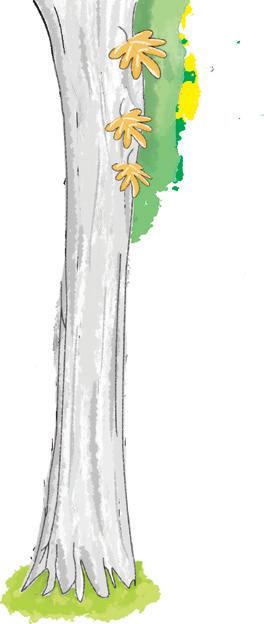


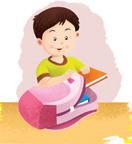

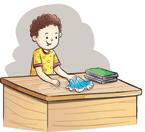
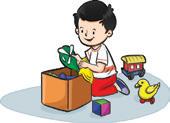
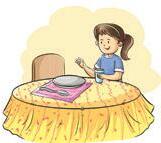
LO: Children will identify pictures and complete their names by recalling the first letter.
Resources: Literacy Workbook, page 19; some objects or pictures of objects starting with letters A to H
1. Warm-Up: Keep the objects on the teacher’s table. Call the children one by one and ask them to find an object that starts with a given letter (e.g.: Can you find something that starts with ‘B’?). Encourage them to say the object’s name loudly, emphasising the first sound (e.g., /b/ /b/ ball). Repeat for the other letters.

2. Identifying the First Letter: Write a word on the board with the first letter missing (e.g., __ p p l e). Show the object and ask children to guess the missing letter. Repeat with a couple of other things so that children can understand the exercise.
3. Find Out: Then, ask children to open page 19 of their Workbook. Guide them to name the objects, identify the first letter, and complete the words by writing the correct letter in the blanks.
LO: Children will be able to count 5 objects and trace the number 5.


Resources: Numeracy Skillbook, page 27; countable objects like beads, blocks, crayons, etc.
1. Warm-Up: Recite the rhyme on number 5 with expression and voice modulation. Repeat it 2–3 times with the children. You may ask them to do the actions of jumping or clapping, if possible.
Number 5
Five little fingers on my hand, Five little toes to help me stand! Five little jumps, high in the air, Five little claps everywhere! 1, 2, 3, 4, 5, A fun high five to number 5!

2. Counting 5: Show 5 objects and guide children to count them aloud: 1-2-3-4-5—5 crayons. Repeat with different objects 3–4 times. Then, ask them to count and show 5 fingers.
3. Tracing Number 5: Write number 5 on the board Then, ask the children to trace it in air with their index fingers.
4. Number 5: Ask the children to open page 27 of the Skillbook. Guide them to count 5 monkeys, trace the dotted lines with crayons, and write number 5 in the blank boxes.

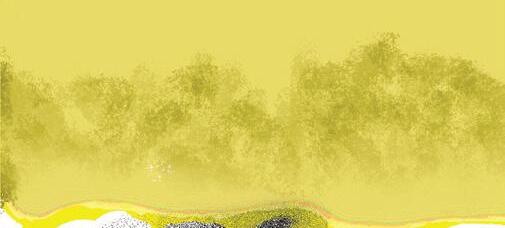





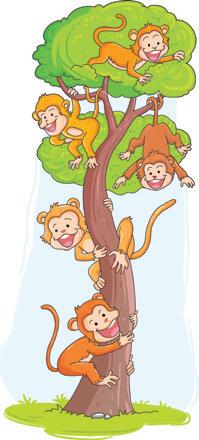

Take a plate of flour and use your index finger to trace the number 5 on it.
LO: Children will identify a capsicum and colour it with thumbrints.
Resources: Art and Craft, page 8; a real capsicum or its picture; a bowl of green watercolour
1. Warm-Up: Show a green capsicum and ask: Do you know the name of this vegetable? What colour is it? Take a few responses and say: This is a capsicum, and it is green.
If children want to answer the name in their home language, allow them to do so.
2. A Capsicum: Ask children to open page 8 of the Art and Craft book. Guide them to dip their thumbs in green watercolour and fill in the capsicum with thumbprints.



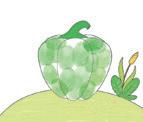

If available, show the children red and yellow capsicums as well after the activity.
Bring a few pieces, or slices, of vegetables and fruits like carrot, potato, ladyfinger, or apple.
Domain
Circle Time
Topic of the Day
Yoga—Triangle Pose
General Awareness Helping at School
Foundational Literacy Do and Learn Literacy Workbook, page 20
Foundational Numeracy Number 5—Practice Numeracy Workbook, page 14
DIY Vegetable/Fruit Print Art
LO: Children will practise simple yoga movements to improve flexibility, balance, and relaxation.
Resources: Soft music
1. Triangle Pose: First, demonstrate the pose to the children. Then, ask them to follow your instructions to do this yoga pose.
• Stand with the legs apart like the letter A.
• Stretch the arms sideways.
• And then bend sideways to touch one foot while raising the other arm up.
• Switch sides and repeat 4–5 times.
2. Cool Down: Ask the children to stand still, take in deep breaths, and then gently shake their hands and legs to relax.

LO: Children will identify different tasks they can do to help at school.
Resources: Objects commonly found in the classroom (crayons, books, toys)
Introduction
1. Warm-Up: Point to a neatly stacked pile of books or to school bags kept in a line. Then, say: We should always keep our classroom neat and clean. That is one way we can help at school. Then, ask: Can you think of one way to help at school? Listen to all the answers.
2. Rhyme Time: Sing the Clean Up, Clean Up rhyme 3–4 times. Ask the children to sing along with you.
Clean Up, Clean Up
Clean up, clean up, toys on the floor, Clean up, clean up, let’s tidy some more! Clean up, clean up, books on the shelf, Clean up, clean up, all by ourselves! Clean up, clean up, make the room bright, Clean up, clean up, everything’s right!

3. Helping Hands Game: Scatter some items (crayons, books, toys) around the room. Say: Oh no! Our classroom is untidy! Ask children to work together to keep the things back in their correct places tidily. Praise them for their effort.
4. Act It Out: Call small groups forward and describe a few situations, such as: a friend drops a box of crayons, chairs are out of place, etc. Ask: What should we do? Let them act and show how they would help. Cheer for each group’s effort.







LO: Children will identify letters e to h.
Resources: Literacy Workbook, page 20; flashcards of letter E–H (from Skillbook); objects, or pictures of objects, starting with letters E–H
Introduction
1. Warm-Up: Give the children the flashcards. Call out any of the letters between e to h and ask them to hold up the corresponding flashcard. Check that the children have shown the correct flashcard.
2. Matching the Correct Letters: Write the small letters e to h on the floor. Then, call the children one by one and ask them to identify objects starting with those letters and place them next to the corresponding letter. Make sure that all the children participate.
3. Do and Learn: Ask children to open page 20 of the Workbook. Help them identify the letters and circle the correct objects that start with each letter. Then, ask them to identify and cross out the incorrect letter from the given set.
LO: Children will identify, count, trace and write the number 5.


















Resources: Numeracy Workbook, page 14; some countable objects (beads, pencils, etc.)
Introduction
1. Warm-Up: Sing the rhyme on number 5 from the previous session. Encourage children to join in and repeat 2–3 times.
2. Counting 5: Write numbers 1–5 on the board, in a random order. Call children one by one to identify and circle number 5, then count five objects. Ensure everyone participates.
3. Tracing Number 5: Write number 5 on the board and guide children to trace it in air with their index finger. Then, let them take turns tracing it on the board.
4. Number 5: Ask children to open to page 14. Help them to count the 5 kites and the 5 balloons, trace the number 5, and then write 5 in the empty boxes.




Take any flower and some watercolour. Dip the flower in the watercolour and make 5 flower prints.
LO: Children will make imprints of vegetables and fruits.
Resources: Halves or slices of fruits/vegetables brought from home, paint, paintbrushes, trays, drawing sheet (per child)
1. Introduction: Gather children and show them the halves of fruits/vegetables. Draw their attention to the different patterns.
2. Making Prints: First, show the children on how to dip the slice in watercolour and print it on paper. Then, distribute the paper to them. Encourage them to use different colours and different vegetables to create beautiful patterns.


Circle Time
General Awareness
Foundational Literacy
Number Safari
Colour Yellow
Letter Stories E, F, G, H
General Awareness, page 25
Foundational Numeracy Do and Learn Numeracy Skillbook, pages 28–29
DIY Story: Who Drank the Milkshake? Rhymes and Stories, pages 15–19
LO: Children will be able to count the numbers 1 to 5.
Resources: Number cards for 1–5 (from Skillbook); toys or simple objects found in the classroom (duster, pencils, etc.)
1. Warm-Up: Greet the children warmly and say: Let us practise numbers 1 to 5! Hold up number cards one at a time and ask children to say the number aloud. Then, randomly point to different numbers and ask: What number is this? Encourage everyone to participate.
2. Number Safari: Place objects on your desk. Then, call one child forward, show a number card, and ask: Can you search and find 3 crayons on my desk? Then, let them look for the objects and ask them to count the objects when they find them. Ensure everyone gets a chance.

LO: Children will identify objects that are yellow in colour.
Resources: General Awareness, page 25; yellow-coloured objects or their pictures (lemon, ball, crayons, toys, banana)
1. Rhyme Time: Start by singing the rhyme Yellow Yellow, Bright and Fun. Encourage children to sing along. Repeat 3–4 times.
Yellow Yellow, Bright and Fun
Yellow, yellow, bright and fun, Like the sunshine and the sun!
Bananas, lemons, shining bright, Ducks and flowers, pure delight!
2. Identifying Yellow: Gather the children and say: Today, we are going to meet a very bright and happy colour. Can you guess what it is? Let them guess and then say: Yellow! Show yellow objects one by one, emphasising the word, Yellow! Ask questions, such as: Have you seen a banana? or Do you like the sun? What colour are they? Encourage responses.
3. Colouring the Mango Yellow: Ask children to open page 25 of the General Awareness book. Ask them to name the fruit. Then, ask them to colour it. Help them circle the yellow objects given at the bottom of the page.
You may plan to have a Yellow Day where everyone wears something yellow—clothes, hats, or accessories. You can even decorate the classroom with yellow items to reinforce colour recognition in a memorable way! Pro Tip







LO: Children will identify words starting with E, F, G and H.

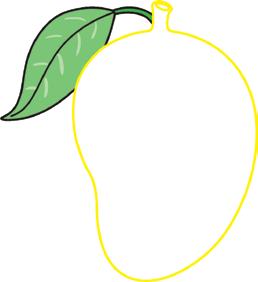
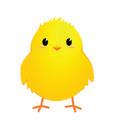




Resources: Story Cards (Letters E, F, G, H); flashcards of letters E–H (from Skillbook)
1. Warm-Up: Call out the letter sound of the letters E to H, for example /f/, and ask children to hold up the correct flashcard. This will help in revising and reinforcing the beginning sounds of these letters.
2. Story Time: Show the picture from the Letter E story card and ask children to name objects starting with the /e/ sound (engine, elephant, egg, etc.). Read the story aloud, emphasising the words beginning with /e/, and ask children to repeat them. Do the same for letters F, G, and H.




Find and underline words starting with E, F, G, and H in a storybook or a newspaper.
LO: Children will recognise, count, and associate numbers 1 to 5 with real-life objects.
Resources: Numeracy Skillbook, pages 28–29; flashcards of 1 to 5 (from Skillbook); sticker sheet (from Skillbook)
1. Reinforcing the Concept: Distribute number flashcards to the children. Call out the numbers 1 to 5 in random order. Ask children to count the dots on their cards and hold up the correct number.

2. Doing and Learning: Ask children to open page 28 of the Skillbook. Guide them to count and write the number of fruits. Then, help them count the children, peel and paste the correct number of sticker caps, and write the missing numbers.
3. Drawing Apples: On page 29, ask children to draw the correct number of apples on the tree and write numbers 1 to 5. Assist as needed. DIY








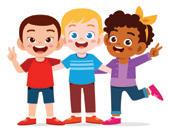










LO: Children will listen to and understand the story Who Drank the Milkshake?
Resources: Rhymes and Stories, pages 15–19; a picture of or a toy monkey
1. Something to Drink: Gather the children and explain the game. Say: I will name different things. If it is something you can drink, show a thumbs up! If not, keep your hands down. Call out items like milk, juice, water, apple, chair, lemonade, and soup.
2. Picture Talk: Show the pictures in the story and talk about them. You may ask simple questions, such as:
Page 15: What do you see in this picture?
Pages 16–17: What is Milo’s sister’s name? / What is Mother making? Pages 18–19: What is Milo doing? Is Mother angry or happy? Encourage children to observe carefully and share their responses.
3. Read Aloud: Read the story Who Drank the Milkshake? aloud with expressions and voice modulation. Pause at every page to show the pictures while reading.
Do NOT discuss the story with the children in this session.





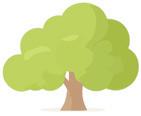







Circle Time
General Awareness
Tongue Twisters
Making A Yellow Sunny Sun
Foundational Literacy Letter Stories A–H
Foundational Numeracy Numbers 1–5
Numeracy Workbook, pages 15-16
DIY Story: Who Drank the Milkshake? Rhymes and Stories, pages 15-19
LO: Children will be able to say a couple of simple tongue twisters enabling pronunciation, and fluency.
1. Warm-Up: Tell the children that they will learn two simple tongue twisters. Then, recite a tongue twister yourself, such as: A proper copper coffee pot. You may say a tongue twister in vernacular as well.
2. Tongue Twisters: Write these tongue twisters on the board:
• Four fine fresh fish for you. (You may use ‘fruits’ instead of ‘fish’).
• She sells sea shells on the seashore.
Then, read them out to the class, slowly. Ask them to read along with you at least twice. Then, read them fast. Finally, call the children one by one, give them one of the tongue twisters, and let them try to say it without any mistakes. Appreciate them for their effort.

LO: Children will identify and associate the colour yellow through art and craft.




Resources: Yellow objects (banana, sunflower, toy, etc.); crayons; a cutout of a circle from a yellow sheet (1 per child); thin strips of yellow paper (10 per child); glue
1. Rhyme Time: Begin by reciting the rhyme Yellow Yellow, Bright and Fun from the previous session. Recite 2–3 times and ask the children to sing along with you.
2. Yellow Hunt: Ask children to look around the classroom and find something yellow. As they find the objects, encourage them to say: This is yellow! If needed, you may begin this activity by doing it yourself first.

3. Making a Yellow Sun: Distribute the cutouts and strips amongst the children. Then, go around the class, helping them stick the cutout and the strips to make the sun and its rays. Then, let them draw a happy face on their sun using crayons.
Display their suns on a wall to celebrate their work.







LO: Children will identify the letters A–H and say words starting with A–H.
Resources: Story Cards (Letters A–H); flashcards of A–H (from Skillbook)

1. Letter Challenge: First, distribute the flashcards. Then, ask the children to hold up the correct flashcard as you call out the letters A–H in random order.
2. Letter Stories: Recall the letter stories with the children. Emphasise the words that start with the letters A–H and ask children to repeat them for reinforcement.
3. Matching with Letters: Write the letters A–H in a random order on the floor. Say a word from a story card (e.g., apple). The children must find and stand next to the correct letter (A). Repeat with different words and letters.
LO: Children will count and identify the symbol of numbers 1–5.
Resources: Numeracy Workbook, pages 15–16

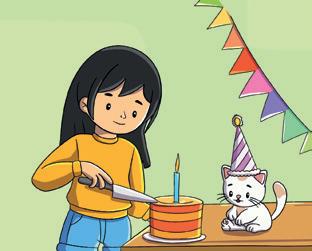


1. Reinforcing the Concept: Clap a random number of times (between 1–5) and ask the children to count aloud as they listen. Then, let individual children take turns clapping while the others count along. Repeat to reinforce counting skills in a fun way.
2. Counting Animals: Ask the children to open page 15 of the Workbook. Help them identify the animals shown. Ask: How many lions? How many monkeys? Encourage them to count aloud and write the correct number next to each animal.
3. Counting and Matching Vegetables: Ask children to open page 16 of the Workbook. Guide them to count the vegetables and match them with the correct number.














Practise counting 5 at home by counting any 5 things.
LO: Children will talk about the story Who Drank the Milkshake? and express their feelings about sharing things with others.
Resources: Rhymes and Stories, pages 15–19
1. Interactive Read-Aloud: Read aloud the story Who Drank the Milkshake? with expressions and voice modulation. Pause at relevant points in the story, show the pictures and ask:
• Who likes mango and milk?
• What did the mother make?
• Did Milo wait?
• Who drank the milkshake?
• Milo does not say anything. Was that the right thing to do?
2. Sharing Time: Ask the children to talk about sharing their toys/things with their friends and/or siblings. Help them form complete sentences. Make sure each child gets a chance to participate.


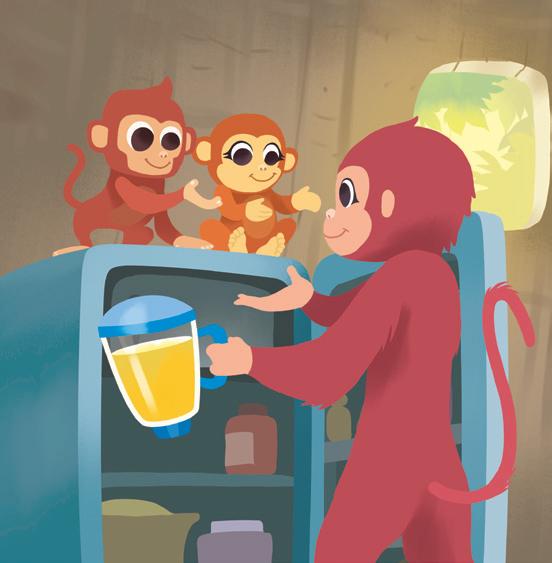
In case the learners struggle to speak in English, encourage them to speak in their home language or in a mixed language.








Domain General Awareness
Learning Outcome Children identify different ways in which they can help at home and at school.
Resources General Awareness, page 24; objects that can be used like a microphone (ruler, pencil)
Suggested Method Call children one by one. Ask them to use an item such as a ruler like a mic. Ask them to share one way in which they can help at home or at school. Appreciate them for their effort.
Support for Struggling Learners
Gather the children around you. Open to page 24 of the General Awareness book, point to the pictures and explain the various ways they can help at home. Then, give them a few examples of helping at school (packing your bag tidily, not pushing anyone, not littering, etc.). Repeat these examples for reinforcement.
Domain Foundational Literacy
Learning Outcome Children will identify the letters E to H and associate words that begin with these letters.
Resources Objects or pictures of objects starting with E–H
Suggested Method Call the children one by one and show them an object that starts with letters E, F, G or H. Ask them to identify the beginning sound and letter. Then, write those letters on the board. Say a word starting with one of these letters and ask the children to point to the correct letter on the board.
Support for Struggling Learners
Gather the learners in a circle. Show them some objects or pictures of objects starting with letters E–H and name them, emphasising on the beginning sound. Ask the children to repeat after you. Repeat the same for pictures and/or words in the story cards.
Domain Foundational Numeracy
Learning Outcome Children will be able to identify, trace and write the number 5.
Resources Objects such as erasers, pencils, ice-cream sticks, etc.
Suggested Method Call children one by one. Ask them to count and pick any 5 objects. Then, write number 5 on the board and ask children to trace them with their index fingers.

Support for Struggling Learners
Gather the learners, show them 5 objects and guide them to count to 5. Then, ask them to count and show 5 fingers. Finally, write number 5 on the board and have the children trace it with their index fingers.



































Domain
Circle Time Game: Roll the Ball and Say!
General Awareness Importance and Parts of Home
General Awareness, page 27
Foundational Literacy Letter Ii Literacy Skillbook, page 24; Literacy Workbook, page 21
Foundational Numeracy Circle Numeracy Skillbook, pages 30–31
DIY Going in Circles
STEM Exploration, pages 10–12
LO: Children will take turns to answer questions to improve listening and speaking skills.
Resources: A soft ball (lightweight and easy to roll)
1. Warm-Up: Sit in a circle with the children, if possible. Hold up the ball and say: We will roll the ball to a friend and ask a question. The friend will answer and then roll the ball to someone else!
2. Roll the Ball and Say: Start by rolling the ball to a child and asking a question, such as:
• What is your favourite animal?
• Can you make a happy/sad face?
• What do you like to eat the most?
• Can you clap three times?
The child answers, then rolls the ball to another child, asking a new question. Continue until everyone has had a turn.

LO: Children will identify different parts of a house, colour a house, and learn the importance of a house.
Resources: General Awareness, page 27; crayons
Introduction
1. Warm-Up: Gather the children and say: Today, we will talk about a special place. It is the place where we live. Can you guess what it is? Listen to all responses. Then, say: It’s our home! Draw a simple house on the board and say: Our home keeps us safe, gives us shelter, and it is where we live with our family.

2. Parts of a Home: Point to different parts of the house (walls, door, roof, windows) and name them. Ask children to repeat after you. Then, invite a few children to come up and identify the parts.
If available, use a toy house or model for better understanding.
3. Home Sweet Home: Ask children to open page 27 of the General Awareness book. Guide them to identify and name the parts of the house shown there. Then, ask them to colour it.



Count and write the number of windows, doors and rooms in your house and write them in page 27 of your book.







LO: Children will identify the symbol and sound of the letters Ii and learn words beginning with these letters.
Resources: Literacy Skillbook, page 24; Literacy Workbook, page 21
1. Singing to Letter Ii: Introduce the /i/ sound with a fun rhyme. Sing and do actions together, repeating 2–3 times.
Letter Ii
/i/ /i/ Igloo, cold and white, /i/ /i/ Idli, sweet and nice. /i/ /i/ Insect, buzzing by, /i/ /i/ Ink, with which we write!
2. Listening to the /i/ Sound: Show pictures from page 24 of the Skillbook and emphasize the /i/ sound in each word, e.g: /i/ /i/ igloo. Encourage children to repeat after you multiple times.
3. Symbol Recognition of Letters Ii: Write I and i on the board. Call children to trace the letters with chalks.
4. Writing Practice of Letters Ii: Guide children to trace the dotted lines on page 24 of the Skillbook to form I and i.









Trace and write the letters I and i in page 21 of your Workbook.
LO: Children will identify a circle, recognise objects that are circular in shape and make circular stamps using bottle caps.
Resources: Numeracy Skillbook, pages 30–31; cutout of a circle; circular objects like bangles, coin, bottle cap, clock, etc.; small bottle caps (1 per child); water colour; sticker sheet (from Skillbook)
1. Introducing the Shape Circle: Show the cutout of the circle and ask: What is the shape of this cutout? Listen to the children’s guesses and then say: This is a circle. It has no corners. Reinforce the concept by showing them objects like bangles and coins.
2. Rhyme Time: Open to page 30 of the Skillbook and read out the rhyme on circles. Repeat it 2–3 times, encouraging children to join in.
3. Circle: Ask children to open page 30 of the Skillbook. Guide them to trace the dotted lines to form circles and identify circular objects.
4. Do and Learn: On page 31 of the Skillbook, give children bottle caps. Show them how to dip the cap in paint and stamp circles. Then, help them paste circular objects from the sticker sheet.
















LO: Children will identify, understand and practise making the circle using jar lids.
Resources: STEM Exploration, pages 10–12; circular lids of 3 different sizes
1. Recap the Circle: Draw a large circle on the board. Ask children to identify the shape. Then, reinforce the concept by first showing them the lids and then passing them around for the children to hold them. Encourage them to observe the shape carefully when they hold the lids, noticing that they have no edges and corners like other shapes. Ask for the lids back at the end of this activity.






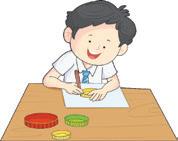
2. Tracing Circle: On the board, draw three concentric circles. Draw the focus of the children on the difference in sizes and that the smaller circles are inside the bigger ones. Then, ask them to come forward, one by one, and trace the three circles with a chalk.
Ask your parents to give you three circular lids of different sizes and bring them to school the next day.

Circle Time Draw and Guess the Letter
General Awareness Rooms in a House: Living Room and Kitchen General Awareness, pages 28–29
Foundational Literacy Letters Ii Literacy Skillbook, page 25; Story Card for Letters Ii
Foundational Numeracy Circle Numeracy Workbook, pages 17–18
DIY Going in Circles STEM Exploration, pages 10–12
LO: Children will recognise letters through touch.
1. Warm-Up: Greet the children warmly. Say: Today, we are playing a magical game! Letters will be traced on our backs, and we have to guess them by feeling. Explain: Letters have shapes, and we can identify them by their shapes!
2. Draw and Guess the Letter: First, demonstrate the game on the back of one child. Then, make pairs, ask each pair to come up to the front of the class. Give one of them a letter that he/she needs to draw on the back of his/her partner. The partner gets three guesses. Clap when they do the activity. Ensure everyone gets to participate.
If there are odd number of children in class, you may ask one of them to be your partner in the game.

LO: Children will identify rooms at home such as the living room and the kitchen and identify objects that are found in these rooms.
Resources: General Awareness, pages 28–29
1. Talk About the Rooms: Say: In our houses, we can have different rooms for different things. Then, say: The place where we cook is called the kitchen. The place where we sit together to watch TV or talk to each other is called the living or the drawing room.
2. Things We Use: Say: Let us imagine we are in a house! Pretend to walk into the living room and ask: What do we see here? Welcome responses like sofa, TV, table. Then say: Now, let’s step into the kitchen! Encourage children to name things they find there, like stove, fridge, plates. Guide the discussion with fun prompts such as: What do we do in the kitchen? / Where do we sit and relax?

3. Living Room and Kitchen: Ask children to open page 28 of the General Awareness book. Have them observe the picture of the living room and name the objects they see. Then, guide them to circle the items that belong in a living room. Repeat the same for the kitchen on page 29.



















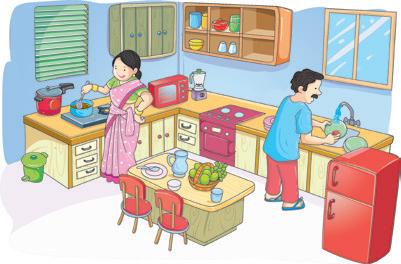





LO: Children will practise reading words with the /i/ sound and listen to phonic stories that begin with the letters Ii.
Resources: Literacy Skillbook, page 25; Story card for Ii
1. Recap: Revise the /i/ sound by showing pictures from page 24 of the Skillbook and emphasising the sound. For example, have the children repeat /i/ /i/ inkpot multiple times. Then, write I and i on the board and invite a few children to trace the letters.

2. Reading to Letters Ii: Guide the children to page 25 of the Skillbook. Read the sentences aloud at least 4–5 times, focusing on the /i/ sound. Ask the children to circle the letters I and i at the beginning of the words.
3. Picture Discussion: Show the pictures on the Letters Ii story card and discuss them. Ask questions such as:
Picture 1: What all do you see in this picture?
Picture 2: What is the boy doing?
Picture 3: What food do you see in this picture?
Picture 4: What do you think the boy is drawing?
4. Interactive Read-Aloud: Read the story aloud, emphasising the words that start with the /i/ sound. Ask the children to repeat those words after you.





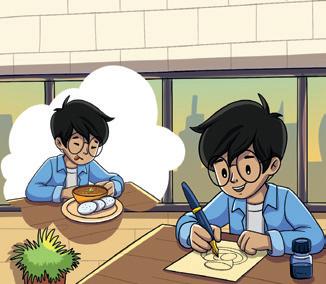


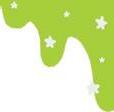



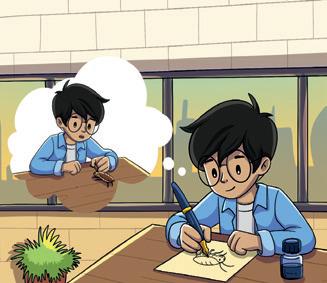
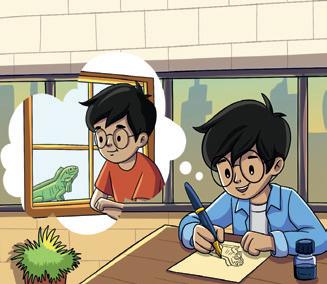

Find and circle the words starting with /i/ sound in the story card for letters Ii.
LO: Children will identify and recognise the circle shape.
Resources: Numeracy Workbook, pages 17–18; cutout of a circle; circular objects like bangles, coin, bottle cap, clock, etc.
1. Circle Hunt: Draw different shapes on the floor, including circles. Call one child at a time and ask them to identify the circle and jump inside it. Then, ask: Name two things that are shaped like a circle? Repeat until each child gets a turn, offering help wherever needed.
2. Circle: Ask children to open to page 17 of the Workbook. Ask them to first colour the circle, then draw a circle around the objects given at the bottom of the page that are circle in shape.
3. Funny Faces: Ask children to turn to page 18 of the Workbook. Encourage them to draw funny faces inside the circles. DIY

















LO: Children will identify and trace circle shapes of different sizes.
Resources: STEM Exploration, pages 10–12; circular lids of 3 different sizes (brought by children from home); A4-sized sheet of paper (1 per child)
1. Recap Circle: Draw circles of different sizes on the board. Ask children to identify the shape. Invite a few children to come forward and trace the circles on the board.
2. Going in Circles: Give each child an A4 sheet and the lids. Ask them to trace the lids from biggest to smallest, following the instructions from STEM Exploration, pages 10–12.




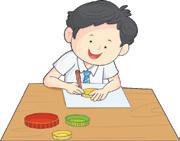
Circle Time Chinese Whispers
General Awareness Rooms in a House: Bedroom and Bathroom General Awareness, pages 30–31
Foundational Literacy Letters Jj Literacy Skillbook, page 26; Literacy Workbook, page 22
Foundational Numeracy Square Numeracy Skillbook, pages 32–33
DIY Rhyme: Where, Oh Where? Rhymes and Stories, page 20
LO: Children will develop listening skills and practise speaking clearly.
1. Warm-Up and Rules: Gather children in a circle, if possible, and say: Let us play Chinese Whispers! I will tell you something, softly in your ear. Listen carefully and pass the message to your classmate on your right. Then he/she will whisper it to the next person.
2. Chinese Whispers: Whisper a simple sentence (e.g., I like mangoes. OR The sun is bright.). Let the message travel around the circle. The last child says it aloud. Clap and cheer! Repeat with new sentences, letting different children start the game.

LO: Children will identify spaces at home such as the bedroom and the bathroom, and identify objects that are found in these rooms.
Resources: General Awareness, pages 30–31
1. Recap: Revise the kitchen and the living room that was taught the previous day.
2. Story Time: Tell the children a story: Mili wakes up early in the morning. She then makes her bed. What room is she in? Encourage responses: Bedroom! Continue the story: She goes to brush her teeth. In which room would she be now? Encourage responses: Bathroom!

3. Bedroom and Bathroom: Ask children to open page 30 of the General Awareness book. Have them observe the picture of the bedroom and identify the different objects in the room. Guide them to circle the objects they find in the bedroom. Repeat the same process for the bathroom on page 31.



































LO: Children will identify the symbol and sound of the letters Jj and learn words beginning with the letters.
Resources: Literacy Skillbook, page 26; Literacy Workbook, page 22
Introduction
1. Singing to the /j/ Sound: Introduce the /j/ sound with a rhyme and repeat it 2–3 times. Read it out with expressions and voice modulation.
2. Listening to the /j/ Sound: Show pictures from page 26 of the Skillbook and emphasize the /j/ sound in each word, e.g., /j/ /j/ jug. Encourage children to repeat after you multiple times.
3. Symbol Recognition of Letters Jj: Write J and j on the board and invite children to trace them with chalk.
4. Writing Practice of Letters Jj: Guide children to trace the dotted lines on page 26 of the Skillbook to form the letters J and j.
Complete page 22 of the Workbook by tracing and writing letters J and j.
Letter Jj
/j/ /j/ jug, full of juice, /j/ /j/ jam, on bread to use! /j/ /j/ jump, high and low, /j/ /j/ joker, in a fun show!







LO: Children will identify a square, recognise objects that are square in shape, and make a square with fingerprints.
Resources: Numeracy Skillbook, pages 32–33; cutout of a square; objects like a slice of bread, a square handkerchief, a square card; watercolours; sticker sheet (from Skillbook)
Introduction
1. Introducing the Square: Show the children the cutout of the square. Say: This is a square! It has four equal sides, and four corners. Hold up various square objects to reinforce the concept. Ask: Can you find something else that is square?
2. Rhyme Time: Open to page 32 of the Skillbook and read out the rhyme on square. Repeat it 2–3 times, encouraging the children to join in.
3. Tracing the Shape Square: Draw a square on the board and invite children to come forward and trace it with a chalk while saying ‘square’ aloud. Then, guide them to trace the squares on page 32 of the Skillbook and help them identify square-shaped objects on the page.
4. Fingerprint Square: Provide the materials to the children. Demonstrate how to make fingerprints along the sides of the square. Guide them to dip their fingers in paint and then create fingerprint patterns along the edges of the square.
5. Identifying Square Objects: Ask children to look at the sticker sheet and find objects that are square in shape. Help them to peel and paste the square-shaped stickers on page 33 of the Skillbook.







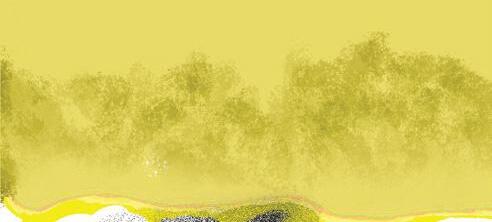












LO: Children will engage in movement and listening skills through the rhyme Where, Oh Where? Resources: Rhymes and Stories, page 20
1. Rhyme Time: Sing the rhyme Where, Oh Where? aloud with voice modulation and expressions. Repeat 3–4 times and ask the children to sing along with you.
2. Movement Fun: Once the children know the rhyme, sing again and ask the children to follow the directions in the song. For example:
• “Where O where is my little dog gone?”—Children stand up at their seats and mimic searching for someone.
• “With his ears so short and his tail so long”—Encourage children to do animal movements, like pretending to have short ears (by holding hands to their ears) or hoot happily when you read the last line.

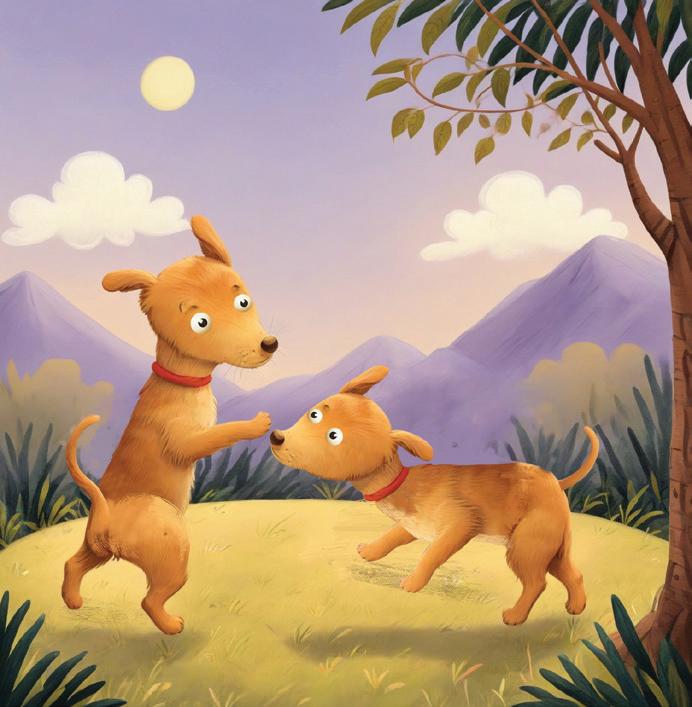


Domain
Circle Time Fun with Body Movements
General Awareness Design Your Home
Book & Page
General Awareness, pages 32–33
Foundational Literacy Letter Jj Literacy Skillbook, page 27; Story Cards
Foundational Numeracy Square Numeracy Workbook, page 19
DIY Rhyme: Where, Oh Where? Rhymes and Stories, page 20
LO: Children will develop gross motor skills through fun movements.
1. Warm-Up: Greet the children warmly. Take them to an open space or the playground, if possible. Say: Today, we will have fun moving our bodies during circle time! Let’s see how strong and active we are!
2. Action Circle: Make the children stand in a big circle. Give them simple movement instructions one by one. Perform with them and encourage everyone to follow. Say:
• Let’s jump like a frog! (Children jump on the spot.)
• Now, flap your arms like a bird!
• Tiptoe like a cat and say ‘meow’!
• Let’s stretch our arms up high and touch the sky!
• Now, bend down and touch your toes!
• Let’s march like soldiers around the circle!
Repeat the sequence 2–3 times to build interest and energy. Assist those who need help.

LO: Children will design their house and match activities to the correct rooms. Resources: General Awareness, pages 32–33; sticker sheet (from Coursebook)
Introduction
1. Recap: Make the children sit in a circle, if possible. Ask them to name different rooms in the house. Then, ask:
• Name the room where we sit with our family.
• Name the room where we sleep.
• In which room do we see a fridge?
• In which room do we see a bucket?
Create a fun game by asking the children to pretend they are in different rooms and perform actions like sitting on a sofa (living room), cooking (kitchen), or brushing teeth (bathroom).
2. Design Your Home: Let children refer to the sticker sheet and paste the pictures on page 32 of the General Awareness book to design their room. Assist those who need help.
3. Identifying Activity for Each Room: Refer to page 33 of the General Awareness book and ask the children to identify the different activities. Guide them to match each activity with the correct room.














LO: Children will practise reading aloud a few words and phonic stories that begin with letters Jj. Resources: Literacy Skillbook, page 27; Letters Jj Story Cards
1. Recalling the Sound and Symbol of Letters Jj: Reinforce the /j/ sound by showing pictures from page 26 of the Skillbook. Emphasise the beginning sound with examples such as: /j/ /j/ joker. Write J and j on the board and invite children to trace the letters.
2. Reading to Letters Jj: Guide the children to page 27 of the Skillbook. Read the sentences aloud at least 4–5 times, focusing on the /j/ sound and ask children to repeat after you. Ask the children to circle the first letters J and j.
3. Picture Discussion: Show the pictures on the story card for letters Jj and discuss them. Ask questions such as:
Picture 1: Who is driving the jeep?
Picture 2: What is the joker doing?
Picture 3: What food do you see?
Picture 4: What is the joker doing?









4. Interactive Read-Aloud: Read the story aloud, emphasising the words that start with the /j/ sound. Ask the children to repeat these words after you.





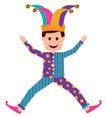



Refer to the letters Jj story card and read the story. Circle the letters Jj in the story card.
LO: Children will identify and recognise the square shape.
Resources: Numeracy Workbook, page 19; a square cutout; objects like a slice of bread, handkerchief, etc.
1. Recap: Start by saying: Let’s go on a shape hunt! Ask the children to look around the room for square shapes. As they find them, encourage them to say aloud: I found a square! Walk around together and identify square shapes on the walls, books, toys, etc. Celebrate each discovery with a round of applause.
2. Square: Guide the children to open to page 19 of the Workbook. Ask them to identify and colour the square shape. Then, ask them to circle the picture of objects that resembles a square shape.
LO: Children will recite the rhyme Where, O Where? and play a fun game.
Resources: Rhymes and Stories, page 20
1. Rhyme Time: Sing the rhyme Where, Oh Where? aloud with actions and expressions. Repeat it 2–3 times and encourage the children to join in.
2. A Twist in Rhyme: After singing the rhyme Where O Where? a few times, gather the children in a circle and say: Now, let us add a fun twist! I will ask you a question, and you have to think carefully and answer by saying where the animal is. Ask questions such as:
• Where, O where is the cat?
• Where, O where is the bird?
• Where, O where is the dog?







Encourage the children to respond with answers such as: The cat is on the mat! / The bird is in the tree! Ensure that every child gets a turn to ask or answer a question. This will engage their thinking and listening skills while keeping the theme fun and interactive.







Domain
General Awareness
Learning Outcome Children will identify different rooms in a house and the different things we keep in the house.
Resources General Awareness, page 28
Suggested Method Call children one by one. Name a room in the house and ask them to say one thing they would find there. Then, ask them to say the function of the room. Clap for each child and give them a smiley.
Support for Struggling Learners
Domain
Gather the children in a circle and refer to page 28 of the General Awareness book. Say: This is a living room. We sit with our family in the living room. Help them identify different things one can see in a living room. Repeat the same for the other rooms.
Foundational Literacy
Learning Outcome Children can connect the sounds and symbols of Ii and Jj, and say common words starting with them.
Resources Objects or pictures starting with /i/ and /j/ sounds; chalk; letters Ii and Jj story cards
Suggested Method Write letters I and J on the board. Call the children one by one and ask them to sort and place objects starting with the /i/ sound on one side and those starting with the /j/ sound on another. Then, use the story cards to read the stories aloud, emphasising words that begin with /i/ and /j/. Encourage the children to repeat these words after you and point to them in the story cards while saying them aloud.
Support for Struggling Learners

Domain
Gather the learners in a circle. Show them some objects or pictures of objects starting with letter I. For example, say: /i/ /i/ inkpot and ask the children to repeat after you. Repeat the same for pictures and words in the story card. Then write letters I and i on the floor, call the children one by one and ask them to trace the letters with their index fingers. Repeat the same for the letter J.
Foundational Numeracy
Learning Outcome Children can identify the objects with circular and square shapes in their surroundings.
Resources Circular objects such as a clock, bangle, coin, bottle cap; square-shaped objects such as a napkin, a slice of bread, etc.
Suggested Method
Support for Struggling Learners
Draw a circle and a square on the board. Keep the objects in a box. Call the children one by one and ask them to identify the circle and the square. Then, ask them to pick one square-shaped or one circular object from the box. Clap for each child and give a smiley after completion. Repeat the process until all children get their turn.
Show a cutout of a circle and say: This is a circle. It has no corners. Draw a circle on the board and ask the children to come forward and trace it with their index fingers. Show some examples of circular objects like coins and bangles. Repeat the same for a square, saying: This is a square. It has four equal sides and four corners.




































Domain
Topic
Circle Time Yoga and Meditation
General Awareness My School
Book & Page
General Awareness, page 34
Foundational Literacy Letter Kk Literacy Skillbook, pages 28–29; Literacy Workbook, page 23
Foundational Numeracy Triangle Numeracy Skillbook, pages 34–35
DIY Rhyme: Pussycat, Pussycat Rhymes and Stories, page 21
LO: Children will practice a simple yoga pose and meditation.
Resources: Music
1. Warm-Up: Start with gentle stretching. Ask the children to stand up, stretch their arms, then bend down and touch their toes.
2. Yoga—Airplane Pose: Demonstrate the pose while slowly counting to 5. Say:
• Stand straight.
• Spread your arms like wings.
• Lift one leg behind you—slowly.
• Bend forward and look straight.
Let each child try the pose and support those who need help balancing.

3. Meditation: Ask the children to sit down, with their eyes closed. Guide them to take slow, deep breaths. Play soothing music in the background. Say: Imagine you are calm and happy, resting in the sun. Let them relax for a minute before sitting up gently.

LO: Children will understand the importance of school and share what they like about their school.
Resources: General Awareness, page 34
1. Warm-Up: Gather the children and say: School is a special place where we learn, play, and make friends. Ask: Do you know why we come to school? Welcome all responses. Then, explain: School helps us learn new things, meet teachers and friends, and have fun activities.
2. Sharing Time: Ask each child to share one thing they like about their school. Give examples like playing with friends, clean classrooms, or storytime. Encourage all responses and appreciate their answers.

3. My School: Ask the children to open page 34 of the General Awareness book. Point to the picture and say: The boy is going to school by bus. Read the lines aloud and allow the children to repeat the sentence after you. Ask: How do you come to school? Take a few responses.
4. Finding the Way: Guide the children to solve the activity on page 34. Ask them to draw a line to help the bus reach the school.




You can also ask the children to share what they see on their way to school.





LO: Children will identify the symbol and sound of the letters Kk and write the letters. Resources: Literacy Skillbook, pages 28–29; Literacy Workbook, page 23
1. Singing to Letters Kk: Introduce the letters Kk with a fun rhyme. Repeat it at least 2–3 times, encouraging the children to join in.




Letter Kk
/k/ /k/ kite, fly up high, Soaring, dancing in the sky. /k/ /k/ kitten, soft and sweet, Purring, playing near my feet!
2. Listening to the /k/ Sound: Guide the children to page 28 of the Skillbook. Point to each picture and say the word, emphasising on the /k/ sound. For example: /k/ /k/ king OR /k/ /k/ key.
3. Symbol Recognition of Letters Kk: Write capital K and small k on the board. Call a few children to trace the letters on the board. Then, ask everyone to finger trace the letter in the air using their index fingers.
4. Writing Practice of Letters Kk: Guide the children to page 28 of the Skillbook. Ask them to trace the letters Kk carefully. Support those who need help.
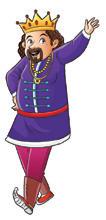




5. Identifying Objects with Letters Kk: Ask the children to turn to page 29 of the Skillbook. Say: Let’s find the objects that start with the /k/ sound and colour them. Assist those who need help. Refer to page 23 of the Workbook, trace and write the letters Kk given.

LO: Children will identify and trace the shape triangle.
Resources: Numeracy Skillbook, pages 34–35; sticker sheet (from Skillbook)
1. Explaining a Triangle: Draw a triangle on the board and ask: What shape is this? Take a few responses and say: This is a triangle. It has three sides. Point and count the sides aloud.
2. Tracing a Triangle: Call children one by one to trace a triangle on the board with their index fingers. Ensure everyone gets a turn.
3. Triangle: Recite the rhyme about triangles on page 34 of the Skillbook. Encourage children to join in with expressions and voice modulations.
4. Do and Learn: Guide the children to refer to page 35 of the Skillbook. Ask them to refer to the sticker sheet and identify the triangle-shaped objects and stick them on page 35 of the Skillbook.










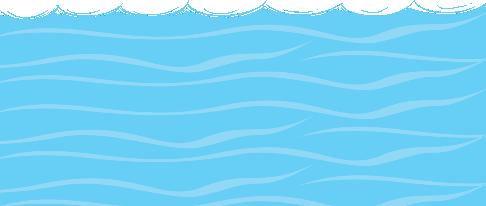


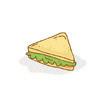




Complete the fish by tracing the dotted lines on page 35 of the Skillbook, and then colouring it.
LO: Children will play a fun game and recite the rhyme Pussycat, Pussycat.
Resources: Rhymes and Stories, page 21
1. Warm-Up Game: Say: Today we will recite a rhyme on a pussycat who scared a mouse. Before that let us play a fun game. Guide the children to say Meow when you say CAT and ask them to sit down when you say MOUSE. Mix up the commands to make it fun and engaging.
2. Rhyme Time: Recite the rhyme from page 21 of the Rhymes and Stories book with expressions and voice modulation and ask the children to follow. Repeat 2–3 times for reinforcement.
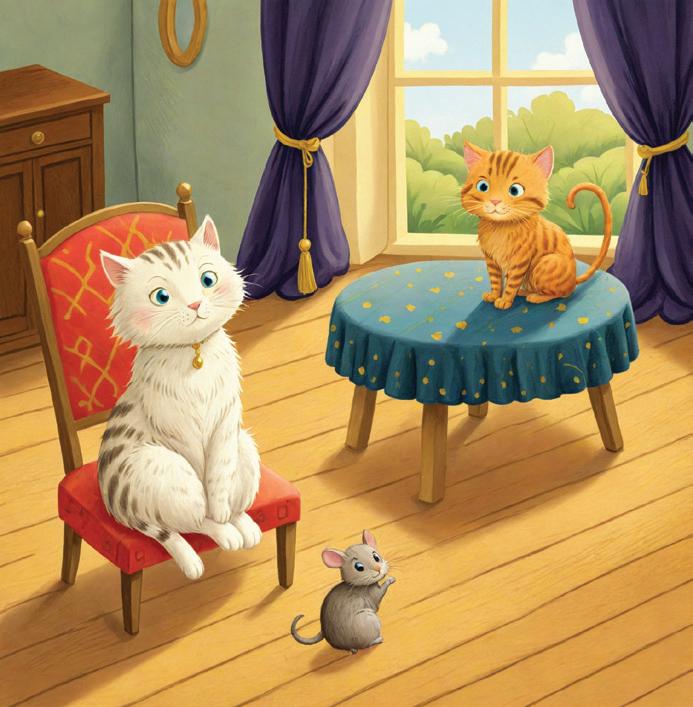

Circle Time The Kind Little Rabbit
General Awareness Different Rooms in School General Awareness, page 35
Foundational Literacy Letters Kk Literacy Skillbook, page 29; Story Cards
Foundational Numeracy Triangle Numeracy Workbook, page 20
DIY Rhyme: Pussycat, Pussycat Rhymes and Stories, page 21
LO: Children will listen to a story and discuss it.
Resources: A soft toy/picture of a rabbit; some carrots
1. Warm-Up: Gather the children in a circle, if possible, and say: Today, I will tell you a special story about kindness! Show the picture of a rabbit and some carrots. Ask: What do you think the rabbit will do with the carrots? Welcome all responses.
2. Story Time: Narrate the story The Kind Little Rabbit with expressions and voice modulation. Repeat the story 2–3 times for reinforcement.
3. Discussion Time: Discuss the story with the children. Ask them questions like:
• What did the rabbit do with his carrots?
• How did the animals feel when the rabbit shared carrots with them?
• Why is it important to be kind to others?
Encourage children to share ways they can be kind to friends and family. End by saying: Kindness always comes back to us in wonderful ways.

LO: Children will identify and name the different rooms in a school.
Resources: General Awareness, page 35
The Kind Little Rabbit
One day, a little rabbit found a big basket of carrots in the forest. He was very happy! On his way home, he met a hungry deer and gave him a carrot. Then, he saw a tired squirrel and shared another. By the time he got home, he had only a few carrots left, but he felt very happy. The next morning, the animals visited him with yummy fruits and nuts to thank him for his kindness!
1. Warm-Up: Ask children to share different rooms that they see in their school. Let the children share their answers freely.

2. Riddle Time: Read the riddles aloud and guide the children to guess the correct part of the school. Use the examples provided.
• Teachers teach, and we all write. Desks and chairs make it right! (Classroom)
• You splash and wash to stay so neat, where you clean your hands and feet. What am I? (Washroom)
3. Different Rooms in School: Ask children to open page 35 of the General Awareness book. Point to each picture and discuss the place. For example: This is a classroom. We sit and study in our classroom.
Take the children on a short school tour to help them observe and identify the different places.










LO: Children will practice reading aloud a few words and phonic stories that begin with letters Kk. Resources: Literacy Skillbook, page 29; story cards
1. Recapping the Sound and Symbol of Letters Kk: Reinforce the /k/ sound of the letters Kk by pointing to the pictures on page 28. Ask the children to name the pictures, emphasising the /k/ sound. Say: Kk says /k/ /k/. /k/ /k/ king OR /k/ /k/ kite, etc. Write the capital and small letters Kk on the board. Invite a few children to come forward and trace the letters Kk on the board. Then ask them to trace the letters Kk in the air using their index fingers.

2. Reading to the Letters Kk: Guide the children to page 29 of the Skillbook. Read the sentences slowly and aloud at least 4–5 times, focusing on the /k/ sound. Allow the children to repeat the sentences slowly after you. Then, ask them to circle the first letters K and K.
3. Picture Talk: Show the pictures from the story card and discuss them one by one. Ask:
Picture 1: What is the boy holding in his hands?
Picture 2: To whom is the boy talking to?
Picture 3: What is the garden full of?
Picture 4: What animals can you see in the picture?
4. Interactive Read-Aloud: Read the story slowly but loudly, emphasising the words that start with the /k/ sound. Allow the children to repeat the sentences slowly after you. Then, ask them to repeat these words after you focus on the words that start with the /k/ sound.

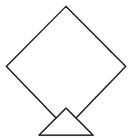


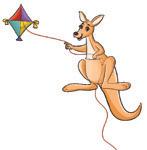

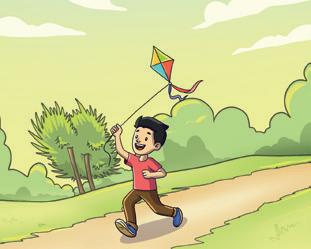
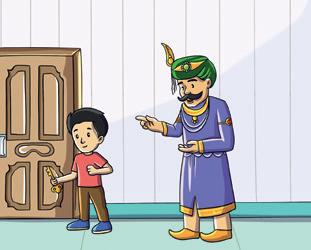






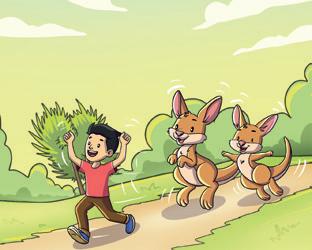
Refer to the letters Kk story card and read the story. Circle the letters Kk in the story card.
LO: Children will identify a triangle shape and the objects with triangle shape. Resources: Numeracy Workbook, page 20; shapes flashcards (from Skillbook) chalks; pebbles or pom poms
1. Recap: Draw a triangle on the board and ask: What shape is this? How many sides does it have? Take a few responses and say: This is a triangle. It has three sides. Ask the children to hold up their flashcards showing a triangle.
2. Identifying and Forming a Triangle: Draw a circle, square, rectangle, and triangle on the floor. Call children one by one to step into the triangle. Then, guide them to place pebbles along its three sides. Ensure everyone gets a turn.
3. Triangle: Ask children to open page 20 of the Workbook. Guide them to identify and colour the triangle. Then, ask them to match it with the correct picture.
LO: Children will recite Pussycat, Pussycat and play a fun game.
Resources: Rhymes and Stories, page 21
1. Rhyme Time: Recite the rhyme Pussycat, Pussycat with voice modulation and expressions. Repeat 3–4 times with children.
2. Guess the Character: Call children one by one and whisper a character from the rhyme (e.g., queen, cat, and mouse). Ask the children to enact the character and let the others guess. Ensure everyone gets a turn.







Circle Time Being Mindful About Food
General Awareness Fun at School
General Awareness, page 36
Foundational Literacy Letter Ll Literacy Skillbook, pages 30–31; Literacy Workbook, page 24
Foundational Numeracy Circle, Square and Triangle Numeracy Skillbook, pages 30, 32 and 34
DIY Complete the Octopus Art and Craft, page 9
LO: Children will understand the importance of food and practise not wasting food.
1. Warm-Up: Gather the children and ask: What do we eat for breakfast/lunch/dinner? Let children share their answers. Say: Food gives us energy to grow, play, and learn!, so we should not waste it.
2. Story Telling: Narrate the story Khyati’s Tummy Lesson to the children and explain the importance of not wasting food.
3. Pledge and Reflection: Ask each child to repeat after you: I will take only what I can eat and not waste food! End by encouraging them to share one way they can avoid wasting food at home or in school.

Khyati’s Tummy Lesson
One day, Khyati was very hungry! But she ate too fast and left a lot on her plate. Later, Khyati felt hungry again. “I should have finished my food,” she thought. The next day, she took only what she could eat and finished everything. “No more wasting food!” she said happily. From then onwards, Khyati never wasted food.

LO: Children will identify different school activities and share what they enjoy doing.
Resources: General Awareness, page 36
1. Activities at School: Ask: What do we do at school? Take responses and name some activities like drawing, writing, listening to stories. Then, ask each child to say: I like to __ (activity name) at school.
2. Identifying School Activities: Say different activities in a mixed order, such as: sleeping, reading, watching TV, cooking, playing with friends. Children show a thumbs-up if it’s a school activity.
Ask children to act out their favorite school activity!
3. Fun at School: Ask children to open page 36 of the General Awareness book. Guide them to find and tick the activities done in the school.









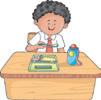








LO: Children will identify the symbol and the sound of the letters Ll and write the letters.
Resources: Literacy Skillbook, pages 30–31; Literacy Workbook, page 24
1. Singing to Letters Ll: Introduce the letters Ll with a fun rhyme. Repeat it at least 2–3 times, encouraging the children to join in.
Letter Ll
/l/ /l/ lamp, shining so bright, /l/ /l/ lion, strong with might. /l/ /l/ leaf, so green and light, /l/ /l/ lollipop, a tasty bite!
2. Listening to the /l/ Sound: Guide the children to open to page 30 of the Skillbook. Point to each picture and say the word, emphasising on the /l/ sound. For example: /l/ /l/ lion OR /l/ /l/ leaf.
3. Symbol Recognition of Letters Ll: Write capital L and small l on the board. Call a few children to trace the letters on the board. Then, ask everyone to finger trace the letters in the air using their index fingers.
4. Writing Practice of Letters Ll: Guide the children to page 30 of the Skillbook. Ask them to trace the letters Ll carefully. Support those who need help.
5. Identifying Objects with Letters Ll: Ask the children to turn to page 31 of the Skillbook. Say: Let’s find the objects that start with the /l/ sound and circle them. Assist those who need help.







Refer to page 24 of the Workbook, trace and write the letters Ll given.

LO: Children will differentiate between a circle, square and a triangle.
Resources: Numeracy Skillbook, pages 30, 32, 34; shape flashcards (from Skillbook); cutouts of a circle, square and triangle; chalks
1. Recap: Ask children to open page 30 of the Skillbook, show them a circle, and help them identify the circular shaped objects. Then, ask them to hold up the flashcard for a circle. Repeat the same with the shapes square (page 32) and triangle (page 34).
2. Listen and Hop: Draw the shapes circle, square, and triangle on the floor with chalk. Call children one by one and name an object (e.g., plate, nacho chips, Ludo board). The child must jump on the correct shape. Give at least three objects per child.
3. Sorting Shapes: Place mixed shape cut-outs in a bowl. Call children one by one to sort them while saying the shape names aloud. Ensure everyone gets a turn.































LO: Children will complete an octopus by sticking bindis on it.
Resources: Art and Craft, page 9; bindis
1. Warm-Up: Ask children to open page 9 of the Art and Craft book. Show them the picture and ask: Do you know the name of this animal? Take a few responses and say: This is an octopus. It has 8 arms and lives in the sea. Guide them to count the arms together.
2. Complete the Octopus: Help children complete the octopus by pasting bindis on the circles. Ensure everyone participates and encourage them to count aloud as they stick each bindi.







Domain
Topic of the Day
Circle Time Pass the Magic Ball
General Awareness Poster Making
Book & Page
Foundational Literacy Letter Ll Literacy Skillbook, page 31; Story Cards
Foundational Numeracy Making a Rocket DIY Show and Tell: Rocket
LO: Children will play a fun game and share their feelings.
Resources: A soft ball; music, if possible
1. Warm-Up: Gather the children in a circle and hold a soft ball. Say: This is a magic ball! When you hold it, you must do an action and share how you feel today! Pass the ball around so each child can touch it.
2. Passing the Ball: Play music and have children pass the ball around the circle. When the music stops, the child holding the ball will act and say: I am feeling __________ today! Restart the music and continue playing.

3. Wrap-Up: After a few rounds, ask: How did you feel while playing? End with a big group cheer and remind them that sharing one’s feelings is fun!

LO: Children will create a simple craft to decorate their school.
Resources: Coloured paper (1 per child); stickers; glue; crayons; cutouts of shapes (square, circle, and triangle)
1. Warm-Up: Gather the children in a circle and ask: What do we love about our school? Encourage them to share things like friends, teachers, playgrounds, or their classroom. Ask: How can we make our school look more beautiful? Take responses like keeping it clean, decorating it, or planting flowers. Say: Today, we will make something nice to decorate our school!

2. Happy School Craft: Give each child a piece of coloured paper. Guide them to draw or colour something they love about their school (e.g., flowers, happy faces, or a swing). Help them decorate their artwork with stickers or by sticking the cutouts of shapes. Collect all their crafts and display them in the classroom or on a school board. Say: Look how beautiful our school looks with your art!
3. Display and Appreciation: Once the art is complete, show it to the class and ask each child to point to their drawing and explain it. Display the art in the classroom or school hallway to celebrate their love for their school.







LO: Children will practise reading aloud a few words and phonic stories that begin with letters Ll.
Resources: Literacy Skillbook, page 31; story cards
1. Recapping the Sound and Symbol of Letters Ll: Reinforce the /l/ sound of the letters Ll by pointing to the pictures on page 30. Ask the children to name the pictures, emphasising the /l/ sound. Say: Ll says /l/ /l/. /l/ /l/ lamp OR /l/ /l/ lock, etc. Write the capital and small letters Ll on the board. Invite a few children to come forward and trace the letters Ll on the board. Then ask them to trace the letters Ll in the air using their index fingers.
2. Reading to the Letters Ll: Guide the children to page 31 of the Skillbook. Read the sentences aloud, focusing on the /l/ sound. Allow the children to repeat the sentences after you. Ask the children to circle the first letter L and l.
3. Picture Talk: Show the pictures from the story card and discuss them one by one. Ask:
Picture 1: What insect can you see in the picture?
Picture 2: What is the ladybird holding in her hand?
Picture 3: Which animal is sleeping?
Picture 4: What is the ladybird doing?
4. Interactive Read-Aloud: Read the story slowly but loudly, emphasising the words that start with the /l/ sound. Allow the children to repeat the sentences slowly after you. Then, ask them to repeat these words after you focus on the words that start with the /l/ sound.





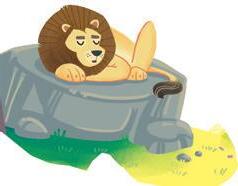

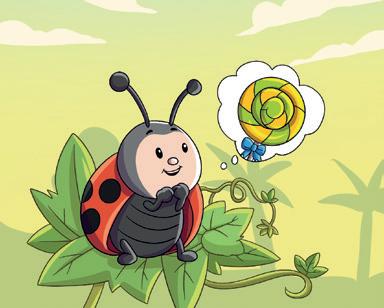
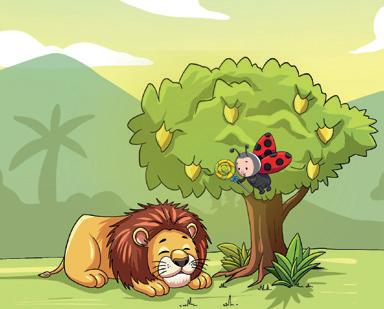





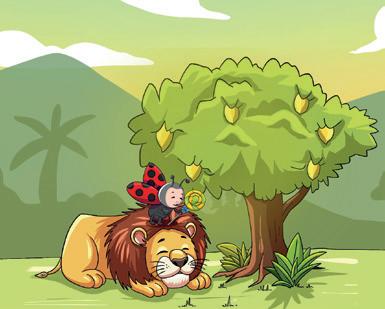
Refer to the letters Ll story card and read the story. Circle the letters Ll in the story card.
LO: Children will make a simple art work using different shapes (circle, square, and triangle).
Resources: A4 size paper (1 per child); small cutouts of 1 circle, 2 squares and 3 triangles (per child); glue; crayons
1. Shape Hunt: Gather the children in a circle and say: Let’s find shapes around us! Point to classroom objects and ask: Is this a circle, a square, or a triangle? Encourage children to give responses.
2. Making a Rocket: Give each child an A4 sheet cutouts of the shapes. Say: Let’s make a fun picture using these shapes! Guide the children to make a rocket using the shapes:
• 2 squares for the body of the rocket.
• 1 circle for the window.
• 1 triangle for the pointed tip.
• 2 triangles, for the wings, one on each side.
Guide the children to paste the shapes correctly. Then ask them to colour the rocket with crayons and decorate it. Assist those who need help.

LO: Children will discuss the craft they made in the numeracy session using shapes.
Resources: Artwork made in the numeracy session
1. Connecting with Numeracy Session: Ask: What did we make in the Numeracy session today? Take a few responses and say: We made a rocket using shapes. Today we will talk about the rocket we made.
2. Show and Tell: Call children one by one and ask them to show and talk about the rockets they made. Guide them to say: I made a rocket today. I used ____, ____ and ______ shapes to make the rocket. (ask children to point and show the shapes). I coloured my rocket with _______ colours.
You can ask the children to share in their home language or in a mixed language if they struggle to share in English.








Domain
General Awareness
Learning Outcome Children will identify different places in a school and share one thing they like to do in school.
Resources General Awareness, page 35
Suggested Method Call the children one by one. Name three places in a random order, such as a bedroom, library, or classroom. Ask each child to identify the place found in school. Then, encourage them to share one thing they like about school. Ensure every child gets a turn. Clap for each child and give them a smiley sticker.
Support for Struggling Learners
Gather the struggling learners and ask them to form a line. Take them around the school and help them identify different places such as classrooms, the library, the washroom, and the playground. If taking them around the school is not possible, show pictures from page 35 of the General Awareness book and discuss them.
Domain Foundational Literacy
Learning Outcome Children can connect the sounds and symbols of letters Kk and Ll, and read common words starting with them.
Resources Objects or pictures starting with /k/ and /l/ sounds; chalk; letters Kk and Ll story cards
Suggested Method Write letters K and L on the floor with chalk. Call the children one by one, ask them to sort and place the objects starting with /k/ sound on K and the ones starting with /l/ sound on L. Finally, use the story cards to read the stories aloud while emphasising the words that start with /k/ and /l/ sounds. Ask the children to repeat these words after you. Let them point at those words in the story cards while saying them aloud. Ask them to read the sentences slowly given on the story cards of letters K and L.
Support for Struggling Learners
Domain
Gather the learners in a circle. Show them some objects or pictures of objects starting with the letters Kk. For example, say: /k/ /k/ king and ask the children to repeat after you. Repeat the same for pictures and words in the story card. Then, write the letters K and k on the board, call the children one by one and ask them to trace the letters with chalk. Repeat the same for the letters Ll.
Foundational Numeracy
Learning Outcome Children will differentiate between the shapes circle, triangle and square.

Resources Shapes flashchards (from Skillbook); objects of circle, triangle and square shapes
Suggested Method Call the children one by one. Draw a circle, triangle, and square on the floor. Ask each child to pick an object along with the flashcard and place it inside the correct shape. Clap for each child and give them a smiley sticker.
Support for Struggling Learners
Hand out the shape flashcards to the children. Draw a circle on the board and say: This is a circle. Ask them to find and hold up the flashcard showing a circle. Then, show objects that resemble a circle (bangle, coin, clock). Repeat the same for the remaining shapes—a square and a triangle.



































Circle Time Sing and Shine
General Awareness My Classroom General Awareness, page 37
Foundational Literacy Do and Learn Literacy Skillbook, page 32
Foundational Numeracy Number 6 Numeracy Skillbook, page 36
DIY Water, Water Everywhere
LO: Children will be able to recite or sing a rhyme of their own choice.
STEM Exploration, pages 13-15
1. Warm-Up: Gather the children in a circle. Say: Today, we will play a singing game called Sing and Shine. Demonstrate the activity by singing a short rhyme, such as ‘Twinkle Twinkle Little Star’ and encourage everyone to hum or clap along.
2. Sing and Shine: Ask the children to sing any rhyme they like. Cheer and clap after each performance to encourage participation. Continue until everyone has had a turn.
If someone feels shy, invite them to sing with a friend or as a group.

LO: Children will explore and identify some common objects found in the classroom.
Resources: General Awareness, page 37; classroom objects (table, chair, board, cupboard, books, toys)
Introduction
1. Classroom Treasure Hunt: Gather the children and say: Today, we will go on a treasure hunt to find things in our classroom! Call out items one by one (e.g., Find a chair! Find a book!). Encourage children to look around and point to or touch the correct object. Cheer for each correct response.

2. I Spy: Play the ‘I Spy’ game. Say: I spy with my little eye something we use to write! Let children guess the object (e.g., pencil, chalk). Repeat with different classroom items, giving clues about their colour, shape, or use.
3. My Classroom: Guide the children to refer to page 37 of the General Awareness book. Ask them to identify and circle the things they see in the classroom. Assist those who need help.






















LO: Children will identify the beginning letters of objects and recognise the capital and small letters. Resources: Literacy Skillbook, page 32; letter flashcards I–L (from Skillbook); sticker sheet (from Skillbook); some objects or pictures of objects with /i/, /j/, /k/ and /l/ sounds
1. Letters Identification: Hand out the flashcards to the children. Show objects or pictures one by one. Ask children to hold up the flashcard for the beginning letter of each object. Monitor and guide as needed.
2. Matching Capital and Small Letters: Write capital and small letters (I, i, J, j, K, k, L, l) on the board in a jumbled order. Call a few children to match and draw lines between the correct pairs. Repeat until all letters are matched.
3. Do and Learn: Guide children to open page 32 of the Skillbook. Ask them to identify the pictures and paste the correct letter sticker beside each object. Then, have them match the capital letters with the small letters.
LO: Children will count 6 objects and trace the number 6.






Resources: Numeracy Skillbook, page 36; countable objects (pencils, erasers, books, crayons, etc.)
1. Warm-Up: Recite the Number 6 rhyme with voice modulation and expressions. Repeat 2–3 times with the children for reinforcement.
Number 6
Look at 6, nice and round, It is the number we have found. Count with me, pick up the sticks, 1, 2, 3, 4, 5, and 6!
2. Counting 6: Show 6 objects and guide the children to count aloud, for example: 1-2-3-4-5, 6–6 crayons. Repeat with different objects 3–4 times. Then, ask them to count and show 6 fingers.
3. Air Tracing: Write number 6 on the board, saying: First, a small curve going left and down, then keep curving around to form a circle. Guide children to air trace it 5–6 times in air with their index finger.
4. Number 6: Ask children to open page 36 of the Skillbook. Guide them to count 6 ducks, trace the dotted lines with crayons, and write number 6 in the blank boxes. Take a plate of flour and use your index finger to trace the number 6 on it.








LO: Children will understand that water is useful in daily life. Resources: STEM Exploration, pages 13–15; real objects like—bottle of water, glass of water; pictures of—rain, pond, river, sea
1. Warm-Up: Gather the children and say: Today, we will learn why water is so important! Pour water into a clear glass and ask: What is this? Listen to their responses. Then, say: This is water! We drink it, use it for cooking, and for cleaning ourselves.
2. Water Charades: Play a fun guessing game. Act out an activity that requires water, such as drinking, brushing one’s teeth, and watering the plants, and ask: What am I doing? Let the children guess. Repeat with different actions, and invite children to take turns acting. Assist those who need help.



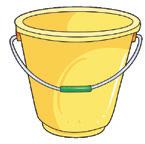




Circle Time
The ‘I Spy’ Game
General Awareness I Behave Well
Foundational Literacy Do and Learn
Foundational Numeracy Number 6
DIY Water, Water Everywhere
General Awareness, page 38
Literacy Skillbook, page 33
Numeracy Workbook, page 21
STEM Exploration, pages 13-15
LO: Children will practise identifying objects based on colours and beginning sounds while improving observation skills.
Resources: Classroom objects; toys; pictures or real items visible around the classroom
1. Warm-Up: Gather the children and say: We are going to play the ‘I Spy’ game. Explain the rules:
• Listen carefully to the clue.
• Find an object that matches the clue.
• Do not repeat an object that someone else has already chosen!
2. I Spy with My Little Eyes: Start by saying: I spy with my little eye… something red! Let one child find and name an object in the classroom. Continue with different colours (e.g., blue, green, yellow). Next, switch to beginning sounds! Say: I spy with my little eye… something that starts with /b/! (e.g., board, bag, book). Give hints and clues to guide children when required. Make sure each child gets a chance to participate in the activity.


LO: Children will identify and practise basic classroom manners.
Resources: General Awareness, page 38
1. Get the Right Way: Gather the children and say: Let’s play a game to see what good classroom behavior looks like! Act out different situations (raising a hand before speaking vs. shouting out answers / sharing crayons vs. grabbing them). After each action, ask: Was that the right way to behave? Children show thumbs up for good behavior and thumbs down for incorrect behavior.
2. Fix It Game: Describe a situation where someone is not behaving well (e.g., Maya pushes her friend to sit first). Ask: What should Maya do instead? Let the children suggest better ways to behave. Repeat with different scenarios, ensuring they get a chance to correct behaviors in a fun way!
3. I Behave Well: Guide the children to open page 38 of the General Awareness book. Ask them to observe the pictures carefully. Encourage them to identify and discuss each behavior shown. Then, assist them in ticking the pictures that show good behavior and crossing the ones that show the bad behavior. Assist those who need help.





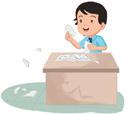


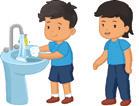
Appreciate children who follow classroom rules by giving them a Star of the Day badge or a sticker. It encourages others to follow the rules.





LO: Children will identify the first letter of words starting with letters I–L, and make pictures using fingerprints.
Resources: Literacy Skillbook, page 33; bowl of water colours; letter flashcards of I–L (from Skillbook)
1. Identifying the First Letter: Hand out the letter flashcards to the children. Say a word aloud that starts with I, J, K, or L, emphasising the beginning sound (e.g., /l/ /l/ lion). Ask children to hold up the correct letter flashcard. Repeat with different words to reinforce recognition.

2. Do and Learn: Guide children to open page 33 of the Skillbook. Help them identify and name each picture, then write the first letter of each word.
3. Fingerprint Activity: Introduce the fingerpaint activity—show them how to use watercolors to create fingerprint pictures in the empty boxes. Let them explore and enjoy the process while reinforcing the letter sounds.










Ask children to look around the classroom and find objects that start with the letters I, J, K, and L.

LO: Children will count 6 objects and trace number 6.
Resources: Numeracy Workbook, page 21; chalk
1. Recap: Recall number 6 by reciting the rhyme on number 6 from the previous session. Repeat the rhyme 3–4 times.
2. Hopping and Counting 6: Draw 8–10 boxes in a line on the floor, with chalk. Call children one by one and guide them to count while hopping on exactly 6 boxes. Ensure each child gets a turn.
3. Tracing Number 6: Draw a large number 6 on the board and demonstrate how to trace it. Then, write the number 6 on the floor with chalk. Call children one by one to trace it using their index fingers while saying 6 aloud.
4. Number 6: Ask children to open page 21 of the Workbook. Guide them to count the objects, trace the dotted lines to form the number 6, and then write the number 6 independently using a pencil or crayon.
LO: Children will understand that water is useful in our daily life.


Resources: STEM Exploration, pages 13–15; an empty bucket and a bucket of water; plastic mug; a small plant
1. Discussion Time: Seat children in a circle, if possible, with materials in the centre. Ask: Can you see water? Where do we find it? Elicit responses like (rain, pond, river, sea, glass, bottle) and so on.
Call children one by one and ask questions such as:
• Do we need water to drink?
• Do we need water to play?
• Do we need water to bathe? If the answer is yes, they pour a mug of water into the empty bucket. Repeat until all have a turn. Finally, let a few children water a plant.
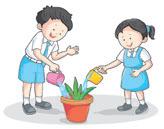

2. Water, Water Everywhere: Guide the children to open pages 14–15 of the STEM Exploration book. Read aloud the questions and discuss them. Guide children to tick the correct answers. With a parent or guardian, observe 3–4 ways water is used in the kitchen.

Circle Time
The Magic Cup
General Awareness Making a Classroom Garden
Foundational Literacy Find Out Literacy Workbook, page 25
Foundational Numeracy Number 7 Numeracy Skillbook, page 37
DIY Story: The Thirsty Crow Rhymes and Stories, pages 22–26
LO: Children will enhance their concentration and observation skills through a fun guessing game.
Resources: 3 colourful plastic cups (non-transparent); a small object (ball, pompoms, or small toy)
1. Warm-Up: Gather children in a circle. Show the three cups and the small object. Say: Let’s play The Magic Cup! I will hide a surprise under one cup. Watch closely and see if you can find it!
2. The Magic Cup: Place the object under one cup while children watch. Slowly shuffle the cups. Ask a child: Which cup has the magic surprise? Let them guess and lift a cup to check. Repeat, giving each child a turn. Offer hints if needed and encourage cheering for their friends.
Start slow to build confidence. Speed up later for extra fun and challenge!

LO: Children will create and display colourful decorations for their classroom.






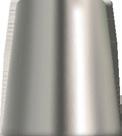
Resources: Colourful paper; crayons; smiley stickers; cutouts of shapes (flowers, stars, balloons, hearts); glue; chart paper
1. Warm-Up: Gather children in a circle. Say: Our classroom is like our second home. When we take care of it, it looks beautiful and makes us happy! Ask: How can we make our classroom nice? Encourage responses like (cleaning, decorating, arranging toys etc.)

2. Creating Classroom Display: Provide materials and show the shapes. Say: Today, we will decorate our classroom by making a colourful display! Guide children to colour and decorate the shapes with stickers. Help them glue their decorated pieces onto chart paper or a classroom wall. As each child finishes, say: Great job! You are making our classroom bright and cheerful!
3. Celebration and Clean Up: Once the display is ready, gather everyone and admire their work. Say: Look at how colourful and beautiful our classroom is now! We did this together! Clap for everyone and give each child a smiley sticker. Encourage children to tidy up by putting away crayons and scraps, reinforcing responsibility and taking care of their classroom.







LO: Children will identify and write the first letter of the given words.
Resources: Literacy Workbook, page 25; objects or pictures starting with letters A to L
Introduction
1. Warm-Up: Spread the objects or pictures on the table. Call children one by one and give them a letter. Say: Find something that starts with A! The child picks an object (e.g., apple) and says its name aloud. Repeat until all children get a turn.
2. Identifying the First Letter: Say a word (lamp) and write it on the board with the first letter missing (___amp). Ask: What is missing? What sound does it start with? Encourage children to guess and fill in the missing letter. Repeat with 6–8 different words.
3. Find Out: Guide children to open page 25 of the Workbook. Ask them to name each picture, listen for the first sound, and write the correct letter within the blank space. Assist as needed.
LO: Children will count 7 objects and trace the number 7.



Resources: Numeracy Skillbook, page 37; countable objects (like pencils, books, pompoms, crayons, etc.)
1. Counting 7: Show 7 objects and guide children to count aloud: 1-2-3-4-5-6-7–7 books! Repeat with different objects 3–4 times. Then, ask children to count and show 7 fingers.

2. Air Tracing: Write number 7 on the board and say: First, a sleeping line, then a standing line down. Guide children to air trace number 7 five to six times using their index fingers.
3. Number 7: Ask children to open page 37 of the Skillbook. Guide them to count 7 cats, trace the dotted lines with crayons, and write number 7 in the blank boxes.









Take a plate of flour and use your index finger to trace the number 7 on it.
LO: Children will listen to, observe, and discuss the pictures of the story The Thirsty Crow. Resources: Rhymes and Stories, pages 22–26
1. Warm-Up: Gather children in a circle. Say: Today, I will tell you a story about a clever crow. It was very thirsty! Let’s find out what the crow did. Ask: What do you do when you feel thirsty? Listen to their responses.
2. Picture Talk: Show the pictures from the story one by one and engage children in a short discussion. Ask them questions such as:
• What do you see in the picture?
• What is the crow doing?
• What is the colour of the Crow? Encourage children to observe and share their thoughts.


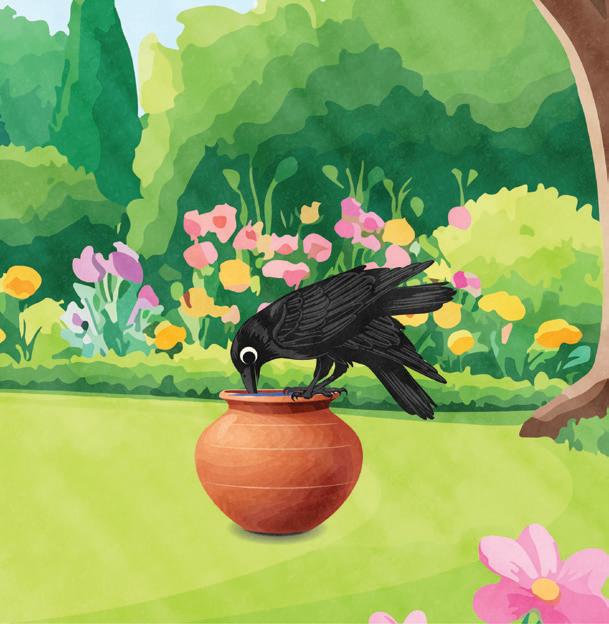
3. Interactive Read-Aloud: Read the story The Thirsty Crow aloud with clear expressions and voice modulation. Pause at every page to show the pictures while reading.
Do NOT discuss the story with the children in this session. Just guide them to look at the pictures and read aloud the story.

Circle Time Story Time
General Awareness Colour Blue
Foundational Literacy Do and Learn
Foundational Numeracy Number 7
General Awareness, page 39
Literacy Workbook, page 26
Numeracy Workbook, page 22
DIY Story: The Thirsty Crow STEM Exploration, pages 13–15
LO: Children will create and narrate a simple story using picture prompts, enhancing their imagination, listening, and speaking skills.
Resources: A soft toy; animal flashcards (from General Awareness book); some common classroom objects
1. Warm-Up: Say: Today, we will create our own story! Explain that every story has a beginning, middle, and an end. Show the picture cards and say: Let’s pick some of the animals and make a story together!
2. Story Time: Seat children in a circle, if possible and pass the soft toy around When the music stops, the child holding the toy picks a flashcard and an object and starts the story with a simple sentence. (e.g., Once upon a time, there was a cat who loved playing with a ball.). Other children take turns adding to the story. Guide them with prompts, such as: What happens next? Help them complete the story with a happy ending. (All the animals played and lived happily in the forest)
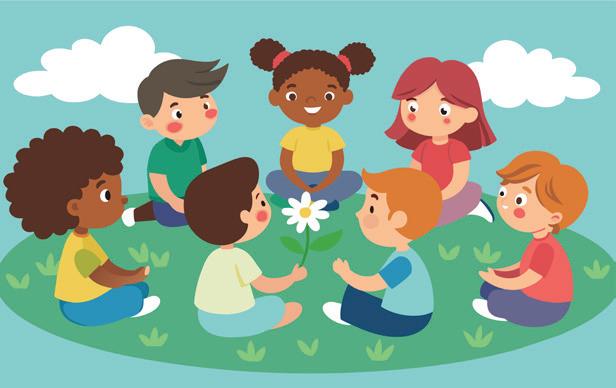
Praise all ideas to boost confidence. Keep the story short—3 to 4 sentences are ideal for their age.


LO: Children will identify objects that are blue in color.
Resources: General Awareness, page 39; blue coloured objects (toy car, ball, cap, bottle, crayon, etc.); objects of other colours; a box
1. Rhyme Time: Begin by singing the rhyme Colour Blue. Repeat 3–4 times with children for reinforcement.
Colour Blue
Blue is the sky, so big and high, Blue is the sea, where fishes swim by. Blue is a butterfly, soft and bright, Blue is a kite, flying so light!
2. Introducing the Colour Blue: Say: Today, we are going to learn a new colour—blue. Show the blue objects one by one and say: This is blue. Examples: Blue ball, blue toy car, blue cap, blue bottle. Ask: What colour is this? Encourage children to respond: Blue!
3. Blue Hunt: Mix objects of various colours, including blue, in a box. Call children one by one and guide them to find and pick at least two blue objects from the box.
4. Colour Blue: Ask the children to open page 39 of the General Awareness book. Ask them to colour the jacket using blue crayons. Then, help them find and circle the blue objects using their blue crayons.








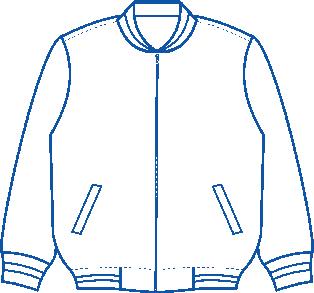





LO: Children will identify the starting letter of a picture and spot the incorrect letter from a given set. Resources: Literacy Workbook, page 26; picture flashcards of letter A–L (from Skillbook); objects or pictures of objects starting with letters A–L
1. Letters and Picture Match: Hand out the picture flashcards to the children. Call out a letter and say: Who has a picture that starts with this letter? Encourage children to hold up the correct card and say the word aloud.
2. Tracing and Writing Letters A–L: Call children one by one. Say a letter sound, for example, /i/, and ask the child to trace and write both uppercase and lowercase Ii on the board with chalk. Repeat with different letters until each child gets a turn.
Practice
3. Do and Learn: Guide children to open page 26 of the Workbook. Assist them in identifying the letters, circling the correct pictures, and spotting any incorrect letters. Finally, ask them to write letters a–l neatly in the given space. Assist those who need help.
LO: Children will identify, count, trace and write the number 7.
















Resources: Numeracy Workbook, page 22; countable objects (like books, pencils, crayons, pompoms, etc.)
Introduction
1. Counting 7: Write numbers 1–7 in a random order on the board. Call children one by one and say: Circle number 7. Then, ask them to count and pick 7 objects.

2. Tracing Number 7: Write number 7 on the board and say: This is number 7. Then, call children one by one and let them take turns tracing it on the board.
3. Number 7: Ask children to open page 22 of the Workbook. Guide them to count the objects, trace the dotted lines, and write number 7 using a pencil or crayon.


LO: Children will listen to, observe and discuss the pictures of the story The Thirsty Crow. Resources: Rhymes and Stories, pages 22–26
1. Interactive Read-Aloud: Read aloud the story The Thirsty Crow with expressions and voice modulation. Pause to show the pictures and ask:
• Who was thirsty?
• Did the pot have a little water or a lot of water?
• What did the crow do?
• What did the crow do with the small stones?



• Was the crow happy? Encourage each child to participate and give responses.
2. Pebble Drop Game: Place a jar with little water in front of the children and show the crow puppet. Say: Our crow is thirsty again! Let’s help by adding pebbles to raise the water. Call each child to drop a pebble into the jar, chanting together: Drop, drop, drop—the water goes up! Repeat until everyone gets a turn.







Domain General Awareness
Learning Outcome Children identify and name different things in the classroom and practise basic classroom manners.
Resources Some common classroom objects
Suggested Method Show them a few classroom objects and ask them to identify and name each one (e.g., chair, table, pencil, eraser, book, etc.). After naming the objects, present a few simple scenarios related to classroom manners. Ask the child how they would respond in each situation. For example:
• What would you do if your friend wants to play with the same toy? (Sharing toys)
• What should you do if you want to say something in class? (Raising your hand)
• Is it okay to shout out answers in class? (Shouting for answers)
• Should we throw papers on the floor? (Littering)
• Is it nice to push our friends? (Pushing friends) Clap loudly to appreciate their effort and give them a smiley sticker or stamp as a reward. Repeat the process until every child has had a turn.
Support for Struggling Learners
Gather the children in a circle. Refer to the pictures on page 37 of the Coursebook. Point to each picture and say the names aloud. Then, ask the children to identify a few objects they see in their classroom.
Domain Foundational Literacy
Learning Outcome Children will identify the beginning sound of objects starting with letters I–L.
Resources Letter flashcards (from Skillbook)
Suggested Method Hand out the letter flashcards to the children and call them one by one. Say the name of any one object starting with letters I, j, k or l and write the spelling on the board with the first letter missing. For example, say: lamp and write __ a m p on the board. Ask children to identify the beginning sound and show the flashcard showing the first letter. Clap loudly for each child and give them a smiley after they finish. Repeat this process until every child gets a turn.
Support for Struggling Learners
Domain

Show an object or picture of an object starting with /i/ sound and say it aloud. For example: /i/ /i/ inkpot OR /i/ /i/ igloo. Ask the children to repeat after you. Guide them to say other words starting with /i/ sound. Repeat the same for letters J, K and L.
Foundational Numeracy
Learning Outcome Children can identify, trace and write numbers 6 and 7.
Resources Number flashcards (from Skillbook); objects, such as balls, erasers, books, pencils, etc.; two boxes
Suggested Method Keep 6 objects in one box and 7 in the other. Call children one by one and ask them to identify the boxes with 6 objects and 7 objects. Shuffle the boxes each time you call a new child. Then, write numbers 6 and 7 on the board and ask them to identify the symbols and trace them with their index fingers. Clap loudly for each child and give them a smiley after they finish. Repeat this process until every child gets a turn.
Support for Struggling Learners
Gather the learners together and give them the number flashcards from Skillbook. First, help them count 6 fingers. Repeat 2–3 times for reinforcement. Then, write number 6 on the board and ask children to identify and hold up the flashcard showing number 6. Repeat the same for number 7.




































Domain
Circle Time
Complete the Path
General Awareness Places Around Us
Book & Page
General Awareness, pages 40–41
Foundational Literacy Letters Mm—Sound, Symbol, Key Words Literacy Skillbook, pages 34–35; Literacy Workbook, page 27
Foundational Numeracy Number 8—Concept Numeracy Skillbook, page 38
DIY
A Butterfly in My Hands
Art and Craft, page 10
LO: Children will improve their problem-solving skills and fine motor skills.
Resources: Chalk
1. Setting the Scene: Use chalk to draw a puzzle path on the floor. Each path should follow a logical pattern but have a missing piece. For example: 1, 2, ___, 4, ___, 6 or A, ___, C, D, ___, E.
2. Fix the Path: Call one child at a time to draw the missing piece using chalk. Encourage them to think aloud (e.g. I see 1 and 2... what comes next?).
3. Wrap-Up: Ask: What helped you find the missing piece? Let children share their answers freely. Reinforce the idea that patterns and sequences help us in everyday life, such as following a morning routine or counting objects in order.

LO: Children will identify different places around them.
Resources: General Awareness, pages 40–41
1. Warm-Up: Ask children to name a few places around their homes, such as park, market, shop etc. Encourage them to say at least one line about these places. You may ask questions that will help the children to answer, such as: What do you see in these places?
2. Place Around Us: Ask children to open pages 40–41 of the General Awareness book. Point to the picture of a school and say: This is a school. We study in a school. Similarly, describe the other places as well.


3. Ticking the Places Around Us: Ask the children to carefully look at the pictures of the different places. Guide them to tick the places that they have seen in their neighbourhood.











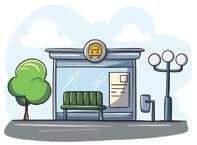
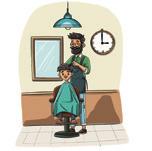






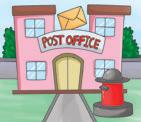
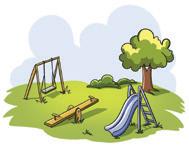


LO: Children will identify the sound /m/, the symbols Mm, and key words that begin with M.
Resources: Literacy Skillbook, pages 34–35; Literacy Workbook, page 27; chalk
1. Singing for the /m/ Sound: Introduce the /m/ sound by singing this rhyme to the children. Repeat it at least 2–3 times, encouraging the children to join in.
Letter M Rhyme
/m/ /m/ monkey, swinging up high, /m/ /m/ moon, shining in the sky. /m/ /m/ mango, juicy and sweet, /m/ /m/ mittens, warming my feet. /m/ /m/ is for magic, /m/ /m/ is for me, M makes words fun, can you see?
2. Words Starting with /m/: Ask the children to open to page 34 of the Skillbook. Point to each picture and read its name, emphasising the /m/ sound. For example: /m/ /m/ monkey OR /m/ /m/ mango.
3. Symbol Recognition of Letters Mm: Write the letters M and m on the board. Then, call the children to the board to trace the letters. Then, ask everyone to trace the letters in air using their index fingers.
4. Writing Practice of Letters Mm: Ask the children to open to page 34 of the Skillbook. Ask them to trace the letters.
5. Identifying Letter M Objects: Then, ask the children to solve the maze given on page 35. Tell them that they must draw a line from the monkey to the mango to do this activity. Assist children whenever required.






In page 27 of the Workbook, trace and write the letters Mm as given.

LO: Children will understand the concept of 8 through tracing and writing ‘8’.
Resources: Numeracy Skillbook, page 38; some countable objects (pencils, crayons, ice-cream sticks, pompoms, etc.)
1. Counting 8: Place a group of objects on the table. Call children one by one and guide them to count 8 objects. Encourage them to say: 1, 2, 3, 4, 5, 6, 7, 8 while counting. Repeat with different objects and ensure everyone gets a turn.
2. Tracing 8: Write the number 8 on the board and say: This is number 8. Then, call children one by one to trace the number on the board. After that, ask them to trace the number in air with their index fingers.
3. Number 8: Ask children to open page 38 of the Skillbook. First, help them count the eight ladybirds. Then, ask them to trace the number 8 with a crayon. Finally, have them write the number 8.








LO: Children will learn about nature and enhance sensory skills through art and craft.
Resources: Art and Craft, page 10; blue paint; paint brush
1. Word Game: Draw a butterfly on the board. Ask children to share one word that comes to their minds when they think of a butterfly Give examples like: fly, wings, colourful, etc.
2. A Butterfly in My Hands: Ask children to open page 10 of the Art and Craft book. Paint their palms blue and help them make handprints to make the butterfly’s wings. Make sure to help the children wash their hands properly once the activity is completed.



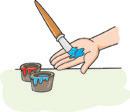


Circle Time
Creating a Story
General Awareness Places Around Us
General Awareness, pages 40–42
Foundational Literacy Letters Mm Literacy Skillbook, pages 34–35
Foundational Numeracy Number 8
DIY Aquatic Animals
LO: Children will develop the ability to express their thoughts.
Numeracy Workbook, page 23
Art and Craft, page 11
1. Warm-Up: Gather the children in a circle, if possible. Say: I will give you the first line of a story. You can add your own lines to it. Give them an example Read one line from any storybook or from the Rhymes and Stories book. Then, add your own line to it.
2. Encourage Problem Solving: If the story takes an unexpected turn (e.g., “The key opened a magic door…”), give the children prompts and hints to help then think. You may ask questions, such as:
• What could be behind the door?
• Who might the cat meet next?
• Is it a good surprise or a tricky challenge?
After 2 turns, help the children end the story. You may have a small discussion around what was the children’s favourite part in this activity.

LO: Children will acquire more awareness about their surroundings. Resources: General Awareness, pages 40–42
1. Revision: Play a game where you give some hints to the children about a place and they must guess the name of the place. For example, ask: We go to this place when we fall sick (hospital) / We go to this place to deposit money (bank).




















2. Things We See: Ask children to open pages 40–41 of their book. Pick any one place, say a bakery, and ask children to share different things that they can find in that place. Guide them to give answers like bread, cakes, a baker, etc. Repeat the same for all the places and discuss as many things as you can see in each place.
3. Places Around Us: Ask children to turn to page 42 of the General Awareness book. Help them identify the different places and correctly circle the things that are found in those places.





















LO: Children will be able to read and recognise words that start with the letters Mm.
Resources: Literacy Skillbook; pages 34–35; Story card of letters Mm; chalk
1. Recalling Symbol and Sound of Letters Mm: Reinforce the sound of letters Mm by showing pictures from page 34 of the Skillbook, emphasising on the beginning sounds. For example, say: /m/ /m/ mango. Then, write the letters M and m on the board and invite the children to trace the letters with chalk.
2. Reading Words with Mm: Read aloud the sentences given on page 35 emphasising on the words starting with the letters Mm. Then, read them slowly and ask the children to read along with you.
3. Picture Talk and Read Aloud: Show the pictures from the story card and discuss them one by one. Then, read aloud the story given for letters Mm in the story card with expressions and voice modulation. Pause to show the pictures and ask relevant questions, such as:
• What is the name of the monkey?
• Where does the mosquito sit?
• With what did Manu hit the mosquito?
• What does Manu do while mopping the floor?






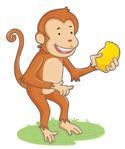

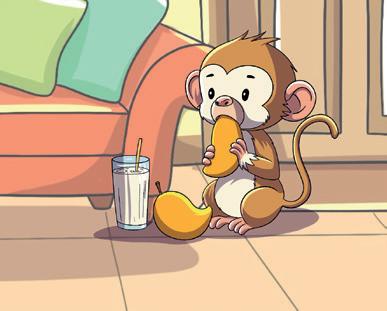

Find and circle the words starting with Mm in the story card for the letters Mm.

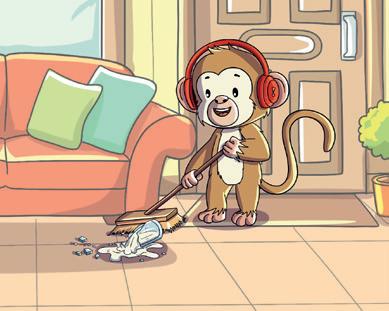
LO: Children will be able to count to 8 and write ‘8’ correctly.
Resources: Numeracy Workbook, page 23; number flashcards 5 to 8 (from Skillbook); objects such as pencils, erasers, etc.; chalks
1. Counting 8: Place three groups of objects on the table, ensuring one group has 8 objects. Hand out the number flashcards to the children. Call them one by one to count the objects in each group. Once they find the group with 8 objects, ask them to place the number 8 flashcard next to it.
2. Tracing 8: Call 3 children at a time. Give each of them a chalk and guide them to trace number 8 on the board. Ensure everyone gets a turn.
3. Number 8: Ask children to open page 23 of the Workbook. Ask them to count the number of flowers and trace 8 in the box. Then, ask them to count the leaves and write 8 in the box. Finally, ask them to trace as well as write 8 in the boxes.
LO: Children will identify the water animals.
Resources: Art and Craft, page 11, sticker sheet (from Art and Craft book)
1. Identifying the Aquatic Animals: Ask children to open page 11 of Art and Craft book. Ask: What do you see? Let children share their answers freely, then say: These are water animals.
2. Pasting Stickers: Point and help them identify the aquatic animals (whale, seahorse, starfish, dolphin, clown fish, turtle and octopus). Then, help them paste the correct stickers from the sticker sheet.











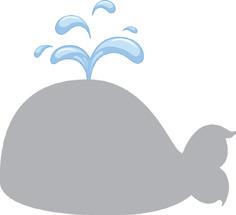












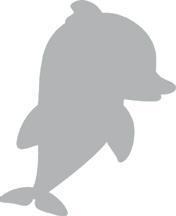
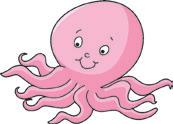

Circle Time
Vocabulary Treasure Hunt
General Awareness People at School General Awareness, page 43
Foundational Literacy Letters Nn—Sound, Symbol, Key Words Literacy Skillbook, pages 36–37; Literacy Workbook, page 28
Foundational Numeracy Do and Learn Numeracy Skillbook, page 39
DIY Rhyme: The Hokey Pokey Song Rhymes and Stories, page 27
LO: Children will identify the pictures with their names. Resources: Chalks
1. Setting Up: Draw simple pictures on the board using chalk (e.g., cat, sun, hat, bus). Say: I will call out a word and you have to choose the correct picture.
2. Game Time: Call out a word (e.g., Find the sun). The children must come up to the board and identify the correct picture. Ensure everyone participates and appreciate the children for their participation.

LO: Children will identify and name different people who work at school. Resources: General Awareness, page 43
1. Discussion Time: Gather the children and ask: Who do you see at school? Encourage responses like teacher, principal, sweeper, and guard. Briefly explain their roles in simple words, for example: A teacher helps us learn. / A sweeper keeps our school clean.
2. Role Play: Assign different school roles to the children. Let them pretend to be a teacher, principal, or the school bus driver by acting out simple tasks like teaching, checking attendance, or driving the bus. Encourage everyone to take turns and discuss why each role is important.
3. People at School: Ask the children to open page 43 of the General Awareness book. Point to each picture one by one and name the people shown. Encourage the children to say the names aloud. Finally, read the sentence written below each picture clearly for them to follow along.

















LO: Children will identify the sound /n/, the symbols Nn, and key words that begin with N.
Resources: Literacy Skillbook, pages 36–37; Literacy Workbook page 28; flashcards of letters L to N (from Skillbook)
Introduction
1. Singing to Letters Nn: Introduce the /n/ sound with a fun rhyme and repeat it 2–3 times together.
Practice
2. Listening to /n/ Sounds: Show pictures from page 36 of the Skillbook and say the /n/ sound with each word, example: /n/ /n/ nest. Encourage children to repeat many times after you.
3. Symbol Recognition of Letters Nn: Write N and n on the board and call children to trace the letters with chalk.
4. Writing Practice of Letters Nn: Guide children to trace the dotted lines on page 36 of the Skillbook to form letters N and n.
5. Matching Letters Nn: Ask children to open page 37 of the Skillbook. Guide them to identify the pictures starting with /n/ sound and match them with letters Nn.
Letter N Rhyme /n/ /n/ nest in the tree, /n/ /n/ nuts, just for me! /n/ /n/ nose, for me to smell, /n/ /n/ night, to sleep so well!






Complete tracing and writing the letters N and n on page 28 of the Literacy Workbook.
LO: Children will practise counting numbers 1–8.
Resources: Numeracy Skillbook page 39; flashcards of the numbers 1 to 8 (from Skillbook); some countable objects (pencils, crayons etc.)
Introduction
1. Numbers 1–8: Give the flashcards to the children. Say aloud a number between 1–8 and ask the children to hold up the flashcard showing that number. Monitor and guide the children wherever required.
2. Counting Objects: Keep some objects on the table. Call children one by one and give them any number between 1–8. Ask the children to count and pick up that many objects.

3. Do and Learn: Ask children to open page 39 of the Skillbook. Guide them to count and write the correct number in the boxes. Then, ask them to read the number and draw the exact number of cherries on the cake.


















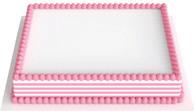


LO: Children will identify the left and right sides and sing The Hokey Pokey Song. Resources: Rhymes and Stories, page 27
1. Left and Right Side: Help children identify their left and right side. Then give them simple instructions like: wave your right hand / put you left leg forward / point to your right eye and so on.
2. Rhyme Time: Sing the Hokey Pokey Song from page 27 of the Rhymes and Stories book with actions. Ask the children to follow the actions. Repeat 2–3 times.
You can also help children identify the left side and the right side of their classroom and observe things that are kept on each side.




Circle Time
General Awareness
Sound Hunt
Saying Thank You to Helpers in School
Foundational Literacy Letters Nn Literacy Skillbook, page 37
Foundational Numeracy Numbers 1 to 8 Numeracy Workbook, pages 24–25
DIY Rhyme: The Hokey Pokey Song Rhymes and Stories, page 27
LO: Children will be able to develop sensory skills (hearing) through an activity.
Resources: A small bell
1. Warm-Up: Sit the children in a circle, if possible. Ask them to close their eyes and say: I will make a sound, and you have to find out where it’s coming from! Make some sounds from different corners of the classroom. Let them listen carefully as you make different sounds (clapping, tapping, humming).
2. Sound Hunt: Choose one child to close their eyes while you secretly give a small bell (or any sound-making object) to another child. That child shakes the bell, and the one with closed eyes guesses from which side the sound came. If they guess correctly, they switch roles!
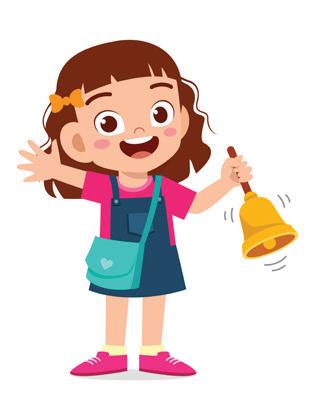
To make it more fun and engaging you can ask the child to guess who made the sound.
3. Wrap-Up: After a few rounds, discuss how the children used their left and right ears to guess where the sound was coming from.

LO: Children will understand the value of helpers and express their gratitude. Resources: A4 size papers (per child); crayons; stickers
Introduction
1. Making a Thank You Card: Gather the children and explain that they will make thank you cards for helpers at school, like the sweeper, security guard, or gardener. Provide coloured paper, crayons, and stickers. Guide them fold the A4 paper in to a card; decorate their cards and help them write “Thank You” inside.

2. Meeting People: Take the children around the school to meet the helpers. Ask questions like: What does the sweeper do? or How does the security guard help us? Encourage children to say Thank you when meeting each person.
3. Giving Cards: Let each child hand their thank you card to a helper. Encourage them to smile and say: Thank you for helping us! Discuss how saying thank you makes people feel happy and appreciated.







LO: Children will be able to read and recognise words that start with the letters Nn. Resources: Literacy Skillbook; pages 36–37; Story card of letters Nn; chalk
1. Recalling Sound and Symbol of Letters Nn: Reinforce the sound of letters Nn by showing pictures from page 36 of the Skillbook, emphasising on the beginning sounds. For example, say: /n/ /n/ net. Then, write letters N and n on the board and as invite a few children to come and trace the letters.










2. Letters Nn: Read aloud the sentences given on page 37 emphasising on the words starting with /n/ sound. Ask the children to repeat the words after you and circle the words starting with N and n.
3. Picture Talk: Show the pictures from the story card and discuss them one by one. Ask:
Picture 1: What do you see in the picture?
Picture 2: What food is the man making?
Picture 3: What is the woman doing?
Picture 4: What are the man and the woman doing in the picture?

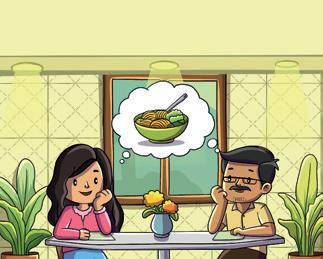
4. Interactive Read-Aloud: Read aloud the story of letters Nn from the story card with expressions and voice modulation. Pause to show the pictures and ask relevant questions. You can ask them questions like: What food does Mr Nobo and Mrs Nobo love? / What does Mr Nobo make for dinner? / What does Mrs Nobo read? Find and circle the words starting with /n/ sound in the story card of letters Nn.
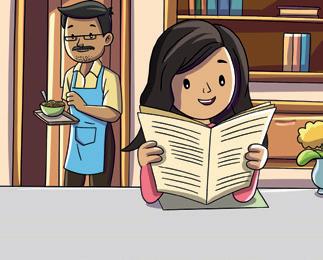





LO: Children will count and identify the sy mbols of numbers 1–8 and find the missing numbers. Resources: Numeracy Workbook, pages 24–25; chalks, some countable objects
1. Identify and Count: Write any two numbers on the board. Call children one by one and ask them to identify the numbers and count and put that many objects on each number. Ensure all children get a turn and change the numbers each time.
2. Find the Missing Numbers: Write some numbers on the board with a few numbers missing. For example: 1, 2 ____, 4, ____, 5, ____, ___8. Ask the children to identify and state the missing numbers.
3. Numbers 1 to 8: Ask children to open pages 24 and 25 of the Workbook. Guide them to solve the exercises as per the given instructions.



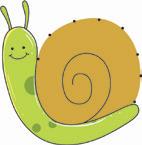





















LO: Children will recite The Hokey Pokey Song and develop gross motor skills. Resources: Rhymes and Stories, page 27; A4 size paper (per child); paint; paint brush
1. Rhyme Time: Recite The Hokey Pokey Song with actions and expressions and ask the children to follow. Repeat it 3–4 times.
2. Making Handprints: Give the A4 size paper to the children and show them how to fold it halves. Help them identify the left side and the right side of the paper. Then, guide them to paint their hands and make a left handprint on the left side and right handprint on the right side of the paper.











Domain
Learning Outcome
General Awareness
Children will identify and name the different places around them.
Resources General Awareness, pages 40–41
Suggested Method Call the children one by one and ask them to name a place they have visited. Guide them to share something they observed there. Ensure each child gets a turn. Clap for each child and give them a smiley sticker.
Support for Struggling Learners
Domain
Gather the struggling learners and seat them in a circle. Refer to pages 40–41 of the General Awareness book. Show the pictures of different places one by one and say their names aloud. Ask the children to repeat each name after you. Also, explain the purpose of visiting each place. For example, say: Bank. We go to the bank to deposit money.
Foundational Literacy
Learning Outcome Children will identify the sounds and symbols of Mm and Nn, and read common words starting with them.
Resources Objects or pictures starting with /m/ and /n/ sounds; chalks; story cards for letters M and N
Suggested Method Write letters M and N on the board, call children one by one to trace the letters with their fingers and identify a few objects starting with /m/ and /n/ sounds. Finally, use the story card to read the story aloud while emphasising the words that start with the /m/ and /n/ sounds. Ask the children to repeat these words after you.
Support for Struggling Learners
Domain
Gather the learners in a circle. Show them some objects or pictures of objects starting with letter M. For example, say: /m/ /m/ mango and ask the children to repeat after you. Repeat the same for pictures and/or words in the story card. Then write letters M and m and a on the board, call the children one by one and ask them to trace the letters with their index fingers.
Foundational Numeracy
Learning Outcome Children will count up to 8 objects and identify the symbol 8.
Resources

Countable objects; flashcard of number 8 (from Skillbook)
Suggested Method Call the children one by one and ask them to identify the flashcard showing number 8. Then, ask them to count and pick any 8 objects. Clap for each child and give them a smiley sticker.
Support for Struggling Learners
Pair the struggling learner with a confident learner. Ask the buddy to help the learner count 8 fingers. Then, give each pair a chalk and ask the buddy to guide the learner to trace number 8 on the floor.



































Circle Time
Helping a Lost Puppy
General Awareness People Who Help Us
General Awareness, pages 44–45
Foundational Literacy Letters Oo Literacy Skillbook, page 38; Literacy Workbook, page 29
Foundational Numeracy Number 9
DIY Draw Your Face
Numeracy Skillbook, page 40
Art and Craft, page 12
LO: Children will share different ways in which they can help a lost puppy.
1. Warm-Up: Start by telling the children a simple scenario: Imagine you see a small puppy alone on the street, looking scared. How do you think the puppy feels? Encourage children to express feelings like sad, lonely, scared, or hungry.
2. Imagination Time: Ask: What could we do to help the puppy? Let children suggest ideas like— calling an adult, giving it water, feeding it, finding the owner, or making a safe space for it.
3. Act It Out: Call one child at a time. Ask them to role-play helping the puppy, such as gently approaching it, calling a grown up, or pretending to give food and water. Support those who need help. Make sure each child gets a chance to participate.
4. Reflecting Time: Ask: Why is it important to help animals or people in need? How would we feel if we were lost? Let children share their answers, and encourage them to be kind.

LO: Children will identify people who help us and recognise the roles of different community helpers. Resources: General Awareness, pages 44-45
1. Warm-Up: Say: Today we will learn about the people who help us in our daily lives. Then, ask: Do you know who helps us when we are sick? Or who teaches us new things? Let the children guess and then tell them that they are called doctors and teachers. Then, tell them that people who help other people are called ‘community helpers’. Tell them that the community helpers work hard to keep us safe, healthy, and happy. They work hard to keep us safe, healthy, and happy.
People Who Help Us
People, people, who help me, Working hard so carefully! Doctor, teacher, farmer too, Postman, cobbler—to name a few. People, people, kind and true, A big thank you, from me to you!

2. Rhyme Time: Recite the rhyme People Who Help Us with voice modulation and expressions. Repeat it 3–4 times. Encourage children to sing along.
3. Discussion Time: Refer to pages 44–45 of the Skillbook and point to each picture. Introduce the helpers one by one. For example, point to the first picture and say: This is a farmer. A farmer grows crops for us. Say each name aloud and ask children to repeat after you. Continue the same for all helpers.








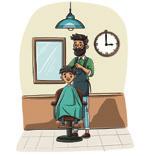


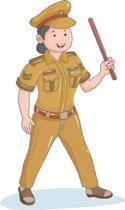
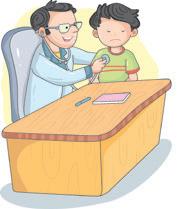




LO: Children will identify the symbol and sound of the letters Oo and write the letters.
Resources: Literacy Skillbook, page 38; Literacy Workbook, page 29
1. Singing to Letters Oo: Introduce the letters Oo with a fun rhyme. Repeat it at least 2–3 times, encouraging the children to join in.
Letter Oo /o/ /o/ Octopus, swimming in the sea, /o/ /o/ Orange, so juicy and sweet. /o/ /o/ Ostrich, running very fast, /o/ /o/ Owl, wakes up the last.
2. Listening to the /o/ Sound: Guide the children to page 38 of the Skillbook. Point to each picture and say the word, emphasising on the /o/ sound. For example: /o/ /o/ octopus / OR /o/ /o/ orange.
3. Symbol Recognition of Letters Oo: Write capital O and small o on the board. Call a few children to trace the letters on the board. Then, ask everyone to trace the letters in the air using their index fingers.

4. Writing Practice of Letters Oo: Guide the children to page 38 of the Skillbook. Ask them to trace the letters Oo carefully. Support those who need help.
5. Identifying Objects with Letters Oo: Ask the children to turn to page 39 of the Skillbook. Say: This is Olly the Octopus; she is holding some objects in her hands. Encourage the children to read the sentences slowly along with you emphasising on the /o/ sound. Then, guide them to circle the objects starting with /o/ sound.













Refer to page 29 of the Workbook, trace and write the letters Oo given.
LO: Children will count 9 objects and trace the number 9.
Resources: Numeracy Skillbook, page 40; countable objects such as beads, books, crayons, etc.
1. Rhyme Time: Recite the rhyme with voice modulation and actions. Repeat 2–3 times with the children.
2. Counting 9: Show 9 objects and guide children to count aloud, for example: 1-2-3-4-5, 6, 7, 8, 9—9 crayons. Repeat with different objects 3–4 times. Then, ask them to count and show 9 fingers.
Number 9
Nine little ducks went out one day, Over the hills and far away. Mother Duck said, “Quack, quack, quack” And all nine ducks came running back.




3. Air Tracing: Write number 9 on the board. Guide children to trace it in air with their index finger. Then, call a few children and ask them to trace the number 9 on the board.
4. Number 9: Ask children to open page 40 of the Skillbook. Guide them to count the 9 chicks, trace the dotted lines with crayons, and write the number 9 in the blank boxes.



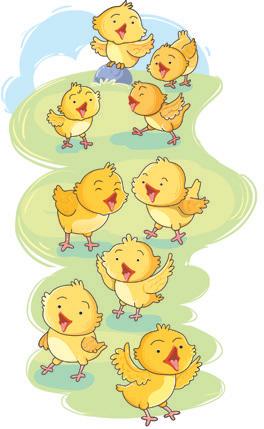
Count, draw and colour 9 flowers in your notebook and bring it to class the next day.
LO: Children will mimic different emotions and draw faces showing different emotions.
Resources: Art and Craft, page 12; a small mirror
1. Making Expressions: Refer to page 12 of the Art and Craft book and show the picture of a happy face. Ask the children to mimic the expression. Repeat with other expressions like sad, angry, and surprised, encouraging them to act out each one.
Pro Tip
Use a small mirror to help children see their faces and make the activity more engaging and fun!





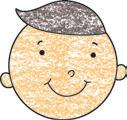
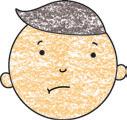
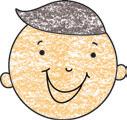



2. Draw Your Face: Guide the children to refer to page 12 of the Art and Craft book. Ask them to complete the faces given at the bottom of the page. Assist those who need help.

Domain
Topic of the Day
Circle Time A Walk in the Park
General Awareness People Who Help Us
Book & Page
General Awareness, pages 46-48
Foundational Literacy Letters Oo Literacy Skillbook, page 39; Story Cards
Foundational Numeracy Number 9 Numeracy Workbook, page 26
DIY Paper Badge for Helpers
LO: Children will practise thinking about places such as neighbourhood and parks to be more mindful of them.
1. Warm-Up: Ask children to share, in simple sentences, what they see around their house. It could be places like road, lane, park, garden; or names of animals, birds, and plants.
2. Imagine, See, and Share: Now, ask the children to close their eyes. and imagine that they are in a beautiful park. Give them a few minutes to imagine. Then, ask each of them to share a line of all the things they saw in their imagination, such as: My park had swings. OR My park had rose flowers.

You can play music in the background with sounds of birds and children playing.

LO: Children will identify and name different tools used by community helpers. Resources: General Awareness, pages 46–48
1. Guess the Tool: Say: Today, we will learn about tools used by different helpers! Describe each tool and ask children to guess it. For example:
• I help the tailor stitch clothes. (Needle & Thread)
• I help the teacher to rub the board. (Duster)
2. Be the Helper: Divide children into five groups: Doctors, Farmers, Tailors, Cobblers, and Teachers. Call out a situation and guide each group to act it out using their imagination. For example: Doctors: Pretend to give an injection to a patient and apply a band-aid.
3. People Who Help Us: Guide children to page 46 of the General Awareness book. Help them identify and name the tools used by different community helpers. Then, guide them to match each helper with their tool. Once done, ask them to turn to page 47. Encourage them to identify and circle the tools used by a tailor and a farmer.












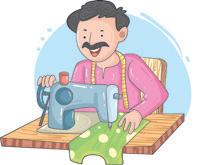






Refer to page 48 of the General Awareness book. Identify and circle the tools used by a doctor and a teacher.

LO: Children will practise reading aloud a few words and phonic stories that begin with letters Oo. Resources: Literacy Skillbook, page 39; story cards; chalk
1. Recalling the Sound and Symbol of Letters Oo: Reinforce the sound /o/ by asking the children to name the pictures on page 38, emphasising the /o/ sound. Write the capital O and small o on the board. Invite the children to come forward and trace the letters.
2. Reading to Letters Oo: Guide the children to page 39 of the Skillbook. Read the sentences aloud at least 4–5 times, focusing on the /o/ sound. Ask the children to circle the first letters O and o.
3. Picture Discussion: Show the pictures on the story card for letters Oo and discuss them. Ask questions, such as:
Picture 1: Which animals do you see in the picture?
Picture 2: Which fruit do you see on the ground?
Picture 3: What is the ox and the ostrich doing?
Picture 4: Which animal do you see in the pond? Encourage each child to respond.

















4. Interactive Read-Aloud: Read the story aloud, emphasising the words that start with the /o/ sound. Ask the children to repeat these words after you.


Refer to the letters Oo story card and read the story. Circle the letters Oo in the story card.
LO: Children will be able to identify and trace number 9.
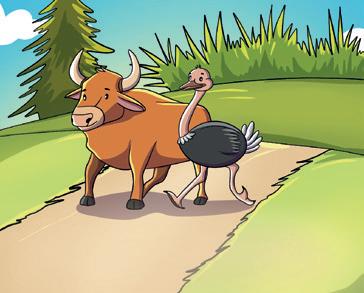
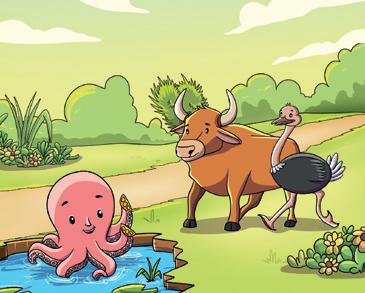
Resources: Numeracy Workbook, page 26; countable objects (erasers, pencils, crayons, etc.)
1. Counting 9: First, demonstrate by picking 9 objects and counting aloud. Then, call children one by one and ask them to count and pick any 9 objects and say the number aloud. Repeat with different objects each time you call a child. Assist those who need help.
2. Tracing Number 9: Write a large number 9 on the board. Call children one by one to trace the number 9 with their chalk.
3. Number 9: Ask children to open page 26 of the Workbook. Guide them to count the objects and trace the dotted lines and form number 9. Then ask them to write number 9 using a pencil or crayon.


LO: Children will make a badge to express their gratitude to the community helpers.
Resources: Circular paper cutouts (1 per child); crayons; 6-inch long ribbons (1 per child); glue; safety pins (for teacher’s use only)
1. Warm-Up: Say: Badges make people feel proud. Today, we will make a badge to thank our helpers!
2. Making a Paper Badge: Give each child a circular paper cutout. Ask them to colour and draw a smiley or a simple symbol (heart/star). Help them glue a ribbon at the bottom of the circle. Attach a safety pin to the badges. Encourage children to give the badges to the school guard or the cleaner and say thank you.

Domain
Circle Time
Magic Hat
General Awareness Role Play on Community Helpers
Foundational Literacy Letters Pp Literacy Skillbook, page 42; Literacy Workbook, page 30
Foundational Numeracy Story: Who Ate My Pastries? Numeracy Skillbook, page 41
DIY Rhyme: Old Mac Donald Had a Farm Rhymes and Stories, page 28
LO: Children will express themselves through movement and action. Resources: A long stick or a 12-inch ruler
1. Magic Wand: Show the stick/ruler to the children and say: This is a magic wand! It can make you fly like a bird or hop like a rabbit.
2. Act and Show: Tell the children when you point the wand at any one of them and name a bird or an animal, the child must act like that. For example, if you point and say Sparrow then the child would imitate flying like a sparrow. You may demonstrate a few actions yourself first to build their confidence and get them interested.


LO: Children will identify different community helpers through play-acting.
Introduction
1. Warm-Up: Ask: Who helps us when we are sick? Who teaches us? Welcome responses. Say: Today, we will become community helpers and see how they help us!
2. Act It Out: Gather children in a circle. Explain: We will play a fun game where we act like different community helpers! I will show you how, and you have to guess who I am!
Demonstrate one role with actions (e.g., pretending to check a patient with a stethoscope). Ask: Who am I? Let children guess.

3. Role Play Charades: Whisper a helper’s name to a child (e.g., doctor, farmer, cobbler, tailor). The child acts out the job using only gestures—no words! (e.g., pretending to sew for a tailor / uses chalk to write on the board like a teacher). Ask the other children to guess the community helper. Cheer for all the children after they enact.







LO: Children will identify the symbol and sound of the letters Pp and write the letters.
Resources: Literacy Skillbook, page 42; Literacy Workbook, page 30
1. Singing to Letters Pp: Recite the Letter P Rhyme with voice modulation and expressions. Repeat it at least 2–3 times, encouraging the children to join in.
2. Listening to the /p/ sound: Guide the children to page 42 of the Skillbook. Point to each picture and say the word, emphasising on the /p/ sound. For example: /p/ /p/ pen OR /p/ /p/ pineapple.
Letter P Rhyme
/p/ /p/ pizza, cheesy and hot!
/p/ /p/ parrot, talking a lot!
/p/ /p/ penguin, waddles so slow!
/p/ /p/ popcorn, ready to go!
/p/ /p/ puppy, playful and fun!
/p/ /p/ park, to play and run!
/p/ /p/—what a sound, Letter P is all around!
3. Symbol Recognition of Letters Pp: Write capital P and small p on the board. Call a few children to trace the letters on the board. Then, ask everyone to finger trace the letters in the air using their index fingers.
4. Writing Practice of Letters Pp: Guide the children to page 42 of the Skillbook. Ask them to trace the letters Pp carefully. Support those who need help.
5. Identifying Objects with Letters Pp: Ask the children to turn to page 43 of the Skillbook. Say: Let us look at the birds and say its names. Allow the children to read the sentences aloud after you. Then ask them to identify the birds that start with the /p/ sound and circle them. Assist those who need help.



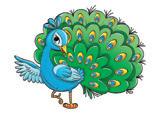




Refer to page 30 of the Workbook, trace and write the letters.
LO: Children will understand the concept of zero (0) through a simple story.
Resources: Numeracy Skillbook, page 41; a plate; any 2 fruits (if possible) or objects like books, pencils, etc.
1. Hands-on Counting: Place 2 fruits (or any two objects) in front of the children. Ask them to count aloud: 1, 2. Remove 1 fruit and ask: How many are left? Take responses and say: 1. Remove the last fruit and ask: Now, how many are left? Take responses and say: Nothing is left. This is what we call ZERO!
Give examples of real objects like empty plates, empty tiffin boxes, empty pencil boxes, etc to explain the concept of 0.
2. Spot the Picture: Ask children to open page 41 of the Skillbook. Guide them to identify the picture showing 2 pastries on a plate and the one showing an empty plate with 0 pastries.
3. Who Ate My Pastries?: Narrate the story on page 41 of the Skillbook to the children and pause in-between to ask questions such as:
• How many pastries did the baby bear have?
• How many pastries did the monkey hide?
• How many pastries were left on the plate?
• How did the baby bear feel?
Encourage each child to give responses. Assist those who need help.






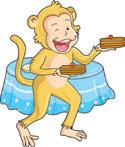

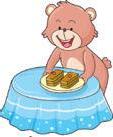



LO: Children will enjoy singing the rhyme and then identify common farm animals and their sounds. Resources: Rhymes and Stories, page 28
1. Warm-Up: Ask children to name some farm animals. Also, ask them to make sounds of a few farm animals such as moo-ing like a cow, quacking like a ducks and so on. Welcome all responses.
2. Rhyme Time: Sing the rhyme Old MacDonald Had a Farm aloud with actions and voice modulations. Repeat it 2–3 times and encourage the children to join in.

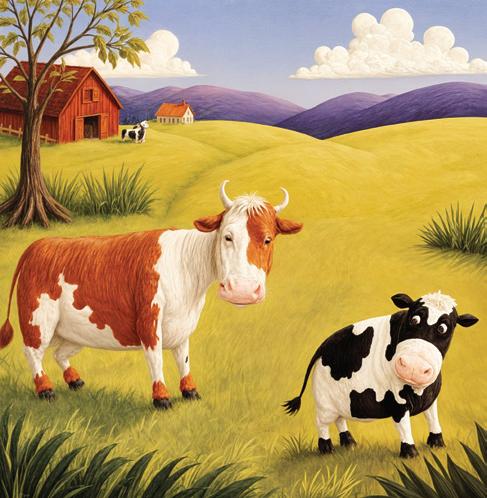

Repeat the rhyme by changing animals each time. For example, you may use duck (quack quack), pig (oink oink), or hen (cluck cluck).

Circle Time
General Awareness
Animal Freeze Dance
Colour Green
General Awareness, pages 49
Foundational Literacy Letters Pp Literacy Skillbook, page 43; Story Cards
Foundational Numeracy Story: Who Ate My Pastries?
Numeracy Skillbook, page 41
DIY Rhyme: Old MacDonald Had a Farm Rhymes and Stories, page 28
LO: Children will play a fun game of doing some actions, such as acting like an animal, thereby enhancing their coordination and movement.
Resources: Music; pictures or toy animals
1. Warm-Up: Greet the children with excitement and say: Today, we are going to move like animals! Ask: Can you think of some animals that move in different ways? Welcome their responses. Then, guide them to act out fun movements:
• Stretch up high like a tall giraffe.
• Curl up small like a sleeping cat.
• Roll shoulders like a swimming fish.
• Jump high like a happy bunny.
Demonstrate each action and encourage the children to follow along.
2. Animal Freeze Dance: Say: Let’s pretend to be animals! Play music and call out an animal (e.g., Move like a bunny!). Children move like a bunny until the music stops—then they must freeze in that pose! Repeat with different animals like: Stomp like an elephant/Crawl like a tiger/Flap like a butterfly etc.
Add a mystery animal round! Pause the music and let a child choose an animal for everyone to imitate. Keep it fun and energetic!

LO: Children will identify the colour green and objects that are green in colour.
Resources: General Awareness, page 49; green colour objects or pictures (toys, leaf, pencil, peas, etc); crayon set
Introduction
1. Rhyme Time: Start by singing the rhyme Colour Green. Teach the rhyme and ask the children to sing along. Repeat 3–4 times.
2. Introducing the Colour Green: Say: Today, we are going to learn a new colour—green. Show the green objects one by one and say: This is the colour green. The leaf is green in colour.
3. Spot the Green Colour: Distribute the crayon sets to children. Ask the children to find and show a green crayon from their crayon box. Assist those who need help.
Colour Green
Green, green, leaves so bright, Swaying gently in the light. Crunchy peas and spinach too, Parrots sing with a happy coo. Green is nature, fresh and cool!

4. Colour–Green: Ask the children to open page 49 of the General Awareness book. Ask them to colour the capsicum using green crayons. Then, help them find and tick the green objects using green crayons.
Draw a tree outline. Take a green watercolour and make leaves using finger prints. Bring your artwork to class.







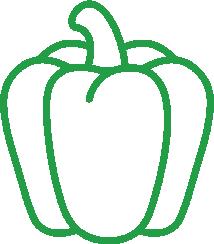





LO: Children will practise reading aloud a few words and phonic stories that begin with letters Pp. Resources: Literacy Skillbook, page 43; story cards

1. Recalling the Sound and Symbol of Letters Pp: Reinforce the sound /p/ by pointing to the pictures on page 42. Ask the children to name the pictures, emphasising the /p/ sound. Say: P says /p/ /p/. /p/ /p/ pan OR /p/ /p/ peas. Write the capital P and small letter p on the board. Invite a few children to come forward and trace the letters Pp on the board. Then ask them to trace the letters Pp in the air using their index fingers.
2. Reading to Letters Pp: Guide the children to page 43 of the Skillbook. Read the sentences aloud at least 4–5 times, focusing on the /p/ sound. Ask the children to circle the first letters Pp.
3. Picture Discussion: Show the pictures on the letters Pp story card and discuss them. Ask questions such as:
Picture 1: What does Mummy peel?
Picture 2: Which vegetable do you see?
Picture 3: Which fruit is Mummy slicing?
Picture 4: What is the girl eating?




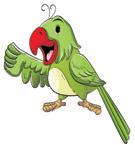


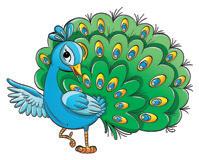
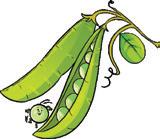




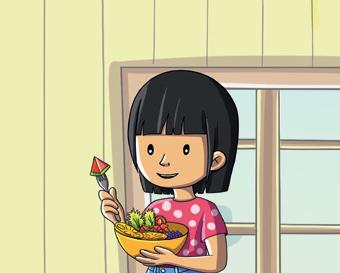
4. Interactive Read-Aloud: Read the story aloud, emphasising the words that start with the /p/ sound. Ask the children to repeat these words after you.

Refer to the letters Pp story card and circle the words starting with letters P and p.
LO: Children will identify the concept of zero (0) as nothing through a simple story and a hands–on activity. Resources: Numeracy Skillbook, page 41; a basket with a few objects (balls, toys, books, crayons); chalk
1. Recap: Recap the story Who Ate My Pastries from the previous session. Ask simple questions from the story such as:
• How many pastries did the baby bear have?
• How many pastries did the monkey hide?
• How many pastries were left on the plate? Encourage each child to respond. Assist those who need help.
2. Vanishing Object Trick: Place three balls in a basket and count aloud with the children. Remove one ball at a time while counting backwards. When no balls are left, show the empty basket and say: Now, there are ZERO balls!
3. Sharing Crayons: Call two children at a time. Give one child three crayons. Ask them to give the crayons to their friend one by one, continuing until all the crayons are gone. Then ask: How many crayons are left? Encourage them to say: Zero! Assist those who need help.








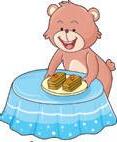
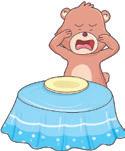


LO: Children will enjoy singing a rhyme and identify common farm animals and their sounds. Resources: Rhymes and Stories, page 28; flashcards of farm animals like—goat, horse, cow and sheep (from General Awareness Book)
1. Rhyme Time: Sing the rhyme Old MacDonald Had a Farm aloud with actions and expressions. Repeat it 2–3 times and encourage the children to join in.
2. Animal Role Play: Gather the children in a circle and sing Old MacDonald Had a Farm. Assign each child an animal. As you sing, tap a child’s shoulder—they will make the animal sound and act it out. For example, when you sing: Old MacDonald had a farm… and on that farm, he had a cow, the child says, Moo moo! Repeat with different animals, making it lively and fun! Assist those who need help.











Domain General Awareness
Learning Outcome
Children identify the community helpers and the work done by them.
Resources A soft toy; General Awareness, pages 44–45.
Suggested Method Ask children to sit in a circle, if possible. Pass around the soft toy and the child holding the soft toy shares about a helper and mentions how they help us. Ask questions such as: How does a doctor help us? Clap and cheer for each child. Ensure everyone gets a turn.
Support for Struggling Learners
Gather the children in a circle and refer to pages 44–45 of the General Awareness book. Introduce and point to each community helper one by one. Talk about them in simple terms. For example, point to the first picture and say: This is a farmer. He grows our food. Repeat the same for all the other helpers.
Domain Foundational Literacy
Learning Outcome Children can identify the sounds and symbols of Oo and Pp, and say common words starting with them.
Resources Letters Oo and Pp story cards; chalk.
Suggested Method Write letters O and P on the board, call children one by one to trace the letters with their fingers and say a few objects starting with /o/ and /p/ sounds. Finally, ask them to use the story cards to try and read the story/words aloud while emphasising thxxe words that start with the /o/ and /p/ sounds.
Support for Struggling Learners
Gather the learners in a circle. Show them pictures of objects starting with letters Oo given on page 38 of the Skillbook. For example, say: /o/ /o/ octopus OR /o/ /o/ ox and ask the children to repeat after you. Repeat the same for pictures or words in the story card. Then write letters O and o on the board, call the children one by one and ask them to trace the letters with chalk. Repeat the same for letters Pp.

Domain
Foundational Numeracy
Learning Outcome Children can identify, trace and write number 9.
Resources Some countable objects like: pencils, erasers, books, crayons, etc; number 9 flashcard (from Skillbook)
Suggested Method
Support for Struggling Learners
Write any 3 numbers on the floor, including the number 9. Call children one by one and ask them to count 9 objects and place them on the symbol 9. Clap and cheer for each child. Ensure everyone gets a turn.
Gather the learners and give them the number flashcards. Place the objects on a table. Say: Let’s count the numbers 1–9 using our fingers. 1, 2, 3, 4, 5, 6, 7, 8, 9–9 fingers Then, count and show 9 pencils and 9 crayons. Ask the children to count the objects along with you. Next, write number 9 on the board and ask children to hold up the flashcard showing number 9.




































Circle Time
Exploring Perspectives
General Awareness Animals Around Us
General Awareness, page 51
Foundational Literacy Story: Fun at the Park Literacy Skillbook, pages 40–41
Foundational Numeracy Number 0—Understanding the Concept Numeracy Skillbook, pages 41–42
DIY A Taste of Things
STEM Exploration, page 16
LO: Children will identify that people can see and think about things in different ways.
Resources: Any toy; a picture of rainy day
1. Seeing Different Things: Place an object, such as a toy, either on the floor or on your desk. Then, ask the children to sit or stand around it. Ask the children who are looking at the front side of the toy: Which side do you see? How does the toy look from here? Ask the other children to listen carefully. Repeat for other sides as well. Then, explain: We are all looking at the same object, but we are looking at its different sides.
2. How Do You Feel: Show a picture of a rainy day and ask: How do you feel when it rains? Some might say happy (because they like jumping in puddles), while others might say sad (because they can’t play outside). Explain: It’s okay to have different thoughts and feelings about the same thing!
If you do not have a picture of a rainy day, draw some clouds, raindrop and puddles on the board.

LO: Children will identify and name some common animals.
Resources: General Awareness, page 51
1. Animal Walk: Say: Let us move like animals! Show them by performing once yourself. You may hop like a rabbit or lumber like an elephant. Then, call the children one by one, give them an animal to imitate its movement.
2. Animal Talk: Ask questions such as: Have you ever seen a dog? Where did you see it? What was it doing? or What sound does a cat make? to initiate a discussion on animals. Encourage them to share their experiences, such as spotting birds in the sky, a pet at home, or a cow in a farm. Extend the conversation by asking: What do these animals eat? Where do they live? to help them think about animals in their surroundings.
3. Animals Around Us: Ask children to open page 51 of the General Awareness book. Point to each animal and say its name. Ask children to repeat after you.
4. Tracing Names of Animals: Write cat on the board and say: /c/ /a/ /t/—cat. Ask children to repeat after you. Do the same for ant, dog and cow. Then, ask them to trace the animal names on page 51.










Look around your home carefully. Observe and name the different animals or insects you find.







LO: Children will discuss what they see in a park and listen to the story Fun at the Park. Resources: Literacy Skillbook, pages 40–41
1. Warm-Up Talk: Ask: What do you do in a park? Let children share their responses freely. Then, ask: Can you name some animals, birds, or insects you might see in a park? Guide them to say responses like frogs, ducks, butterflies, etc.
2. Picture Talk: Ask children to open pages 40–41 of the Skillbook. Point to each picture and ask questions such as: What are the boy and girl doing? What animals or insects can you see in the picture? Encourage children to share their answers freely.
3. Read Aloud: Read the story Fun at the Park aloud with expressions and voice modulation. Pause at key moments to show the pictures and engage children as you read.

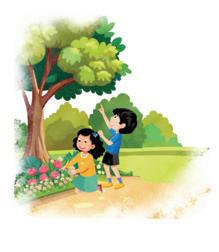




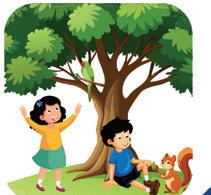





LO: Children will understand the concept of 0.
Resources: Numeracy Skillbook, pages 41–42; a tray; a few easily available objects (ice-cream sticks, pencils, etc.)
1. Recap: Ask children to open page 41 of the Skillbook and find a picture showing 2 pastries and 0 pastries. Recall the story by asking: How many pastries did the baby bear have? Who took away the 2 pastries? At the end, how many pastries were left on the plate?
2. Counting Back to 0: Place 3 objects on a tray and ask: How many objects can you see? Guide children to count and say 3. Remove the objects one by one, asking them to count along, until none are left. Then ask: How many objects do you see now? Take a few responses and say: There are 0 objects left. 0 means none. Invite a few children to repeat the activity using a tray and objects, counting as they remove them.
3. Tracing 0: Write 0 on the board and say: Number zero goes round. Guide children to trace 0 in the air with their index fingers.
4. Number 0: Ask children to open page 42 of the Skillbook. Help them identify pictures showing 0 objects. Then, ask them to trace 0 first with their fingers and then with crayons or pencils.






















LO: Children will identify different tastes and sort items based on their taste. Resources: STEM Exploration, page 16; real or pictured items that are sweet, salty, bitter, and sour; four labelled containers
1. Tasting Experience: Gather the children in a circle, if possible. Introduce the four different tastes— something sweet (sugar or fruit), salty (salt or crisps), bitter (bitter gourd or neem leaves), and sour (lemon or tamarind). Let each child taste a tiny amount. Ask: Is it sweet, salty, bitter, or sour?
Ensure all items are fresh and thoroughly cleaned before tasting. Additionally, some children may not be too eager to taste, do not force them. Error Alert!
2. Sort the Taste: Place four labelled containers or sections on the table—sweet, salty, bitter, and sour. Show different food items (real or pictures) one by one and ask children to place them in the correct section. Encourage discussion by asking: Which one do you like the most? Name some food items that are sour? Welcome all responses.






Circle Time
General Awareness
Spot the Mistake
Animals at Home
General Awareness, pages 52–53
Foundational Literacy Story: Fun at the Park Literacy Skillbook, pages 40–41
Foundational Numeracy Number 0
DIY A Taste of Things
Numeracy Workbook, page 27
STEM Exploration, pages 16–18
LO: Children will be able to identify and correct mistakes in simple stories.
1. Warm-Up Activity: Ask: If a dog wears shoes, will that make sense? Listen to the children’s responses. Then, tell them that they will play a fun game called Spot the Mistake where you will tell them silly stories with mistakes, and they have to figure out what is wrong in it.
2. Spot the Mistake!: Tell a simple, funny story with an obvious mistake. Example: Yesterday, I saw a dog flying in the sky! It had wings like a bird. Then, it had lunch at the market. Finally, it went home in a bus. Ask the children: Is that correct? Why not? Encourage the children to respond and help them explain why the dog can’t fly, guiding them with prompts like: Do dogs have wings? or What do dogs usually do? Some of the different situations you can present are:
• A fish was swimming in a tree.
• A cat jumped like a kangaroo.
• The sun was wearing sunglasses.
• A car flew in the sky.
Help children think logically by guiding them with simple questions and praise their reasoning. Applaud their answers and reinforce the concept that sometimes stories can be funny because they include impossible things.

LO: Children will identify animals at home and differentiate between pets and other animals. Resources: General Awareness, pages 52–53; Animal flashcards (from Coursebook)
Introduction
1. Warm-Up Discussion: Ask children to name animals they have seen at home. Encourage responses like mosquito, lizard, fly, etc. Then ask: Does anyone have a pet? Welcome all responses.

2. Pets or Not: Say: We see animals and insects like lizards and cockroaches at home. Are they pets? Let children answer. Then explain: Pets, like cats, dogs, and birds, are cared for and fed by us. Insects like mosquitoes and cockroaches come on their own. Clarify that pets are brought home, but insects enter by themselves
3. Find the Pets: Hand out animal flashcards to the children. Ask them to sort and show the animals that can be kept as pets. Guide them to find the pictures of a dog, cat, and parrot.
4. Animals at Home: Ask children to open page 52 of the General Awareness book. Read the text at the top and guide them to identify the pictures of pet animals. Then, ask them to draw lines to help the dog reach its food.
5. Identifying the Animals: Read the text on page 53 and guide children to circle the animals they usually see at home.









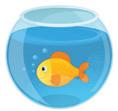








Trace the words rat and fly on page 53 of the General Awareness book.





LO: Children will listen and discuss the story Fun at the Park and do a phonic activity for letters A–P. Resources: Literacy Skillbook, pages 40–41
1. Warm-Up Discussion: Ask children to talk about the different things they see in a park. Then, ask: Did you ever hear the sounds made by these animals? Take a few responses and ask: Do you remember the insects and animals from the story ‘Fun at the Park’? Let children share their answers freely.
2. Interactive Read-Aloud: Read aloud the story Fun at the Park with voice modulations and expressions. Pause at relevant places to show pictures and ask questions like: Who went to the park? / What did Hina and Raju see on the flowers? / What did the squirrel eat?
3. Guess the Beginning Sound: Ask children some questions from the story. Guide them to answer the questions by identifying the beginning sounds of the words. Ask questions like: Who was buzzing on the flowers? (/b/ /b/ bees) / Who said croak croak? (/f/ /f/ frog) / Who said quack quack? (/d/ /d/ duck). Encourage each child to respond.











LO: Children will identify the concept of 0 and trace the number 0.
Resources: Numeracy Workbook, page 27; three trays; some countable objects; chalks
1. Spot the Tray: Place three trays on a table—two with objects and one empty. Call children one by one and ask them to find the tray with 0 objects. Ensure everyone gets a turn and shuffle the trays each time a new child is called.
2. Tracing 0: Write 0 on the board and say: This is 0. Then call 3 children at a time, give each of them a chalk and guide them to trace 0 on the board.
3. Number 0: Ask children to open page 27 of the Workbook. Show them the empty baskets and explain what 0 means. Then, ask them to trace 0 with a pencil.
LO: Children will taste different food items and identify the taste.


Resources: STEM Exploration, pages 16–18; neem leaves; teaspoon of salt; a wedge of lemon; some sugar
1. Taste and Tell: Call children one by one and let them taste a small portion of each food. Guide them to describe the taste. Ask: Is it sweet, salty, bitter, or sour? Ensure they sip water after each tasting.
Ensure all items are fresh and thoroughly cleaned before tasting. Additionally, some children may not be too eager to taste, do not force them. Error Alert!
2. A Taste of Things: Ask children to open pages 16–17 of the STEM Exploration book. Read the questions aloud and guide them to tick the correct answers.







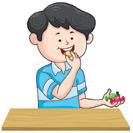

Domain
Circle Time
Spit Water Challenge
General Awareness Farm Animals
General Awareness, page 54
Foundational Literacy Do and Learn Literacy Skillbook, page 44
Foundational Numeracy Number 10 Numeracy Skillbook, page 43
DIY The Prickly Cactus
LO: Children will think critically and find solutions to a problem. Resources: An empty cup; some tissue papers or a cloth
Art and Craft, page 13
1. The Spilled Water Challenge: Pretend that a cup of water has spilt over (use a small amount of water or simply describe the situation). Ask: Oh no! What should we do? Encourage children to suggest ideas such as asking for help or wiping it up with a cloth by themselves. Guide them with prompts like: Should we leave it or clean it? What will happen if we don’t clean it?
2. Solve Together: Let the children take turns using a cloth or tissue and pretend to clean up the spill. Praise their teamwork and discuss how thinking and working together helped solve the problem. Conclude by reminding them that when things go wrong, we can always stop, think, and find a way to fix them.
You can also ask the children to suggest ways to prevent a glass of water from spilling.

LO: Children will identify and name different farm animals and the uses of some farm animals. Resources: General Awareness, page 54
Introduction
1. Rhyme Time: Begin by reciting the rhyme Fun at the Farm with actions and expressions. Ask the children to follow. Repeat 3–4 times for reinforcement.
Practice
2. Farm Animals: Ask children to open page 54 of the General Awareness book. Point to each animal and name it aloud. Ask the children to say the names aloud after you.
Moo, moo says the cow so loud, Oink, oink says the pig so proud. Cluck, cluck goes the hen so small, Neigh, neigh says the horse so tall! Baa, baa sings the little sheep, Woof, woof says the dog with a leap. Meow, meow the cat runs around, On the farm, there are so many sounds!
3. Uses of Some Farm Animals: Discuss the uses of some farm animals. Explain the following:
• Cow, goat and buffalo give us milk.
• Hen and duck give us eggs.
• Sheep gives us wool.
• Horse/donkey helps us carry things.
















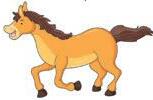
LO: Children will identify objects starting with the letters M to P and their corresponding small letters. Resources: Literacy Skillbook, page 44; letter flashcards M to P (from Skillbook); sticker sheet (from Skillbook)
Introduction
1. Guess the First Letters: Slowly say the names of various objects in a random order, for example: orange, pen, nut, mango. Ask children to listen carefully and hold up the flashcard showing the letter the object starts with. Monitor and guide them as needed.
2. Identifying the Small Letters: Write the letters M to P in a random order on the board. Guide children to identify the letters and hold up the flashcards showing the corresponding small letters.
3. Do and Learn: Ask children to open page 44 of the Skillbook. Guide them to identify the pictures and stick the correct letter beside each picture using the sticker sheet. Then, have them match the capital letters with their lowercase counterparts.
LO: Children will count up to number 10 and trace number 10. Resources: Numeracy Skillbook, page 43; some countable objects; chalks
Introduction














1. Counting 10: First count and show 10 fingers to the children. Guide children to count their own 10 fingers. Then, invite them one by one to count and pick 10 objects.
2. Tracing Number 10: Write the number 10 on the board. Say: We write 1 and 0 to make the number 10. Call children one by one to trace the number 10 on the board with chalk.

3. Number 10: Ask children to open page 43 of the Skillbook. First, guide them to count 10 birds. Then, have them trace the number 10 with their fingers before using crayons. Find 10 small objects at home (toys, pencils, buttons, etc.) and count them aloud.









LO: Children will complete a cactus by making dots with earbuds to make the thorns. Resources: Art and Craft, page 13; earbuds (1 per child); yellow watercolor
1. Picture Talk: Ask children to open page 13 of the Art and Craft book. Point to the picture and ask: Do you know what plant this is? Let children share their answers. Then, say: This is a cactus. It has thorns. Today, we will create the thorns of the cactus.
2. The Prickly Cactus: Demonstrate how to dip an earbud in yellow colour and make dots to form the thorns on the cactus. Guide the children to do the same. Ensure

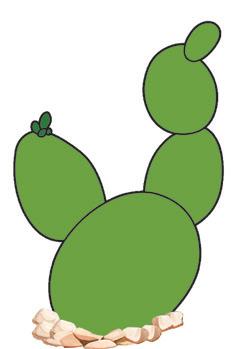
the children don’t poke themselves or each other with the earbud, nor do they insert it


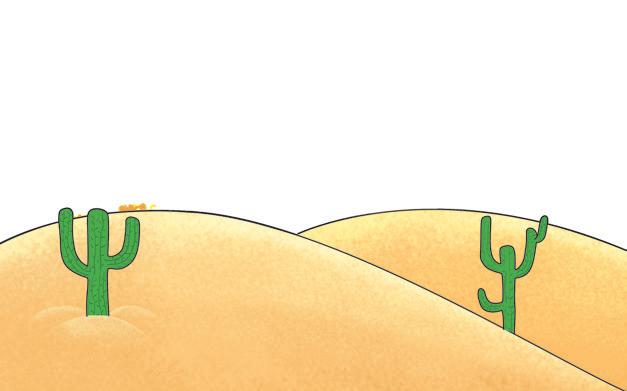
Circle Time Magic Path Adventure
General Awareness Farm Animals
General Awareness, page 55
Foundational Literacy Do and Learn Literacy Skillbook, page 45
Foundational Numeracy Number 10 Numeracy Workbook, page 28
DIY
Eddie Finds a Path
Art and Craft, pages 14–15
LO: Children will develop their gross motor skills through an enjoyable game.
Resources: Chalks or tape
1. Setting the Scene: Use chalk or tape to draw different ‘paths’ on the classroom floor—zigzags, circles, straight lines, and wavy lines. Tell the children: We are going on a magical adventure! Each path has a special way to move.
2. Movement Challenge: Call out different movements as they follow the paths.
• Zigzag Path: Tiptoe like a sneaky cat!
• Circle Path: Spin slowly like a twirling leaf!
• Wavy Path: Jump like a bouncing bunny!
• Straight Line: March like a brave soldier!

Add fun challenges like Oh no, a puddle! (children jump over it) or The wind is blowing! (children sway side to side).

LO: Children will recite a rhyme about farm animals, play a movement game, and identify the size of farm animals.
Resources: General Awareness, page 55
1. Animal Sounds: Recite the rhyme Fun at the Farm from the previous session. Encourage children to sing along. Repeat 3–4 times for reinforcement. Then, ask questions about animal sounds and discuss them. For example: What sound does a cow make? (Moo) / What does a duck make? (Quack)
2. Animal Movements: Call out the name of a farm animal and demonstrate its movement. The children may copy you, if possible:

• Cow: Walk slowly and say Moo.
• Duck: Waddle and say Quack, quack.
• Sheep: Hop and say Baa, baa.
• Hen: Flap arms and make clucking sounds.
• Dog: Run in place and say Woof, woof.
• Cat: Stretch like a cat and say Meow.
3. Farm Animals: Ask children to open page 55 of the General Awareness book. Guide them to identify the animals in each row and circle the biggest animal in each row.












LO: Children will identify the first letter of objects starting with letters M–P and make fingerprint images.
Resources: Literacy Skillbook, page 45; some objects or pictures of objects starting with letters M–P; watercolours
Introduction
1. Guess the First Letter: Call children one by one and show them an object or picture of an object starting with any of the letters from M to P. Write the word on the board with the first letter missing. For example: __encil. Ask: What letter is missing? Let the children guess. Ensure everyone gets a turn.

2. Do and Learn: Ask children to open page 45 of the Skillbook. Guide them to identify the pictures and guess the first letters. Then, help them dip their fingers in paint and create pictures using fingerprints. Assist those who need support.
LO: Children will count up to 10 and trace the number 10.
Resources: Numeracy Workbook; page 28; some classroom objects; blocks (if available)
1. Counting 10: Gather the children in a circle and count aloud from 1 to 10, clapping for each number. Then, ask them to find 10 small objects in the classroom (such as blocks, pencils, or beads) and count them together.









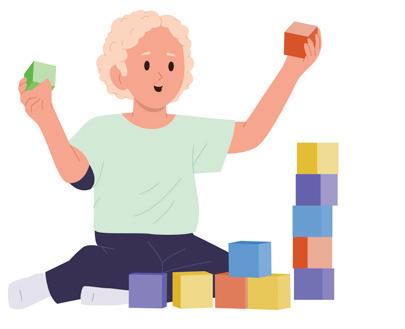
2. Building a Tower: Call children one by one and say: Let’s build a tower using all 10 blocks! Guide them to stack the blocks one by one while counting aloud. Once done, ask: How many blocks are in your tower? Reinforce the concept of 10.
If blocks are not available, children can stack 10 books or use paper cups instead.


3. Number 10: Ask children to open page 28 of the Workbook. Guide them to count the objects and trace the number 10 with a pencil.
LO: Children will cross obstacles to reach a point and draw lines and make fingerprints to help an elephant reach the pond.
Resources: Art and Craft, pages 14–15; smiley stickers; chairs; watercolours
1. Cross the Obstacle: Place some chairs in the classroom to create obstacles. Call children one by one and say: You need to cross the obstacles to get a smiley sticker. But remember, you cannot move the chairs! Cheer for each child as they make their way across, and reward them with a smiley sticker at the end.
2. Eddie Finds a Path: Ask children to open pages 14–15 of the Art and Craft book. Read the lines on page 14 and guide them to draw a path with a pencil to help Eddie reach the other side of the classroom. Then, help them dip their fingers in paint and make fingerprints along the path.



With the help of an adult, walk and go to a nearby place, like a shop or a park. Observe the road and see how many turns you take to reach the place.








Domain General Awareness
Learning Outcome Children will identify the names and sounds of different farm animals.
Resources Animal flashcards (from Skillbook)
Suggested Method Give each child a set of animal flashcards. Guide them to sort the animals that live on a farm and place them on their tables. Observe their work and provide support if needed. Then, ask each child to name one farm animal and make its sound. Clap for each child and reward them with a smiley sticker.
Support for Struggling Learners
Domain
Gather the learners in a circle, if possible. Show the farm animals one by one from page 54 of the General Awareness book and say the sound they make. Also, mention their uses where relevant. For example: This is a cow. It says Moo. The cow gives us milk. Ask the children to repeat the names and sounds of the animals after you.
Foundational Literacy
Learning Outcome Children will identify the objects starting with letters M to P.
Resources Objects or pictures starting with the letters M to P; flashcards of letters M to P (from Skillbook)
Suggested Method Place various objects that start with the letters M to P in a mixed order. Give each child a letter flashcard. Call them up one by one to pick an object, say its name, and place the correct letter beside it. Ensure every child gets a turn. Celebrate their effort with applause and a smiley sticker.
Support for Struggling Learners
Domain
Show an object that starts with the letter M and say it aloud, emphasising its sound. For example, /m/ /m/ mat. Ask the children to repeat after you. Encourage them to think of other words that start with the /m/ sound. Repeat the same for letters N, O, and P.
Foundational Numeracy
Learning Outcome Children will count up to 10 objects and identify the symbol 10.
Resources Countable objects; flashcards of numbers 5–10 (from Skillbook)

Suggested Method Call the children one by one and ask them to find the flashcard showing the number 10. Then, ask them to count and pick any 10 objects. Clap for each child and reward them with a smiley sticker.
Support for Struggling Learners
Show the learners the count of 1 to 10 on your fingers. Have them follow you as you count. Repeat this. Then, write the numbers on the board and ask these children to trace the numbers.



































Circle Time
Walking on a Zig-Zag Lines
General Awareness Wild Animals
General Awareness, pages 56–57
Foundational Literacy Find Out Literacy Workbook, page 31
Foundational Numeracy Do and Learn Numeracy Skillbook, pages 44–45
DIY Making Bubbles
LO: Children will develop balance and coordination by walking along zig-zag lines.
Resources: Chalk/tape to make a zig-zag path
1. Warm-Up: Gather the children and say: Today, we are going on a wobbly walking adventure! Ask: Have you ever walked on a curvy or zig-zag path? How does it feel? Welcome all responses.
2. Explaining the Game: Show the zig-zag path and walk along it slowly, arms out like an airplane wings. Give simple tips:
• Step carefully on the line.
• Keep your arms out for balance.
• Try not to step outside the path.
3. Walking on a Zig-Zag Line: Call children one by one to walk the path. Clap and cheer for each child. Assist those who need help by holding their hand or guiding them. Keep it fun and engaging.
To make the activity more challenging, you can ask children to hop, tiptoe or jump on one leg along the line.

LO: Children will identify and name some common wild animals.
Resources: General Awareness, pages 56–57; animal flashcards (from Coursebook)
1. Warm-Up: Tell the children: Today, we are going on an exciting jungle adventure! Ask: Which animals do you think live in the jungle? Welcome all responses.

2. Wild Animals: Refer to pages 56–57 of the General Awareness book. Point to each animal, say its name aloud, and encourage children to repeat it after you. For example, point to the first picture and say: This is a monkey. It lives on the tree. It is brown in colour. Repeat the same for the other animals.
3. Spot the Animals: Hand out the flashcards of wild animals to the children. Say the name of an animal aloud and ask children to hold up the flashcard showing that animal. Monitor and assist as needed. Encourage the children to repeat the names after you.








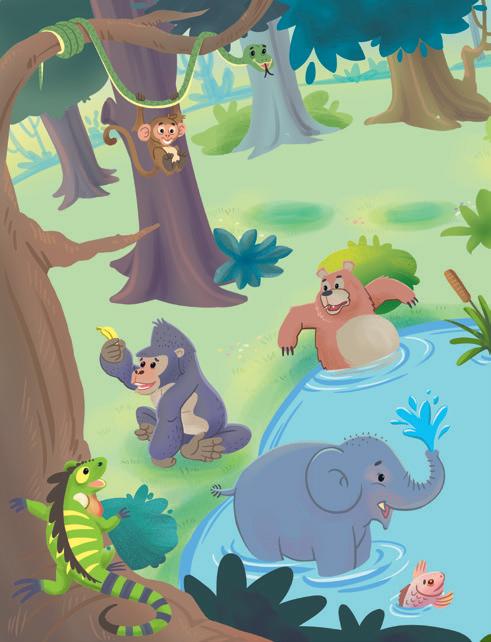
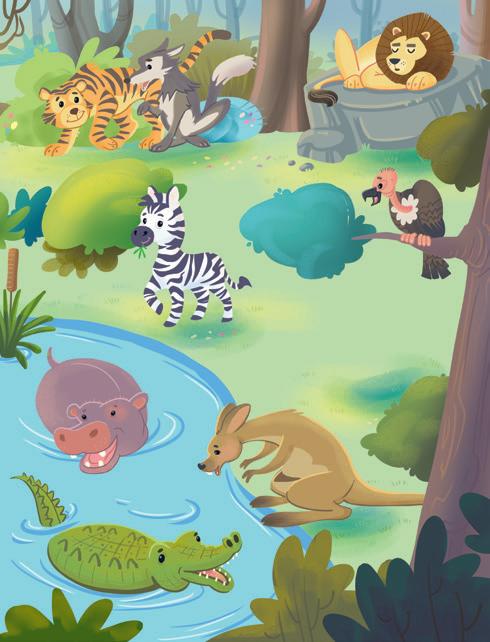
LO: Children will identify the first letter in words starting with letters M–P.
Resources: Literacy Workbook, page 31; some objects/pictures of objects starting with letters M–P
1. Warm-Up: Spread the objects / pictures on the table. Call children one by one to find an object starting with a given letter. For example, ask: Can you find something that starts with the letter M? The child picks the object (mat or mango) and says its name aloud. Repeat until each child gets their turn.
2. Identifying the First Letter: Say aloud the name of an object and write its spelling on the board without the first letter (example: __ a n g o). Ask children to guess the first letter. Repeat with other words as well.
3. Find Out: Ask children to open page 31 of the Workbook. Guide them to name the pictures, identify the first letter, and write it in the blanks.


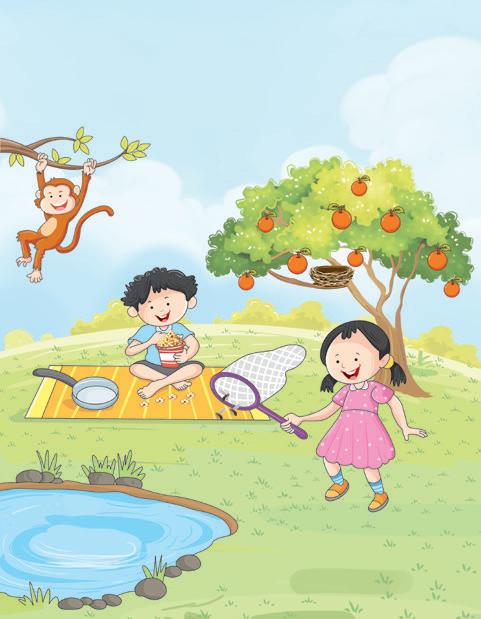

Find and circle the letters Mm, Nn, Oo, Pp in a newspaper, magazine, or book with the help of an adult.
LO: Children will count objects up to 10 and identify numbers from 1–10.
Resources: Numeracy Skillbook, pages 44–45; countable objects (like pencils, books, crayons, etc.); number flashcards of numbers 1–10 (from Skillbook)
1. Counting from 1 to 10: Call children one by one, give them a number between 1 to 10, and ask them to count and pick that many objects. Ensure everyone gets a turn.
2. Recognising Number Symbols: Hand out the number flashcards to the children. Call out a number and ask them to find and show the correct flashcard. Repeat for other numbers, assisting those who need help.
3. Do and Learn: Guide the children to open page 44 of the Skillbook. Have them count the objects and write the correct numbers. Then, ask them to help the busy bee buzz back to the hive by counting to 10. Next, turn to page 45. Ask them to count the numbers below each jar and draw the matching number of cookies inside.
































Fill in the missing numbers on page 45 of the Numeracy Skillbook.
LO: Children will explore and identify bubbles through a hands-on activity.


Resources: Mild dish soap; water; plastic cups; straws (with a small safety hole); small bowls; towel
1. Let’s Talk About Bubbles: Ask: Have you played with bubbles? What do they look like? Welcome responses. Explain: Bubbles are round, colourful, and filled with air. We make them by mixing soap and water and blowing air into them.
2. Bubble Making: Mix water and dish soap in a bowl. Give each child a small cup of the solution and a straw. Demonstrate dipping the straw and gently blowing to create bubbles.
3. Making Bubbles: Let children experiment with blowing bubbles. Talk about the experiment with the children, helping them understand the use of air. Encourage them to observe the size of the bubbles and their colours.
Error Alert!
Place a towel under the activity area and supervise to ensure children do not accidentally taste the soap solution.

Domain
Circle Time
Build the Pattern!
General Awareness Wild Animals
General Awareness, pages 58–59
Foundational Literacy Do and Learn Literacy Workbook, page 32
Foundational Numeracy Do and Learn
DIY Story: A Bubbly Day
Numeracy Skillbook, pages 46–47
Rhymes and Stories, pages 29–32
LO: Children will recognise, imitate and make simple patterns using objects.
Resources: Objects commonly found in the classroom (crayons, pencils, erasers, bottle caps, etc.); chalk
1. Finding a Pattern: Gather children in a circle and show a simple pattern using your hands (e.g., clap–tap–clap–tap). Ask: What comes next? Let them guess. Explain: A pattern is something that repeats again and again!
2. How to Build a Pattern: Show a simple colour pattern using objects (e.g., red crayons–blue crayons–red crayons–blue crayons). Ask: What comes next? Let children observe and say the missing colour.
3. Build the Pattern: Seat children in small groups and provide each group with coloured crayons, books, or bottle caps. Show them a pattern (e.g., yellow–green–yellow–green) and ask them to copy it. Once they understand, encourage them to extend the pattern on their own. Let them create their own patterns and have friends guess what comes next. Assist those who need help.
Start with making patters with just two objects.

LO: Children will identify, name and colour the common wild animals. Resources: General Awareness, pages 58–59; animal flashcards (from Coursebook); crayons
Introduction
1. Recap: Hand out the flashcards to the children. Ask them to sort the wild animals from the rest. Take rounds and guide children, if required.
2. Who Am I?: Give the children some riddles on wild animals and ask them to guess the name of the animals.
I have black and white stripes. Who am I? (Zebra)
I am big and grey, with a long trunk. Who am I? (Elephant) I swing on trees and love bananas. Who am I? (Monkey)
I have orange fur with black stripes. Who am I? (Tiger)
I roar loudly and I am the king of the jungle. Who am I? (Lion)
I am big and furry, I love honey. Who am I? (Bear) I have no legs, I slither and hiss. Who am I? (Snake)
3. Wild Animals: Refer to page 58 of the General Awareness book. Ask children to identify the animals, then guide them to circle only the wild animals. Once done, ask the children to refer to page 59. Help them identify and colour the heavy animals in each row.









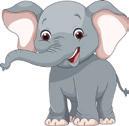


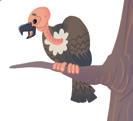





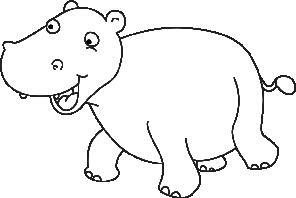

LO: Children will identify the first letter of a word through fun games and pictures and circle them. Resources: Literacy Workbook, page 32; chalk
1. Warm-Up: Say a word out loud, emphasising the beginning sound (e.g., /b/ /b/ ball). Ask: What sound did you hear at the beginning? Welcome all responses and help children say the correct letter of the sound.
2. What’s the Beginning Sound: Write down the letters from A–P on the board. Call children one by one. Say a word (e.g., nest, pen, apple, lion, etc.) and ask children to point to the correct letter that matches the beginning sound. Repeat with different words each time you call a new child.
3. Do and Learn: Ask children to open page 32 of the Workbook. Guide them to identify and circle the pictures that begin with the given letter. Once done, guide them to colour the correct beginning sound of each picture.














LO: Children will count objects up to 10 and identify numbers from 1–10. Resources: Numeracy Skillbook, pages 46–47; countable objects (like beads, books, crayons, etc.); number flashcards of numbers 1–10 (from Skillbook)
Introduction
1. Counting and Matching Numbers: Hand out the number flashcards to the children. Call them one by one and place a certain number of objects on the table. Ask each child to count the objects and place the correct number card beside them.
2. Writing Numbers 1–10: Call out one child at a time. Say a number (e.g., 8). Ask them to trace and write the number on the board with chalk. Guide those who need help.

3. Do and Learn: Guide the children to open page 46 of the Skillbook. Ask them to count the objects and circle the correct numbers. Then, ask them to refer to page 47 of the Skillbook. Guide them to trace and write the numbers from 1–10.


































LO: Children will identify the concept of bubbles in a fun and hands-on way.
Resources: Rhymes and Stories, pages 29–32






1. Warm-Up: Ask: How did you feel playing with bubbles in the last session? What do bubbles look like? Welcome all responses.
2. Interactive Read-Aloud: Read aloud the story A Bubbly Day with expressions and voice modulation. Pause to show the pictures and ask questions:
• Who all are playing in the park?
• What do they do?
• What colours did they see in the bubbles? Encourage each child to give responses. Assist those who need help.
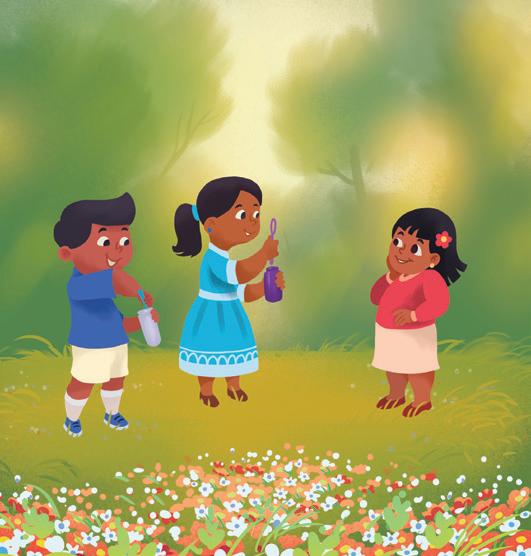


Circle Time
General Awareness
Colour Colour
Animal Role Play!
Foundational Literacy Letter Stories I, J, K, L
Foundational Numeracy Numbers 1–10 Numeracy Workbook, pages 29–30
DIY Pichwai Folk Art Art and Craft, page 16
LO: Children will enhance their vocabulary by naming objects based on colour clues.
1. Warm-Up: Gather the children in a circle, if possible, and say: Today, we are going to play a fun game where we think of things based on colours! I will give you a clue, and you have to name as many things as you can that match the clue.
2. Game Time: Call out a colour (e.g. red) and encourage children to name objects with that colour. If children struggle, guide them with hints: What about a fruit? / What about a vegetable? / What about an object? Ensure no words are repeated. After a few responses, move on to the next colour clues (e.g., blue, yellow, green etc.)
3. Wrap-Up: End the game by asking: Which colour had the most objects? Which was the trickiest? Welcome all responses.

LO: Children will identify wild animals through role-play. Resources: Flashcards of wild animals (from Coursebook)
1. Warm-Up: Greet the children and say: Today, we are going to pretend to be wild animals! Ask children to name a few wild animals. Welcome all responses. Say: Let us go on a fun jungle adventure!
2. Identifying Animals: Hand out the flashcards to the children. Give clues like: I have black and white stripes. / I have a long trunk and ask them to identify and hold up the correct animal. Encourage them to say the animal’s name aloud. Assist as needed and praise their efforts.

3. Become the Animals: Say: Let’s pretend to be wild animals! Call out an animal, demonstrate and encourage children to act it out:
• Walk like a lion and roar!
• Stretch your arms like a trunk and stomp!
• Jump and scratch like a playful monkey!
• Slither and hiss like a snake!
• Hop on two legs like a kangaroo!
• Swim like a fish!
To make the session more engaging, invite a few children to imitate an animal while the others guess its name.







LO: Children will identify letters from I–L, listen to related stories and identify words starting with letters I–L.
Resources: Story cards (letters I–L); objects or pictures of objects starting with letters I–L; letter flashcards of I–L (from Skillbook).
1. Beginning Sound: Hand out the letter flashcards to the children. Show an object or a picture of an object starting with letters I–L. Ask the children to identify the object and hold up the flashcard with its beginning letter. Check their responses and guide them if needed.
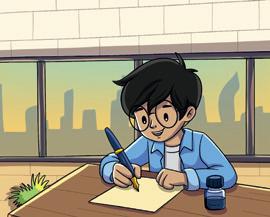



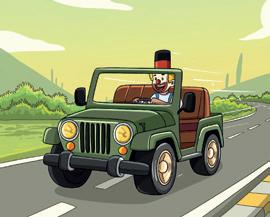
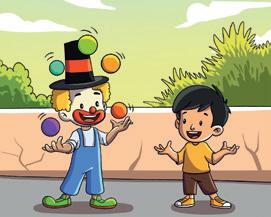

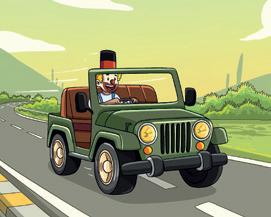
In case a picture or object is unavailable, say aloud the words clearly.
2. Story Time: Show the pictures from the story card of Letter I and ask the children to name the objects starting with /i/ sound (e.g., inkpot, iguana, idlis etc). Then read aloud the story emphasising on the words starting with /i/ sound and ask the children to repeat them after you. Finally, ask the children to underline the words starting with letters Ii. Repeat the same for letters J, K and L.


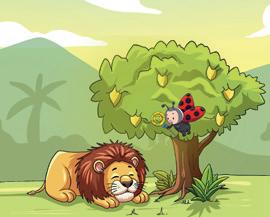
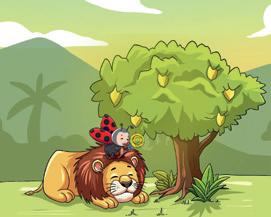
LO: Children will recognise numbers 1–10, count, and make the same number of fingerprints. Resources: Numeracy Workbook, pages 29–30; countable objects (beads, pencils, crayons, etc.); water colours
1. Identifying Numbers 1–10: Write numbers 1–10 randomly on the board. Call one child at a time, say a number (e.g., 9), and ask them to find and point to it. Then, have them count and pick the matching number of objects.
2. Numbers 1–10: Guide children to open page 29 of the Workbook. Have them read the numbers aloud. Then, let them dip their fingers in paint and make the corresponding number of fingerprints. Guide them to make the objects as mentioned in the Workbook.




Complete page 30 of the Workbook. Count the birds and match them with the correct number.
LO: Children will explore the traditional Indian folk art of Pichwai through a colouring activity. Resources: Art and Craft, page 16; crayons
1. Warm-Up: Refer to the picture on page 16 of the Art and Craft book. Ask: What do you see in these pictures? Encourage responses. Say: This is Pichwai Painting. It is a folk art of Rajasthan. Today, we will colour the lotus flowers given in the picture.
2. Pichwai Folk Art: Hand out the pink crayons and say: Use pink to colour the lotus petals. Guide them to colour neatly inside the lines. Encourage them to take their time and enjoy the process.


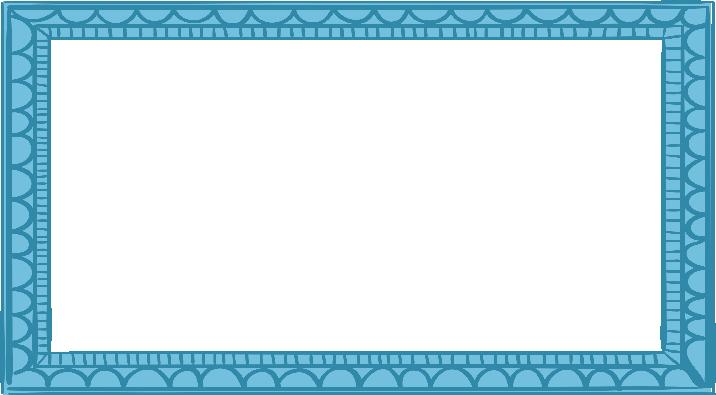


Circle Time
General Awareness
Magic Hands
Making an Origami Tiger
Foundational Literacy Letter Stories M, N, O, P
Foundational Numeracy See and Count Numeracy Skillbook, page 48; Numeracy Workbook, page 31
DIY India Gate Art and Craft, page 17
LO: Children will understand the importance of washing their hands. Resources: Glitter (to represent germs); wet wipes/napkins/hanky; water and soap; a small bowl or sink (to wash hands)
1. Warm-Up: Gather children and ask: What do we use our hands for? Welcome answers like eating, playing, and writing. Show your hands and ask: Do you think they are always clean? Let children share their thoughts. Explain that germs, like invisible glitter, can spread and make us sick.
2. Magic Hands: Apply glitter to one child’s hands and have them shake hands with a friend. Let the children observe how the ‘germs’ spread. Give them a dry tissue and ask if it removes the glitter completely. Then, let them try rinsing with only water and ask: Does the glitter wash away? Finally, guide them to wash their hands with soap and water and observe how it removes the glitter completely. Encourage them to say: Soap and water keep germs away! Repeat with all children.

LO: Children will make an elephant through origami. Resources: Square grey paper (1 per child); black bindis (2 per child); flashcard of wild animals (from Coursebook)
1. Warm-Up: Hand out the flashcards to the children. Ask: Can you identify the elephant? Ask children to hold up the flashcard. Then, ask them to do the following actions:
• Stomp like an elephant.
• Move your hand up and down like the trunk of an elephant.
• Flap two hands like the ears of an elephant.
2. Origami Time: Say: Today we will make an elephant with a sheet of paper Give the square sheets to the children. Demonstrate and guide them to fold the paper to make an elephant. Follow the steps given in the picture to make the elephant. In the end, give 2 black bindis to each child to make the eyes of the elephant. If black bindis are not available, use a black marker to make the eyes of the elephant.


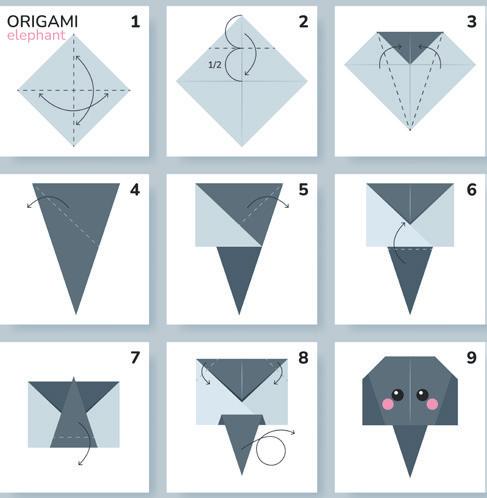





LO: Children will identify letters from M–P, listen to related stories and identify words starting with letters M–P.
Resources: Story Cards (letters M–P); objects or pictures of objects starting with letters M–P; flashcards of M–P (from Skillbook)
Introduction
1. Warm-Up: Hand out the flashcards to the children. Show an object or a picture of an object starting with letters M–P. Ask the children to identify the object and hold up the flashcard with its beginning letter. Check their responses and guide them if needed.
In case a picture or object is unavailable, say the words aloud.
2. Story Time: Show the pictures from the story card of letter M and ask the children to name the objects starting with /m/ sound (e.g., mango, milk, monkey etc). Then read aloud the story emphasising on the words starting with /m/ sound and ask the children to repeat them after you. Finally, ask the children to underline the words starting with the letters Mm. Repeat the same for letters N, O and P. Assist those who need help.


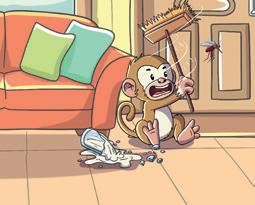
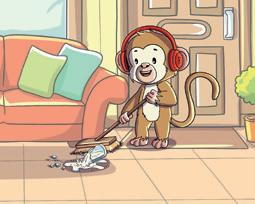


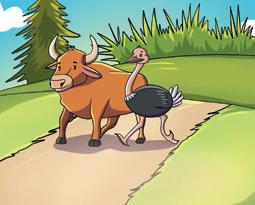



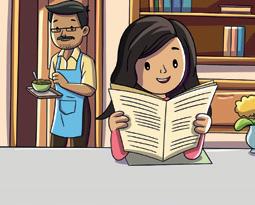






LO: Children will count objects up to 10 and identify numbers from 1–10.
Resources: Numeracy Skillbook, page 48; Numeracy Workbook, page 31; chalk
1. Number Rhyme: Recite the rhyme Counting Fun with expressions and actions to the children, Repeat singing the rhyme at least 2–3 times.
2. Jump and Count: Draw 10 large circles on the floor using chalk. Number them from 1 to 10. Call out a number (e.g., 5!). A child must jump from circle to circle while counting aloud until they reach that number. Repeat the activity till each child gets a chance to participate.
Counting Fun
One, two, buckle my shoe, Three, four, knock on the door, Five, six, pick up the sticks, Seven, eight, lay them straight, Nine, ten, a big fat hen!





3. See and Count: Guide children to open page 48 of the Skillbook. Ask them to look at the picture given. Guide them to count each of the objects one by one and write their numbers in the boxes given below.








Open page 31 of the Workbook. Count the animals and write their numbers in the boxes given below.
LO: Children will recognise the colours of the Indian flag (saffron, white, and green); and tear and paste origami paper within the outline given.
Resources: Art and Craft, page 17; origami papers (orange, green and white colours); glue; Indian Flag
1. Warm-Up: Show a picture of India Gate and ask children if they recognise it. Say: This is the India Gate. Briefly describe it.
2. Discovering the Colours: Display the Indian flag and talk about its colours—saffron, white, green, and the blue Ashoka Chakra. Relate these colours to the India Gate sample, in saffron, white, and green.
3. India Gate: Guide children to open page 17 of the Art and Craft book. Demonstrate how to tear small pieces of saffron, white, and green origami paper and paste them inside the India Gate outline, following the flag’s colour pattern. Assist as needed and encourage creativity.

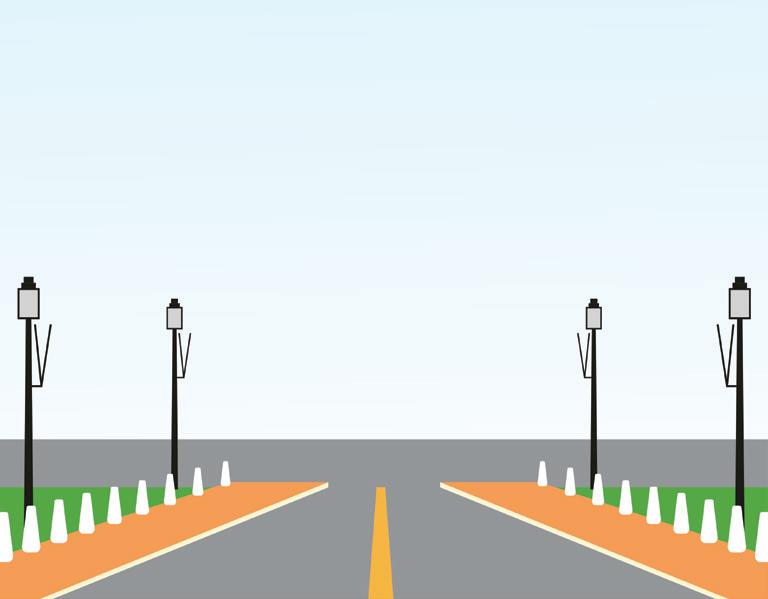










Domain General Awareness
Learning Outcome Children identify and name the wild animals.
Resources Flashcards of wild animals (from Coursebook)
Suggested Method Place the flashcards neatly on a table. Call children one by one. Name an animal and ask them to identify and pick the flashcard showing the animal. Also, ask them to say a sentence about that animal. For example: This is a zebra. It has black and white stripes. Clap for all children and give them a smiley sticker. Ensure everyone gets a turn.
Support for Struggling Learners
Gather the children in a circle and refer to pages 56–57 of the General Awareness book. Introduce and point to each wild animal one by one. Explain them in simple terms. For example, point to the first picture and say: This is an Elephant. It is big and grey, with a long trunk. Repeat the same for all the other animals.
Domain Foundational Literacy
Learning Outcome Children will identify the beginning sound of the objects starting with letters M–P.
Suggested Method Write letters M–P on the board in a random order. Say a word starting with one of these letters and ask the children to point to the correct letter written on the board. Clap and give a smiley or star for each child. Ensure everyone gets a turn.
Support for Struggling Learners
Gather the learners in a circle. Show them some objects or pictures of objects starting with letters M–P and name them, emphasising on the beginning sound. Ask the children to repeat after you. Repeat the same for pictures and/or words in the story cards.
Domain Foundational Numeracy
Learning Outcome Children can identify, trace and write numbers from 1–10.
Resources Countable objects like (balls, erasers, books, pencils, etc.); number flashcards (from Skillbook)
Suggested Method

Support for Struggling Learners
Call children one by one and ask them to count and pick 10 objects. Then, ask them to identify and pick the symbol showing the symbol 10. Clap and give a smiley or star for each child. Ensure everyone gets a turn.
Gather the learners and guide them to count 10 on their fingers. Then, call children one by one and guide them to count and pick 10 objects. Then write 10 on the board and invite children to trace the number with their index fingers.




































Domain
Topic
Circle Time Yoga and Meditation
General Awareness Water Animals
Book & Page
General Awareness, pages 60–61
Foundational Literacy Letters Qq—Sound, Symbol, Key Words Literacy Skillbook, pages 46–47; Literacy Workbook, page 33
Foundational Numeracy Rectangle Numeracy Skillbook, pages 49–50
DIY Rhyme: Five Little Ducks Rhymes and Stories, page 33
LO: Children will perform a simple yoga pose and practise meditation.
Resources: Soft music
1. Warm-Up: Start with simple stretches. Ask the children to stand tall and reach for the sky, then touch their toes. Wiggle their fingers and shake their legs to loosen up. Encourage them to take deep breaths, pretending to smell a flower and blow out a candle.
2. Downward Facing Dog Pose: Demonstrate the pose by placing hands and feet on the ground, forming an upside-down ‘V’.
3. Relaxation and Meditation: Ask the children to sit down, cross their legs and close their eyes. Ask them to breathe deeply ten times.
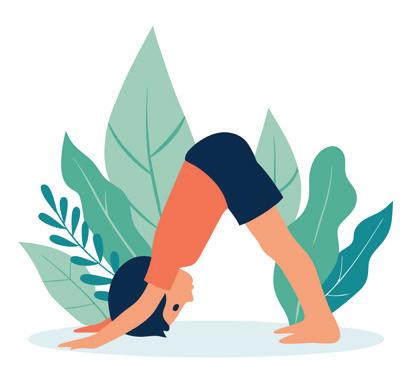
This activity can be done in activity rooms, halls or in the field if it is not hot outside.


LO: Children will identify some water animals and colour them. Resources: General Awareness, pages 60–61; crayons
Introduction
1. Discussion and Exploration: Begin by asking: Have you ever seen animals that live in water? Encourage children to share their experiences of seeing fish, turtles, or ducks in ponds, lakes, or aquariums. Explain: Some animals, like fish, live only in water.
2. Identifying Water Animals: Ask children to open pages 60–61 of the General Awareness book. Point to the water animals one by one and say their names aloud. Ask the children to repeat the names after you. Then, ask them to colour the water animals with crayons.










LO: Children will identify the sound /kw/, the symbols Qq, and key words that begin with Q.
Resources: Literacy Skillbook, page 46–47; Literacy Workbook, page 33
1. Singing for the /kw/ Sound: Introduce the /kw/ sound by singing this rhyme to the children. Repeat it at least 2–3 times, encouraging the children to join in.
Letter Qq Rhyme
/kw/ /kw/ queen wears a crown, /kw/ /kw/ quilt, soft to wrap around. /kw/ /kw/ quail is small and sweet, /kw/ /kw/ quill writes words so neat!
2. Words Starting with /kw/: Ask the children to open to page 34 of the Skillbook. Point to each picture and read its name, emphasising the /kw/ sound. For example: /kw/ /kw/ quail OR /kw/ /kw/ quilt.
3. Symbol Recognition of Letters Qq: Write capital Q and small q on the board. Call the children to trace the letters on the board. Then, ask everyone to trace the letter in the air using their index fingers.
4. Writing Practice of Letters Qq: Ask the children to open to page 46 of the Skillbook. Ask them to trace the letters Qq carefully. Support those who need help.
5. Identifying Objects Starting with Letters Qq: Ask the children to turn to page 47 of the Skillbook. Help them identify the pictures that begin with Qq and colour the correct boxes.







Refer to page 33 of the Workbook, trace and write the letters Qq given.

LO: Children will identify a rectangle and recognise objects that are rectangular in shape.
Resources: Numeracy Skillbook, pages 49–50
1. Shape Hunt and Discussion: Draw a large rectangle on the board. Say: This is a rectangle. It has four sides—two long and two short. Guide the children to trace the shape in the air using their fingers.
2. Movement and Creation: Call two children at a time. Help them spread their arms in an angle, so that together they can form a rectangle. Ensure that everyone participates.
3. Rhyme Time: Recite the rhyme on page 49 of the Skillbook. You may repeat it and ask the children to sing along with you.
4. Rectangle: Ask children to open page 49 of the Skillbook. First, ask them to trace the dotted lines to practise drawing rectangles. Then, draw their attention to the different rectangular objects they see around them, as given in the book. Ask them to think of other rectangular objects or spot them in the classroom.













With the help of an adult, cut out a small rectangle and a big rectangle from colourful paper. Paste both rectangles on page 50 of the Skillbook.
LO: Children will recite the rhyme Five Little Ducks and practise counting. Resources: Rhymes and Stories, page 33; any 5 objects (pebbles, sticks, etc.)
1. Warm-Up: Place five small objects in front of the children. Ask them to count. Then, remove one object and ask them to count how many are left. Keep removing one object each round, reducing the count till nothing is left. Then, place the objects back one by one, counting up to five again.
2. Rhyme Time: Recite the rhyme Five Little Ducks with actions and expressions. Ask the children to follow along. Repeat 4–5 times for reinforcement. You can repeat the song reducing the number of ducks each time until none are left.


Domain
Circle Time Outdoor Game: Fire in the Mountain
General Awareness Water Animals
Foundational Literacy Letters Qq Literacy Skillbook, pages 46–47; Story Cards
Foundational Numeracy Rectangle Numeracy Workbook, page 32
DIY Rhyme: Five Little Ducks Rhymes and Stories, page 33
LO: Children will play a fun outdoor game to enhance their counting skills.
1. Forming Groups: Gather the children and tell them that when you call out a number, for example: Make groups of three!, the children quickly form groups with that number of members. Any child left without a group sits aside. The game continues with different numbers until only three children remain.


LO: Children will recite a rhyme on water animals and identify their names while playing riddles.
Introduction
1. Rhyme Time: Begin by reciting the rhyme Wonders Underwater with voice modulation and expressions. Repeat the rhyme and ask the children to sing it along with you.
Practice
2. Riddle Time: Tell the children that you will give them a riddle about a water animal and they must guess the name of that animal. Repeat each riddle 2–3 times for reinforcement. Assist those who need help.
Wonders Underwater
Splish, splash, in the sea, Fish and turtles swim so free! Octopus waves with wiggly hands, Crabs walk sideways on the sands!
1. I have sharp teeth and tall fins. (Shark)
2. I jump and spin and play all day. (Dolphin)
3. I have a hard shell and swim so slow. (Turtle)
4. I have a large head and 8 arms. (Octopus)
5. I look like a star and have 5 arms. (Starfish)
6. I am the biggest mammal and I spout out water. (Whale)








LO: Children will be able to read and recognise words that begin with letters Qq. Resources: Literacy Skillbook, pages 46–47; story card of letters Qq; chalk
1. Recapping the Sound and Symbol of Letters Qq: Reinforce the sound /kw/ of the letters Qq by pointing at the pictures on page 46 of the Skillbook. Ask the children to name the pictures, emphasising the /kw/ sound. Say: Qq says /kw/ /kw/. /kw/ /kw/ for quilt, /kw /kw/ for quail, etc. Write the letters Qq on the board and invite the children to trace the letters on the board. Then ask them to trace the letter in the air using their index fingers.
2. Reading to Letter Qq: Read the sentences on page 47 aloud at least 4–5 times, focusing on the /kw/ sound. Ask the children to circle the first letter Q and q.
3. Picture Talk: Show the pictures from the story card and discuss them one by one. Ask:
• What do you see in the picture?
• Who is sitting on the quilt?
• What is the girl giving the queen?
• How were the girls waiting in the queue?
4. Interactive Read–Aloud: Read the story aloud, emphasising the words that start with the /kw/ sound. Ask the children to repeat these words after you. Circle the letters Qq in the story card.









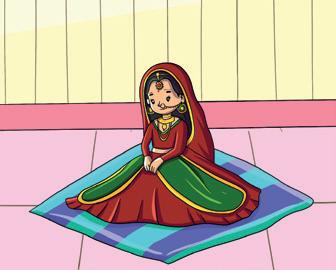




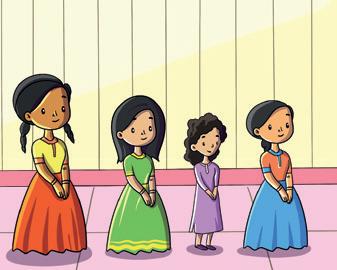
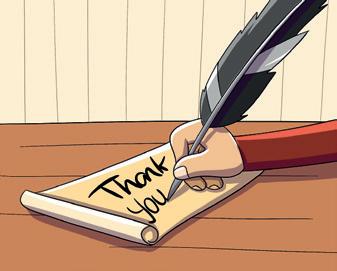
LO: Children will identify the shape of a rectangle and recognise objects that resemble a rectangle. Resources: Numeracy Workbook, page 32; flashcard on rectangle (from Skillbook); blocks or pebbles; crayons
1. Making a Rectangle: Call children one by one and give them a set of pebbles or blocks. Ask them to use these to form a rectangle on the floor or table. Once they complete it, they place their rectangle flashcard inside and say: I made a rectangle!
2. Rectangle: Ask children to open page 32 of the Workbook. Guide them to identify and colour the rectangle. Then, help them match the rectangle with the correct picture.





LO: Children will recite the rhyme Five Little Ducks. Resources: Rhymes and Stories, page 33
1. Rhyme Time: Recite Five Little Ducks with voice modulation and expressions, encouraging the children to join in. Repeat 3–4 times for reinforcement.
2. Duck Parade: Assign five children to be little ducks and one child to be the mother duck. As the rhyme plays, the little ducks waddle around the room, flapping their arms like wings. When the song says: But only four little ducks came back, one duck sits down while the rest continue waddling. This continues until no ducks are left standing. For the final verse, all the ducks return and quack happily together!


If space allows, let all children take turns being the ducks and the mother duck to keep everyone engaged.

Domain
Circle Time
General Awareness
Feelings Charade
More on Animals
General Awareness, pages 62-63
Foundational Literacy Letters Rr—Sound, Symbol, Key Words Literacy Skillbook, pages 48–49; Literacy Workbook, page 34
Foundational Numeracy Oval Numeracy Skillbook, page 51
DIY Knowing Patterns
LO: Children will identify and express basic emotions.
Resources: A soft toy
STEM Exploration, pages 19-21
1. Warm-Up: Make different facial expressions and ask children to guess the feeling. Say: Look at my face! Am I happy or sad? Encourage them to make the same expressions. Repeat with emotions like happy, sad, angry, surprised, and scared.
2. Feelings Charade: Call a child and whisper an emotion (happy, sad, angry, scared, excited). Ask them to act it out without speaking. The rest of the children guess. You may give situations, such as: You get a new toy! You spill your juice! It’s your birthday! Children respond with facial expressions or actions that match the feeling. Repeat the activity till each child gets a chance to participate.

LO: Children will identify and sort farm, wild and water animals.
Resources: General Awareness, pages 62–63; sticker sheet (from Skillbook); flashcards of animals (from Skillbook)
1. Animal Parade: Divide the children into three groups: wild, water, and farm animals. When you call out Farm! the farm animal group walks and makes the sounds of a farm animal. For Water! the water animal group pretends to swim. For Wild! the wild animal group roars like a tiger/lion. Mix up the commands to keep it fun and engaging.
2. Animal Sorting Challenge: Give each child an animal flashcard. Draw three large circles on the floor and label them Farm, Water, and Wild. One by one, call the children to place their flashcards in the correct circle. Alternatively, you may keep three boxes or baskets for each animal type instead of drawing on the floor. Once all animals are sorted, discuss each group by asking:
• What sounds do these animals make?
• Where do they live?
• What do they eat?
Celebrate their efforts with claps and cheers! Assist those who need help.
3. More on Animals: Ask children to open page 62 of the General Awareness book. Guide them to identify the animals and paste the correct tail from the sticker sheet. Then, ask them to open page 63 and help them place the correct animals under each category. Support children who need assistance.










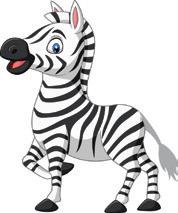
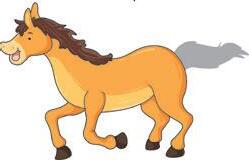

LO: Children will identify the sound /r/, the symbols Rr, and key words that begin with R. Resources: Literacy Skillbook, pages 48–49; Literacy Workbook, page 34
1. Singing for the /r/ Sound: Introduce the /r/ sound by singing this rhyme to children. Repeat it at least 2–3 times, encouraging the children to join in.
Practice
Letter R Rhyme
/r/ /r/ rabbit, runs so fast, /r/ /r/ rainbow, colours that last! /r/ /r/ rocket, up it goes, /r/ /r/ rose, a flower that grows!
2. Words Starting with /r/: Ask the children to open to page 48 of the Skillbook. Point to each picture and read its name, emphasising on the /r/ sound. For example: /r/ /r/ rat OR /r/ /r/ robot.

3. Symbol Recognition of Letters Rr: Write capital R and small r on the board. Call the children to trace the letters on the board. Then, ask everyone to trace the letters in the air using their index fingers.
4. Writing Practice of Letters Rr: Guide the children to page 48 of the Skillbook. Ask them to trace the letters Rr carefully. Support those who need help.
5. Identifying Objects: Ask the children to turn to page 49 of the Skillbook. Guide them to follow the steps given to draw the robot. After that, ask them to colour their robots.







Refer to page 34 of the Workbook, trace and write the letters Rr given.

LO: Children will identify and recognise objects that are oval in shape.
Resources: Numeracy Skillbook, page 51; some oval shaped objects (egg, balloon, oval ball); objects of other shapes; chalk; crayons
1. Oval Hunt: Mix the objects and place them on the table. Say: Today, we are going on an Oval Hunt! Draw a big oval on the board and explain that this is today’s special shape. Guide children to find objects shaped like an oval (e.g., an egg, a balloon). Each time they find one, they must say: Oval, oval, I found an oval!
2. Tracing an Oval: Call children one by one to trace the shape with chalk. Ensure everyone gets a turn. After that, guide everyone to trace the shape in air with their index finger.
3. Oval: Recite the rhyme from page 51 of the Skillbook together. Then, ask children to open page 51. Guide them to identify the oval-shaped objects, trace the ovals, and colour them.
LO: Children will create patterns using actions and objects.













Resources: STEM Exploration, pages 19–21; objects like crayon, building blocks, paintbrushes, etc.
1. Pattern Game: Gather children in a circle and start a simple movement pattern, such as clap, stomp, clap, stomp. Encourage them to follow along. Then, change it to something fun like jump, sit, jump, sit or pat head, touch toes, pat head, touch toes.
2. Pattern Train: Give children building blocks and crayons. Start a simple pattern on the floor, such as block, crayon, block, crayon. Ask them to continue the pattern like adding ‘train cars’ to complete it. Challenge them to create their own unique patterns using different objects.







Circle Time Find the Odd One Out
General Awareness Fun Quiz: Animal Kingdom
Foundational Literacy Letters Rr Literacy Skillbook, pages 48–49
Foundational Numeracy Semicircle Numeracy Skillbook, page 52
DIY Knowing Patterns STEM Exploration, pages 19–21
LO: Children will identify which object is different from the rest based on a common characteristic.
Resources: Common classroom objects
1. Spot the Different One: Sit in a circle and place three similar objects and one different object in the centre (e.g., three chalks and one toy car). Ask: Which one is different? Why? Encourage children to take turns identifying and explaining their choice.
2. Odd One Out Action: Call children one by one and say three related words along with one odd word (e.g., apple, banana, orange, chair). If the child correctly spots the odd one, they do a fun action like clapping or jumping. Repeat with different word sets so everyone gets a turn. Assist those who need help.
Use themes like animals, colours, or school objects to make it more exciting.

LO: Children will identify and classify animals into home, wild, farm, or water categories through an interactive quiz.
Resources: Animal flashcards (from Skillbook)
1. Spot the Animal: Give each child a flashcard. Call out an animal’s name in random order and ask them to hold up the correct flashcard. Monitor and guide them as needed.

2. Animal Quiz: Call children one by one. Say an animal’s name (e.g., dog, lion, cow, fish). The child must say aloud where it lives: home, wild, farm, or water. Encourage quick thinking and participation. Ask at least three animals per child.
3. Group Sorting Game: Give each child an animal flashcard. Call out a category (farm, wild, water, or home). Children with matching animals step forward and say their animal’s name aloud. Repeat until all animals are sorted correctly.







LO: Children will be able to read and recognise words that begin with letters Rr. Resources: Literacy Skillbook, pages 48–49; story cards; chalk

1. Recapping the Sound and Symbol of Letters Rr: Reinforce the sound /r/ of the letters Rr by pointing at the pictures on page 48 of the Skillbook. Ask the children to name the pictures, emphasising the /r/ sound. Say: Rr says /r/ /r/. /r/ /r/ for rat, /r/ /r/ for robot, etc. Write the letters Rr on the board and invite the children to come forward and trace the letters with chalk. Then ask them to trace the letters in the air using their index fingers.








2. Reading to Letters Rr: Guide the children to open to page 49 of the Skillbook. Read the sentences aloud at least 4–5 times, focusing on the /r/ sound. Ask the children to circle the first letter R and r.
3. Picture Talk: Show the pictures from the story card and discuss them one by one. Ask:
• What do you see in this picture?
• What is the rabbit holding?
• What did Reena and Rocky do when it starts to rain?
• What did they see in the sky?
• Who is Reena’s best friend?
4. Interactive Read-Aloud: Read the story aloud, emphasising the words that start with the /r/ sound. Ask the children to repeat these words after you.
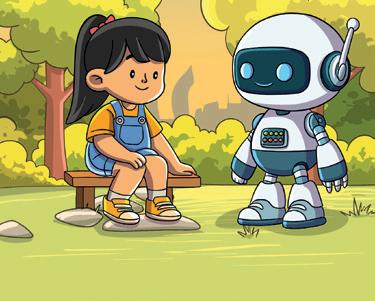
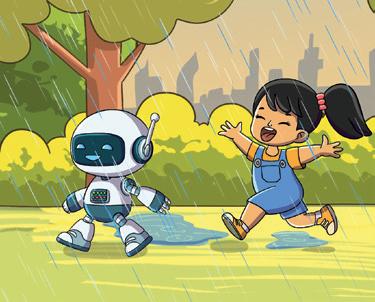


Circle the letters Rr in the story card.
LO: Children will identify a semicircle and recognise objects that are semicircle in shape. Resources: Numeracy Skillbook, page 52; cutouts of semicircles (1 per child); crayons
1. Spot the Semicircle: Draw different shapes on the board, including a semicircle. Ask: Which shape looks like half of a circle? Let children answer. Then, guide them to identify the semicircle and trace it in the air with their index fingers.
2. Creating with Semicircles: Give each child a semicircle cutout. Encourage them to turn it into something fun, like a boat, a rainbow, or a watermelon slice, by adding details with crayons. Let them share their creations with the class.
3. Semicircle: Ask children to open page 52 of the Skillbook. Ask them to trace the dotted lines and colour the shape. Then, talk about the various semicircle shapes shown in the book. You may tell the children about the half-moon that they would get to see on some nights.












LO: Children will create simple patterns in a group. Resources: STEM Exploration, pages 19–21; 5 sets of objects (each set containing 3 blocks, 3 paintbrushes, and 3 crayons)
1. Making Patterns Using 2 Objects: Divide children into 5 groups and give each group a set of objects. Ask them to create a simple pattern using any two objects (e.g., block, crayon, block, crayon). Walk around, observe, and guide those who need help.
2. Making Patterns Using 3 Objects: Now, challenge the groups to create a pattern using all three objects (block, crayon, paintbrush, block, crayon, paintbrush). Invite children to describe their patterns to the class.
1. Create a simple pattern with the objects, like ‘block, brush, block, brush.’

2. Place the pattern on a table, chalk tray, or floor where children can easily see them.
3. Repeat this with different patterns, such as “crayon, brush, crayon, brush” or “plastic animal, block, plastic animal, block.”
4. Arrange the children in small groups and provide each group with a set of objects.
5. Ask them to create their own patterns using the objects.
20 Let’s Do:
6. As they work, move around the room to provide assistance and ensure they understand the concept of patterns. LKG STEM Exploration_9P











Domain General Awareness
Learning Outcome
Children will identify and name different water animals.
Resources General Awareness, pages 60–61
Suggested Method Call the children one by one. Give them a riddle and ask them to guess the water animal. For example, ask: I look like a star. Who am I? / I have 8 arms. Who am I? Ensure every child gets a turn. Appreciate their effort.
Support for Struggling Learners
Ask the children to open to pages 60–61 of their General Awareness books. Point to each water animal, read its name and ask the children to repeat after you. Then, pointing at each animal, ask them its name and tell to repeat the answer with you. For example, pointing at the whale, ask: What is the name of this animal? Whale! Repeat this for all the water animals.
Domain Foundational Literacy
Learning Outcome Children associate the /kw/ and /r/ sounds with the symbols of Qq and Rr respectively, and read words starting with these letters.
Resources Objects or pictures starting with /kw/ and /r/ sounds; chalks; letter Q and R story cards; letters Qq and Rr flashcards (from Skillbook)
Suggested Method Tell the children that you will slowly read the stories of letters Qq and Rr from the story cards. Each time they hear a word that starts with these letters, they must hold up the correct flashcard. Observe their response and appreciate them for their effort.
Support for Struggling Learners
Gather the learners in a circle. Show them some objects or pictures of objects starting with letter Q. Read its name aloud highlighting the starting sound. For example, say: /kw/ /kw/ quail and ask the children to repeat after you. Repeat the same for pictures and/or words in the story card. Then write letters Q and q on the board, call the children one by one and ask them to trace the letters with their index fingers. Repeat the same for letter R.
Domain Foundational Numeracy
Learning Outcome Children will identify objects that have the shapes of a rectangle, oval and semicircle.

Resources Chalks; flashcard of shapes—rectangle, oval and semicircle (from Skillbook)
Suggested Method Give each child a shape flashcard. Draw a rectangle, an oval, and a semicircle on the board. Call children one by one and guide them to match their flashcard with the correct shape by placing it against the corresponding drawing. Ensure every child gets a turn. Appreciate their effort.
Support for Struggling Learners
Gather the learners together and draw a rectangle on the board. Say: This is a rectangle. It has four sides—two short and two long. Then, ask the children to find and hold up their flashcard showing a rectangle. Repeat the same process for an oval and a semicircle, guiding the children to recognise and match each shape correctly.



































Circle Time Yoga and Meditation
General Awareness Birds
General Awareness, page 64
Foundational Literacy Letters Ss Literacy Skillkbook, page 50; Literacy Workbook, page 35
Foundational Numeracy Do and Learn Numeracy Skillbook, page 53
DIY The Colourful Egg Art and Craft, page 18
LO: Children will do a simple yoga pose and practise meditation. Resources: Music, if possible
1. Warm-Up: Gather children in a circle and say: Let’s pretend to be trees! Guide them to stretch their arms up like tree branches and sway gently like trees in the wind.
2. Tree Pose Yoga: Demonstrate the pose step by step first and then ask the children to follow along with you. Say:
• Stand tall with your feet together.
• Lift one foot and place it on the side of the other leg (below the knee).
• Bring your hands together at the chest or raise them above the head like branches.
• Balance yourself and take deep breaths. Let the children try, and assist them as needed. Encourage switching legs for balance practice.
3. Relaxation and Meditation: Ask children to close their eyes while standing, play soft music in the background, if possible. Say: Imagine you are a strong, peaceful tree. Feel the wind, the sunshine, and the rain helping you grow. Guide them to take slow breaths and feel steady like a tree.

LO: Children will identify and name some common birds around them.
Resources: General Awareness, page 64

1. Warm-Up: Start by asking children to name birds they see around them. Encourage them to describe the birds’ colours, size, or special features. Invite them to share the bird’s name in their home language as well.
2. Rhyme Time: Recite the rhyme Chirpy Little Bird with expressions and voice modulation. Repeat it 3–4 times. Encourage children to sing along.
Chirpy Little Bird
Chirpy little bird, so small and sweet, Hops on the ground with tiny feet. Flaps its wings and starts to fly, Up, up, up into the sky!

3. Birds: Refer to page 64 of the General Awareness book. Point to each picture and introduce the birds one by one. For example, point to the first picture and say: This is a sparrow. It is a tiny brown bird. Ask children to repeat the names aloud. Continue the same for all the birds.
If possible, take children outside to spot different birds around the school campus.







Resources: Literacy Skillbook, page 50; Literacy Workbook, page 35
1. Singing to Letters Ss: Introduce the letters Ss with a fun rhyme. Repeat it at least 2–3 times, encouraging the children to join in.


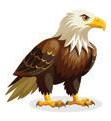

LO: Children will identify the symbol and sound of the letters Ss and write the letters.
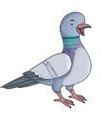





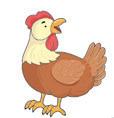
Letter Ss
/s/ /s/ sun, shining so bright, /s/ /s/ stars, twinkling at night. /s/ /s/ snake, slithers away, /s/ /s/ swing, where we play. /s/ /s/ sail, on the blue sea today!
2. Listening to the /s/ Sound: Guide the children to page 50 of the Skillbook. Point to each picture and say the word, emphasising on the /s/ sound. For example: /s/ /s/ sun OR /s/ /s/ snake.
3. Symbol Recognition of Letters Ss: Write capital S and small s on the board. Call a few children to trace the letters on the board. Then, ask everyone to finger trace the letters in the air using their index fingers.
4. Writing Practice of Letters Ss: Guide the children to page 50 of the Skillbook. Ask them to trace the letters Ss carefully. Support those who need help.
5. Identifying Objects with Letters Ss: Ask the children to turn to page 51 of the Skillbook. Say: Let’s find the objects that start with the /s/ sound and circle them. Assist those who need help.
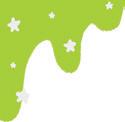







Refer to page 35 of the Workbook, trace and write the letters S and s.
LO: Children will identify and name shapes in their surroundings.
Resources: Numeracy Skillbook, page 53; Shapes flashcards (from Skillbook); chalk; pebble
1. Warm-Up: Place the flashcards on a table and call one child at a time. Say a shape have them find and show the correct flashcard. Then, ask them to find a flashcard showing an object with the same shape.
2. Shapes Hopscotch: Draw a hopscotch grid with different shapes instead of numbers. Call out a shape, and a child throws a pebble onto that shape. They hop through the grid, stepping only on matching shapes while saying its name aloud. Repeat for all children.
3. Do and Learn: Guide children to open page 53 of the Skillbook, identify and name the shapes, and match them with the correct objects. Assist as needed.











LO: Children will recognise and follow the colour codes to colour an egg correctly.
Resources: Art and Craft, page 18; crayons
1. Warm-Up: Guide children to look at the picture of an egg on page 18 of the Art and Craft book. Ask: What do you see? What shape is it? What colours do you notice? Welcome all responses and introduce the activity: Today, we will decorate our eggs using a special colour code!
2. The Colourful Egg: Guide the children to follow the given colour code and colour the egg. Assist those who need help and encourage creativity.






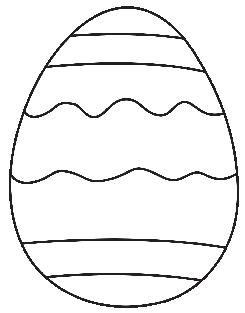



Domain
Topic of the Day
Circle Time Dumb Charades!
General Awareness Birds
Book & Page
General Awareness, page 64
Foundational Literacy Letters Ss Literacy Skillbook, page 51; Story Cards
Foundational Numeracy Art from Shapes
DIY Origami Nest
Numeracy Workbook, page 33
Art and Craft, page 19
LO: Children will play a game of dumb charades to enhance their creativity and imagination.
1. Warm-Up: Gather the children in a circle and say: We are going to play a fun game called Dumb Charades! In this game, one child will act something without speaking, and the others will guess what it is! Demonstrate by acting an easy action like brushing teeth or flying like a bird.
2. Dumb Charades: Whisper an action (e.g., jumping, clapping, sleeping) to a child. The child then acts it out while the others try to guess. Encourage everyone to participate, give hints if needed, and cheer for the correct guesses. Repeat until each child gets a turn.

LO: Children will identify and name different birds through an interactive and engaging session. Resources: General Awareness, page 64
1. Rhyme Time: Begin by reciting the rhyme Chirpy Little Bird from the previous session with voice modulation and expressions. Repeat 3–4 times and encourage children to sing along.
2. Birds: Guide children to page 64 of the General Awareness book. Ask: Can you name these birds? What do birds have? Encourage responses like (feathers, wings, beak, etc.). Recap the name of the birds and ask children to circle the birds they have seen.












3. Riddle Time: Read each riddle aloud and encourage children to guess the bird. After each guess, point to the bird’s picture in the book and discuss its features. Encourage each child to respond and assist those who need help.






Helping Makes Us Happy
I am small and say ‘chirp chirp.’ I hop around. Who am I? (Sparrow) I am green with a red beak. I can learn to talk! Who am I? (Parrot) I have big, colourful feathers. I love to dance! Who am I? (Peacock)
I say ‘quack quack’ and swim in the pond. Who am I? (Duck)
I am black and say ‘caw caw.’ Who am I? (Crow)
I fly very high and have sharp eyes. Who am I? (Eagle)
I wake up at night and say ‘hoot hoot.’ Who am I? (Owl)
I say ‘coo coo’ and live in cities and parks. Who am I? (Pigeon)
I lay eggs and say ‘cluck cluck’. Who am I? (Hen)

LO: Children will practise reading aloud a few words and phonic stories that begin with letters Ss. Resources: Literacy Skillbook, page 51; story cards
1. Recalling the Sound and Symbol of Letters Ss: Reinforce the /s/ sound of the letters Ss by pointing to the pictures on page 50. Ask the children to name the pictures, emphasising the /s/ sound. Say: S says /s/ /s/. /s/ /s/ sun OR /s/ /s/ snake. Write the capital S and small letter s on the board. Invite a few children to come forward and trace the letters on the board. Then ask them to trace the letters Ss in the air using their index fingers.

2. Reading to Letters Ss: Guide the children to page 51 of the Skillbook. Read the sentences aloud at least 4–5 times, focusing on the /s/ sound. Ask the children to circle the first letters S and s.
3. Picture Discussion: Show the pictures on the letters Ss story card and discuss them. Ask questions such as:
Picture 1: What do you see in the picture?
Picture 2: What birds do you see?
Picture 3: What flowers do you see?
Picture 4: How does the day look?
4. Interactive Read-Aloud: Read the story aloud, emphasising the words that start with the /s/ sound. Ask the children to repeat these words after you.







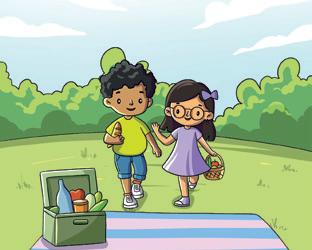



Refer to the letters Ss story card and circle the words starting with letters S and s in the story card.

LO: Children will recognise and use oval and semicircle shapes to create fun artwork.
Resources: Numeracy Workbook, page 33; large cutouts of shapes oval and semicircle; chalks
1. Warm-Up: Show the cutouts of an oval shape and ask: What shape is this? Take a few responses and say: This is an oval. Then, ask children to name some objects that resemble an oval. Repeat the same for a semicircle.
2. Identifying Shapes: Draw some ovals and semicircle on the floor. Call children one by one and say the name of a shape aloud. Ask children to identify and jump on that shape. Ensure that everyone gets a turn.
3. Art From Shapes: Ask children to open page 33 of the Workbook. Guide them to identify the shapes. Ask them to look at the pictures and create artwork using the given shapes. Assist those who need help.










LO: Children will complete making a nest by pasting stickers and small strips of newspapers.
Resources: Art and Craft, page 19; sticker sheet (from Art and Craft Book); glue; old newspapers
1. Warm-Up: Ask: Where do birds live? Take a few responses and say: Birds live in a nest. Today we will make a nest.
2. Origami Nest: Provide materials to the children and guide them to stick brown-colored paper along the dotted lines to form a nest. Demonstrate how to tear small strips from an old newspaper, then let them tear their own. Encourage them to stick the torn strips onto the nest to create a textured effect. Assist as needed.




You can also make a nest, with straws and twigs, to show children how an actual nest looks.
Circle Time Bird Chain
General Awareness What Comes Next?
Foundational Literacy Letters Tt
Foundational Numeracy Odd One Out
DIY Rhyme: Little Lamb
General Awareness, page 65
Literacy Skillbook, page 52; Literacy Workbook, page 36
Numeracy Workbook, page 34
Rhymes and Stories, page 34
LO: Children will enhance creativity, imagination, and non-verbal communication skills through gestures and actions.
1. Warm-Up: Begin with a discussion by asking children to name some birds they know and describe how they move. Talk about how birds often fly together in flocks. Explain that they will play a fun game pretending to be birds flying together.
2. Forming a Bird Chain: Choose one child as the Leader Bird, or start as the leader yourself. The Leader Bird flaps their arms and moves around while making bird sounds. The other children follow behind, copying the movements and sounds to form a growing Bird Chain. After a few rounds, switch the Leader Bird so different children get a turn. Encourage them to experiment with different bird sounds and flying styles. Keep the game lively and engaging, allowing children to express themselves through movement.
Tip
Add variations like flapping faster, slower, hopping, or pretending to land on a tree (stooping and crouching).

LO: Children will identify and complete simple animal patterns by circling the correct animal. Resources: General Awareness, page 65

1. Warm-Up: Begin with a fun pattern game. Demonstrate a simple sequence, such as clap, hop, clap, hop and ask: What comes next? Pause and welcome all responses. Explain that patterns follow a sequence, and today, they will find missing animals in patterns.
2. Identifying Patterns: Draw simple patterns on the board using shapes or objects. Call on different children to identify the sequence and ask: What comes next? Encourage them to guess and assist those who need help.
3. What Comes Next: Guide the children to open page 65 of the General Awareness book. Ask them to observe the birds and animals in the patterns. Have them identify and circle the correct animal that comes next in each row.
Choose a favourite animal or bird and learn one fun fact about it with help from parents. Practise saying the facts at home. Bring a picture, toy, or drawing of the chosen animal or bird.
































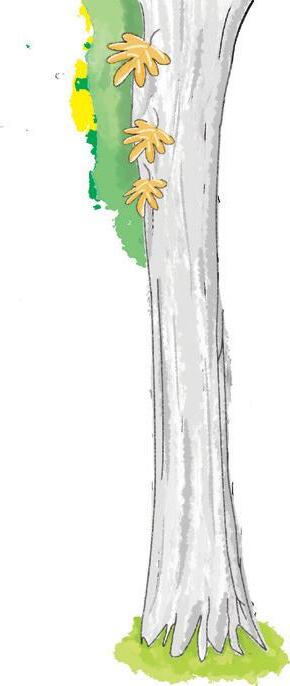

LO: Children will identify the symbol and sound of the letter Tt and write the letters.
Resources: Literacy Skillbook, page 52; Literacy Workbook, page 36; chalk
1. Singing to Letters Tt: Introduce the letter Tt with a fun rhyme. Repeat it at least 2–3 times, encouraging the children to join in.
Letter TT
/t/ /t/ top, spinning around, /t/ /t/ tree, tall from the ground. /t/ /t/ tiger, big and strong, /t/ /t/ tomato, juicy all along!
2. Listening to the /t/ Sound: Guide the children to page 52 of the Skillbook. Point to each picture and say the word, emphasising on the /t/ sound. For example: /t/ /t/ tiger, OR /t/ /t/ top
3. Symbol Recognition of Letters Tt: Write capital T and small t on the board. Call a few children to trace the letters on the board. Then, ask everyone to finger trace the letters in the air using chalk.
4. Writing Practice of Letters Tt: Guide the children to page 52 of the Skillbook. Ask them to trace the letters Tt carefully. Support those who need help.
5. Identifying Objects with Letters Tt: Ask the children to turn to page 53 of the Skillbook. Say: Let’s find the objects that start with the /t/ sound and circle them. Assist those who need help.




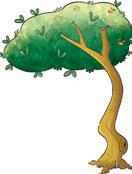
Refer to page 36 of the Workbook, trace and write the letters Tt given.
LO: Children will recognise different shapes and identify the odd one out from a set of given shapes.
Resources: Numeracy Workbook, page 34; shapes flashcards (from Skillbook)
1. Warm-Up: Hand out the shape flashcards to the children. Call out the name of a shape and ask children to hold up the flashcard showing the shape. Monitor and guide children as required.
2. Knowing Shapes Pattern: Draw two same shapes and one different shape on the board (for example: circle, square and circle). Ask children to identify and find the odd one out. Repeat 5–6 times with different sets of shapes.
3. Odd One Out: Ask children to open page 34 of the Workbook. Guide them to identify the given shapes. Let them colour the shapes that are different in each row.
LO: Children will listen to and recite the rhyme Little Lamb
Resources: Rhymes and Stories, page 34; picture or a soft toy of a lamb
1. Warm-Up: Ask children to open page 34 of the Rhymes and Stories book. Show the pictures of the animals and ask: Do you know what animals are these? Take a few responses and say: These are baby sheep. They are called lamb. Lambs have white fluffy wool
2. Rhyme Time: Sing the rhyme Little Lamb aloud with voice modulation and expressions. Repeat it 3–4 times and encourage the children to join in.



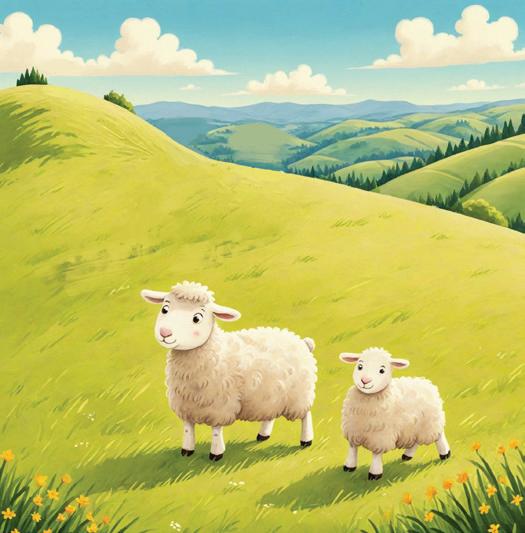

Circle Time Nature Walk
General Awareness Fun Facts About Animals or Birds
Foundational Literacy Letters Tt Literacy Skillbook, page 53; Story Cards
Foundational Numeracy Shape Train
DIY Rhyme: Little Lamb
Numeracy Workbook, page 35
Rhymes and Stories, page 34
LO: Children will explore and identify simple elements of nature such as trees, flowers, birds, and insects using their senses.
1. Warm-Up: Begin with a short conversation: What do we see when we go outside? Talk briefly about trees, flowers, birds, and insects. Say: Today, we are going on a nature walk to explore the world around us!
2. Nature Walk: Take children outdoors to a garden, playground, or any safe open area within the school campus. Encourage them to explore using their senses:
• Look: Observe the colours of leaves, flowers, and birds.
• Listen: Hear birds chirping, leaves rustling, or the wind blowing.
• Touch: Feel the texture of tree bark (if safe), soft grass, or flower petals.
• Smell: Inhale the scent of flowers or fresh outdoor air.
Ask simple guiding questions like: What do you see? What colour is this flower? Can you hear the birds chirping? Invite children to close their eyes and listen quietly. Then ask: What did you hear? (e.g., birds, wind, footsteps). Encourage each child to give responses.

LO: Children will express themselves by sharing a fun fact about their favorite animal or bird.
1. Warm-Up: Begin with a friendly question: Can you name some animals and birds you like? Model the activity by sharing a fun fact: Did you know that elephants use their trunks to drink water like a straw? Build excitement by telling the children: Today, you all will get a chance to share something interesting about your favourite animal or bird!
2. Sharing the Fun Fact: Invite children one by one to stand up and share their fun fact. If they have brought a picture, toy, or drawing, encourage them to show it while speaking. Support them with gentle prompts, if needed:
• What does your animal eat?
• Where does it live?
• What sound does it make?
Encourage the rest of the class to listen carefully and clap after each turn.
Celebrate each child’s effort, and gently encourage shy children to participate.







LO: Children will practise reading aloud a few words and phonic stories that begin with letters Tt.
Resources: Literacy Skillbook, page 52; letter T story card; chalk
1. Recalling the Sound and Symbol of Letters Tt: Reinforce the /t/ sound of the letters Tt by pointing to the pictures on page 51. Ask the children to name the pictures, emphasising the /t/ sound. Say: T says /t/ /t/. /t/ /t/ top OR /t/ /t/ tiger. Write the capital T and small letter t on the board. Invite a few children to come forward and trace the letters Tt on the board. Then ask them to trace the letters Tt in the air using their index fingers.
2. Reading to Letters Tt: Guide the children to page 52 of the Skillbook. Read the sentences aloud at least 4–5 times, focusing on the /t/ sound. Ask the children to circle the first letter T and t.
3. Picture Discussion: Show the pictures on the letters Tt story card and discuss them. Ask questions such as:
Picture1: What is the tiger doing?
Picture 2: Where is the water coming from?
Picture 3: Which animal do you see with the tiger?
Picture 4: What do you think the tiger is doing?
4. Interactive Read-Aloud: Read the story aloud, emphasising the words that start with the /t/ sound. Ask the children to repeat these words after you.




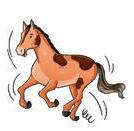


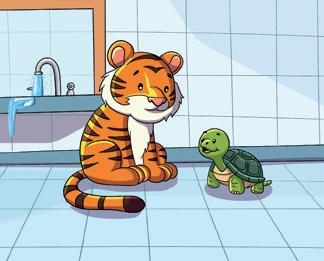
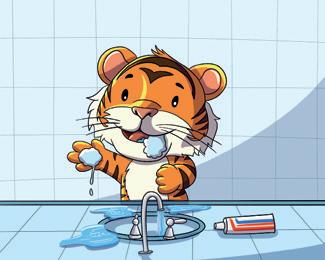
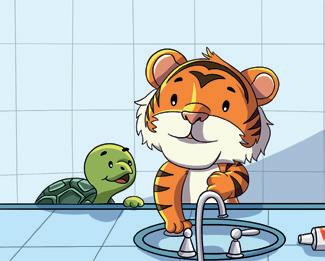
Refer to the letters Tt story card and read the story. Circle the letters Tt in the story card.

LO: Children will follow a simple colour code to colour a shape train.
Resources: Numeracy Workbook, page 35; shapes flashcards (from Skillbook); objects resembling shapes
1. Shape Hunt: Place the flashcards face down on a table. Call children one at a time to pick a flashcard. Ask them to identify the shape and look around the room to find an object that matches the shape. Encourage them to say the name of the shape and the object aloud.
2. Shape Train: Guide children to open page 35 of the Workbook. Help them colour the shapes in the train’s engine using the given colour codes. As they colour, encourage them to name both the shapes and the colours.
LO: Children will listen to and recite the rhyme Little Lamb.
Resources: Rhymes and Stories, page 34; picture or a soft toy of a lamb
1. Rhyme Time: Sing the rhyme Little Lamb aloud with voice modulation and expressions. Repeat it 2–3 times and encourage the children to join in.
2. Hopping like Lambs: Clear a safe space in the classroom or outdoor area. Say: The little lambs are hopping in the field! Let’s hop like them! Children line up on one side. On your cue Hop, hop, little lambs! they hop from one side to the other. You can add variations like: Hop on one foot. / Hop fast or slow.
You can play the audio of the rhyme while playing the game.
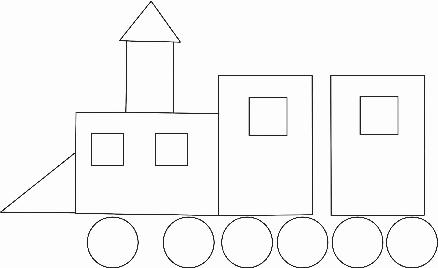












Domain
General Awareness
Learning Outcome Children can identify and describe some common birds.
Resources General Awareness, page 64
Suggested Method Call children one by one. Let them refer to page 64 of the General Awareness Book. Ask them to identify any two birds and say something about it. You may ask questions like:
• Name any two birds?
• What are their colours?
• What sound do they make?
Clap loudly for each child and give a smiley after completion. Repeat the process until all children get their turn.
Support for Struggling Learners
Gather the children in a circle and guide them to open page 64 of the General Awareness book. Introduce each bird by pointing to its picture one by one. Say the name of the bird aloud and ask the children to repeat after you. Share a simple fact about each bird to make it more engaging. For example, point to the first picture and say: This is a duck. It can swim in water. It says ‘quack quack’. Repeat the process for all the other birds, encouraging children to listen, repeat, and enjoy learning fun facts.
Domain Foundational Literacy
Learning Outcome Children can connect the sounds and symbols of Ss and Tt, and say common words starting with them.
Resources Objects or pictures starting with /s/ and /t/ sounds; chalk; letters Ss and Tt story cards
Suggested Method
Support for Struggling Learners
Write letters S and T on the board, call children one by one to trace the letters with their index fingers and identify a few objects starting with /s/ and /t/ sounds. Finally, use the story cards to read the story aloud while emphasising the words that start with the /s/ and /t/ sounds. Ask the children to repeat these words after you.
Gather the learners in a circle. Show them some objects or pictures of objects starting with the letter S. For example, say: /s/ /s/ sun OR /s/ /s/ socks and ask the children to repeat after you. Repeat the same for pictures and words in the story card. Then write letters S and s on the floor, call the children one by one and ask them to trace the letters with their index fingers. Repeat the same for the letter T.
Domain Foundational Numeracy
Learning Outcome Children can identify the objects with different shapes in their surroundings.
Resources Shapes flashcards (from Skillbook); objects of different shapes
Suggested Method Call children one by one and ask them to match the objects with the correct shapes from the flashcards. Clap loudly for each child and give a smiley after completion. Repeat the process until all children get their turn.
Support for Struggling Learners
Pair a struggling learner with a confident peer. Give each pair a set of shape flashcards. The buddy will show one flashcard at a time, say the name of the shape clearly, and encourage their partner to repeat it. Provide support and monitor as needed to ensure positive and meaningful interaction.


















The early years shape a child’s cognitive, social, and emotional growth. The DAWN Curriculum, aligned with NEP 2020 and NCF-FS 2022, integrates the Panchakosha framework to nurture well-rounded development—physical, emotional, intellectual, social, and moral. This manual ensures progressive, engaging, and hands-on learning through a structured teaching model, and provides special days dedicated for reinforcement and enrichment activities.
Equipped with helpful alerts, pro-tips, and best practices, this manual makes teaching seamless, interactive, and impactful. With play-based activities and multisensory techniques, teachers can confidently create a stimulating, joyful, and inclusive classroom.
• 180-Day Teaching Plan: Well-paced progression with built-in revision days.
• 4+1 Teaching Model: Structured learning with a dedicated reinforcement day.
• Panchakosha Framework: A holistic approach to early childhood development.
• DIY & Hands-on Learning: STEM, Art & Craft, storytelling, and interactive activities.
• Dynamic Circle Time: Engaging discussions, mindfulness, and movement-based activities.
• Multisensory & Play-Based Approach: Enhancing retention through interactive learning.
• Error Alerts & Pro-Tips: Practical guidance for smooth and effective teaching.
Uolo partners with K-12 schools to provide technology-enabled learning programs. We believe that pedagogy and technology must come together to deliver scalable learning experiences that generate measurable outcomes. Uolo is trusted by over 15,000+ schools across India, Southeast Asia and the Middle East.
ISBN 978-81-985187-0-5

hello@uolo.com